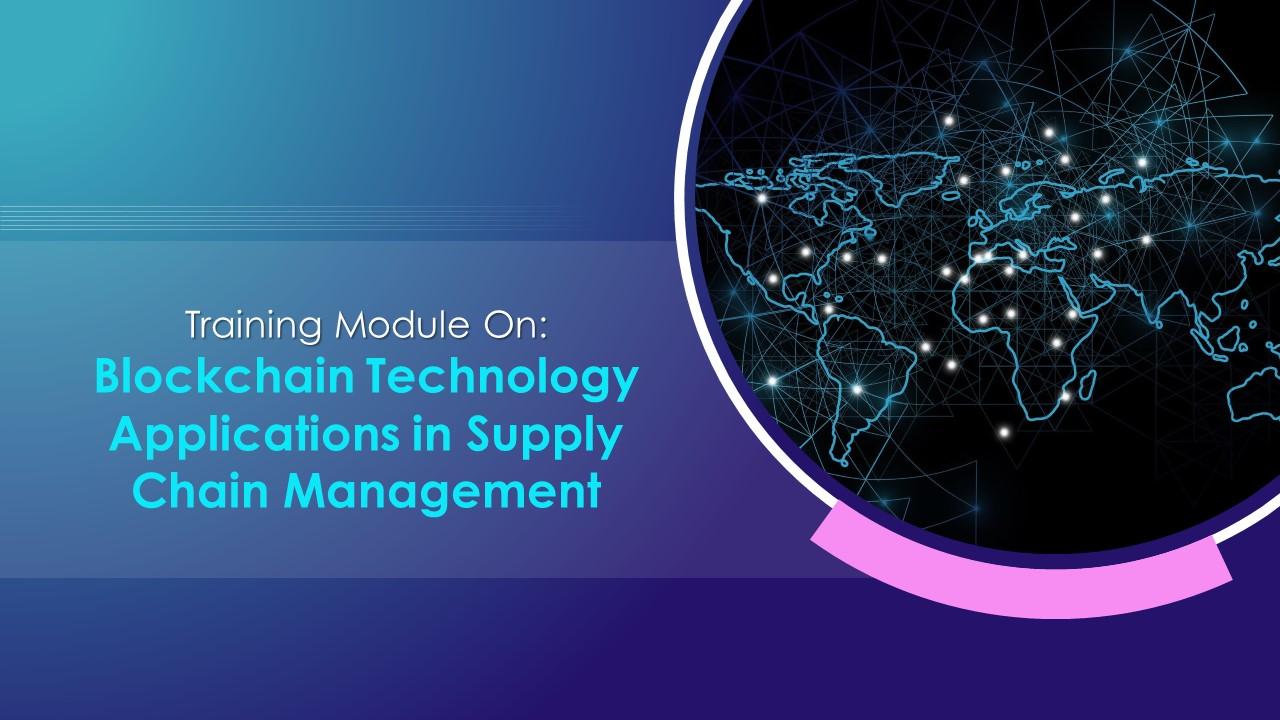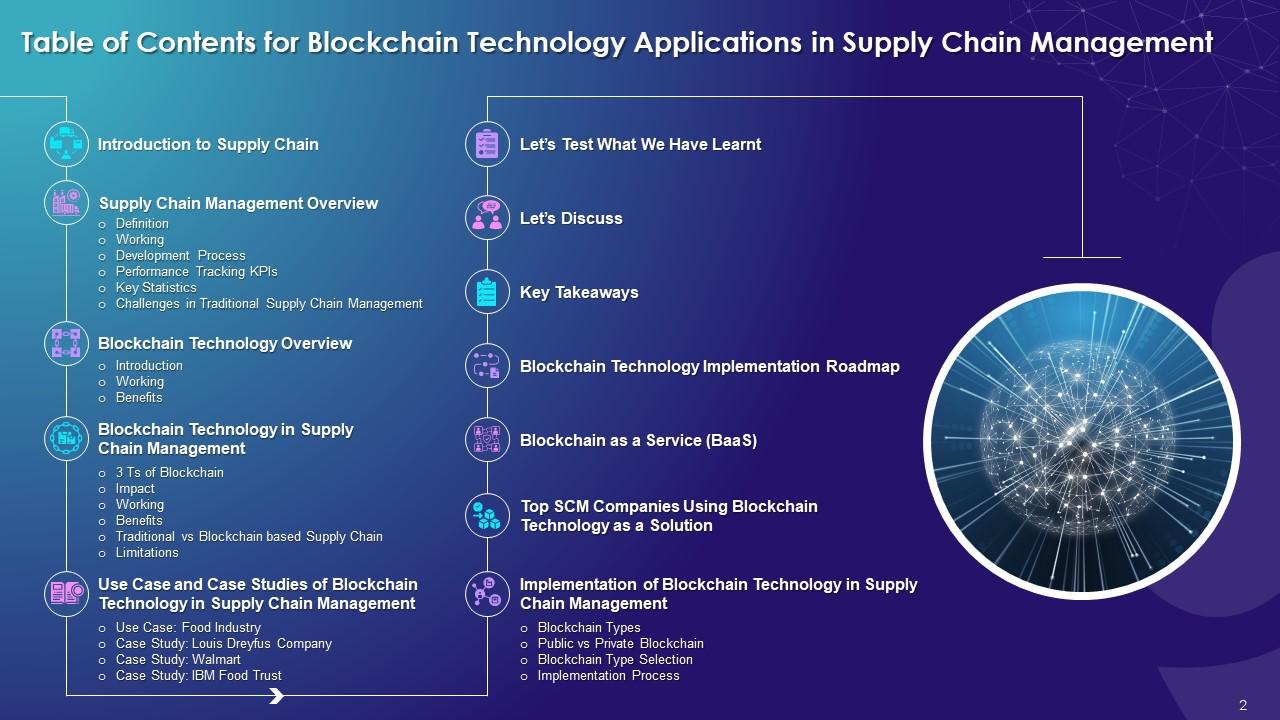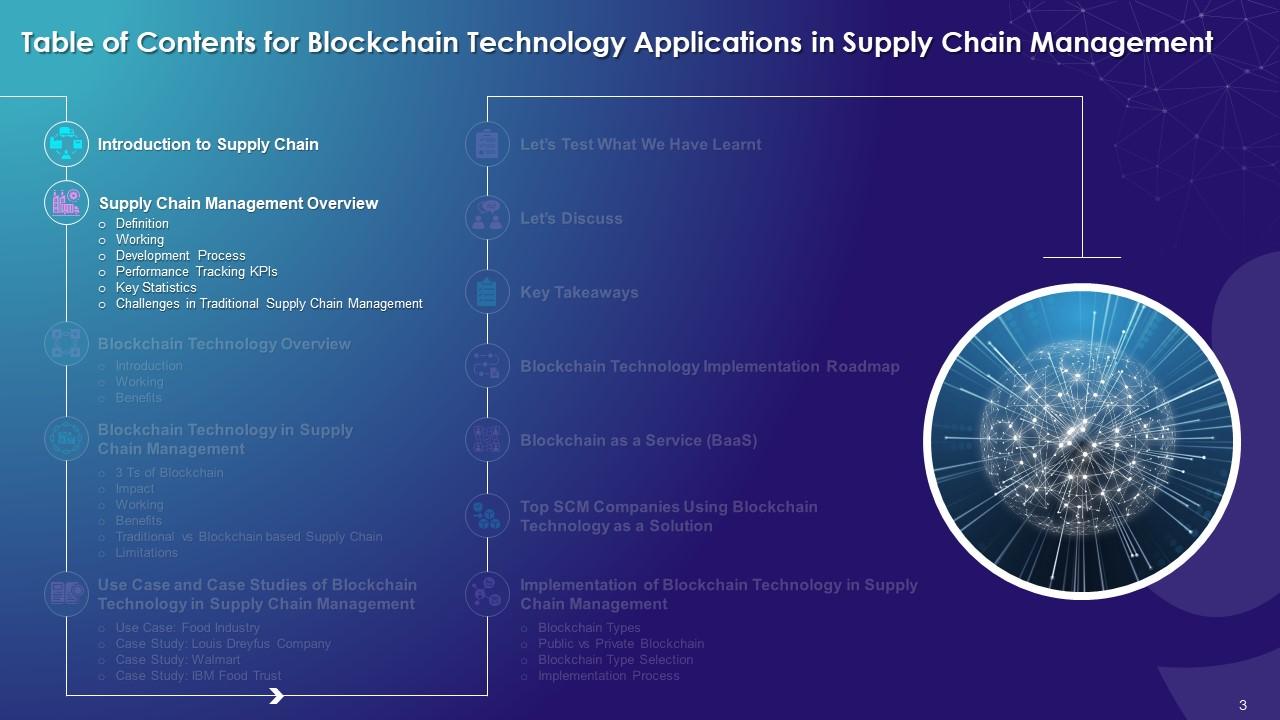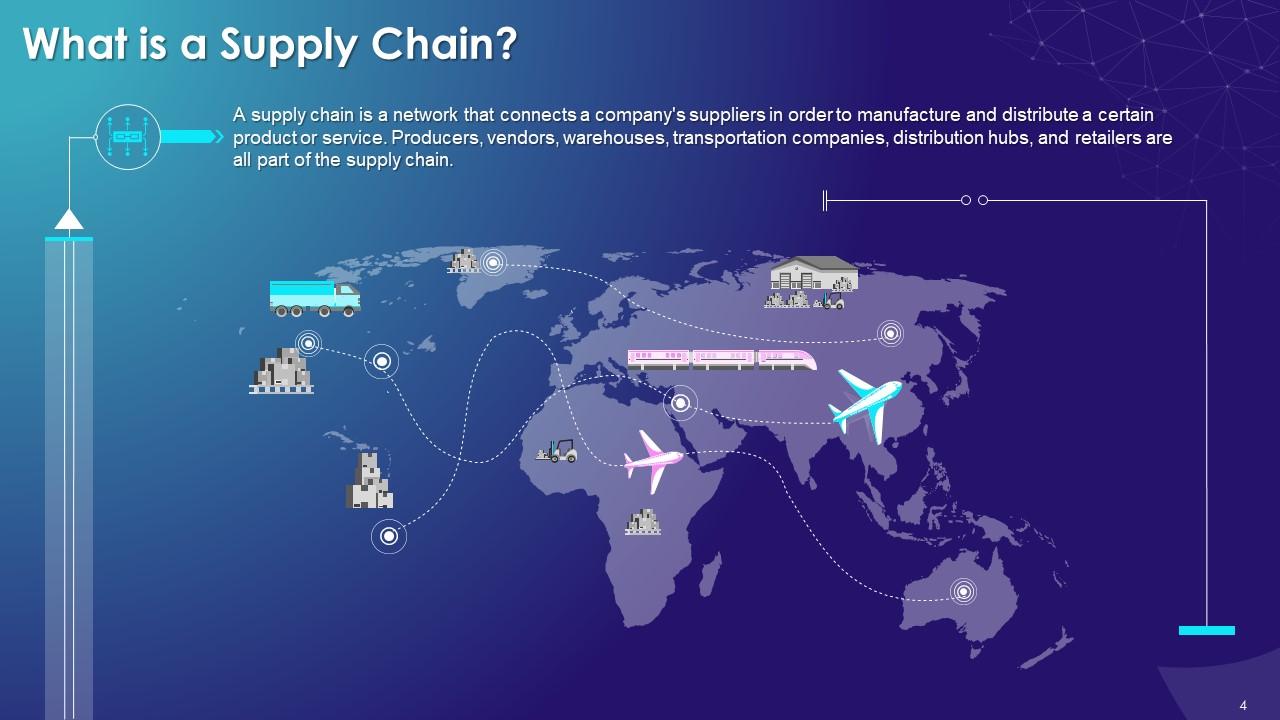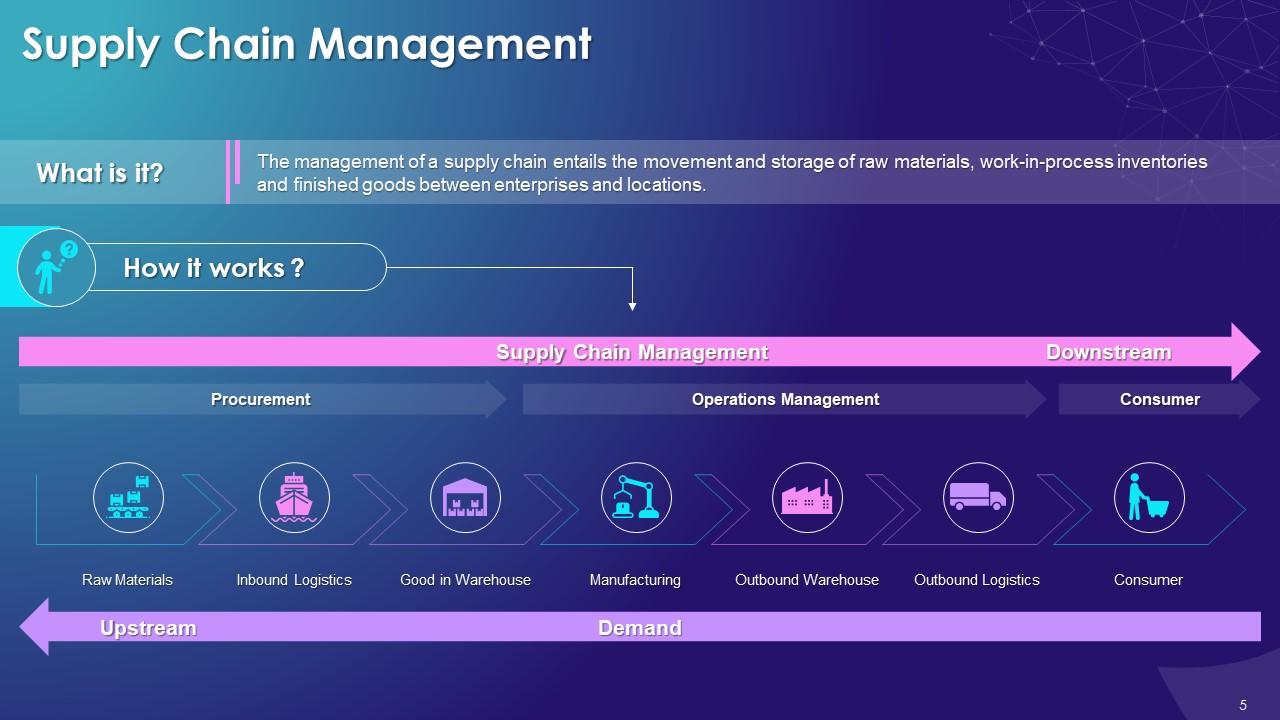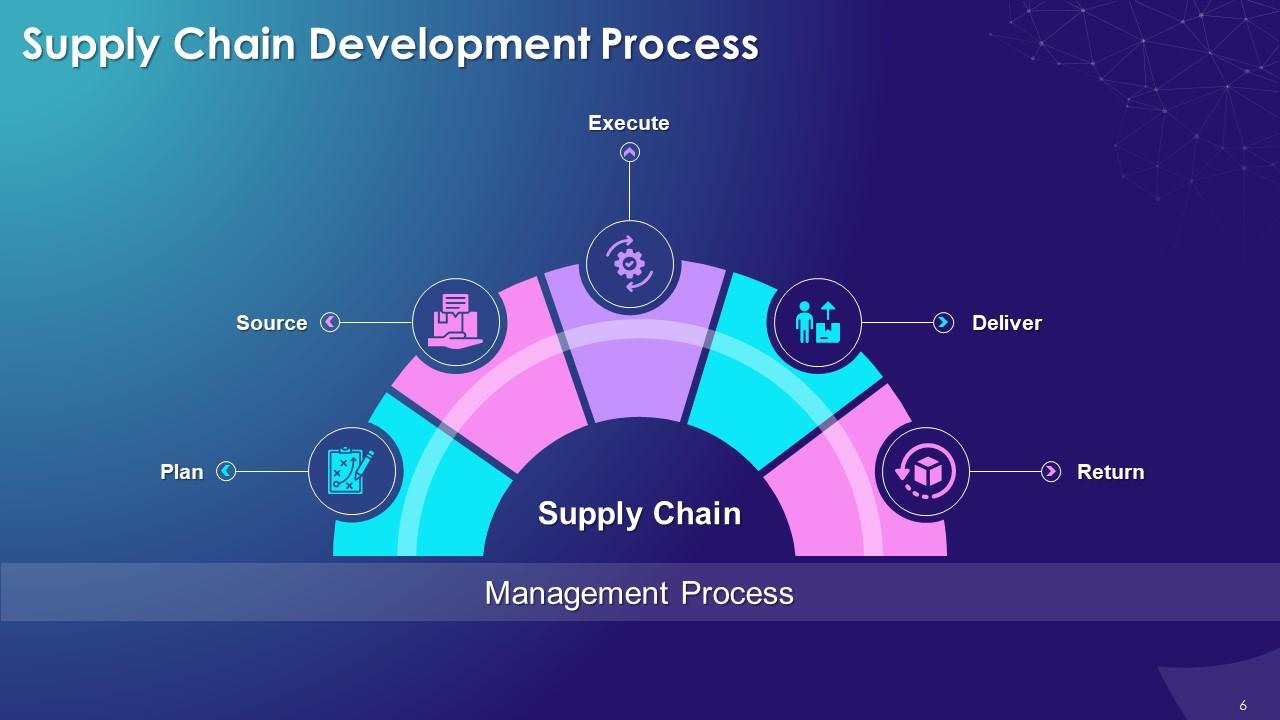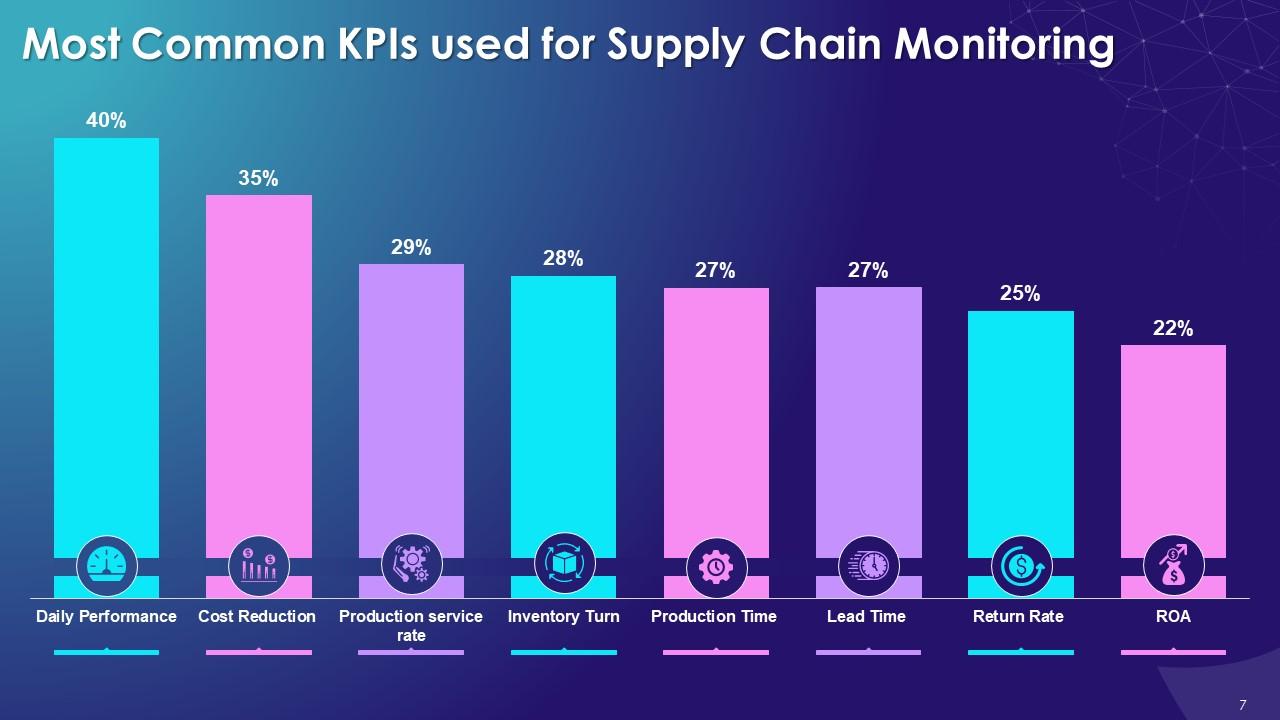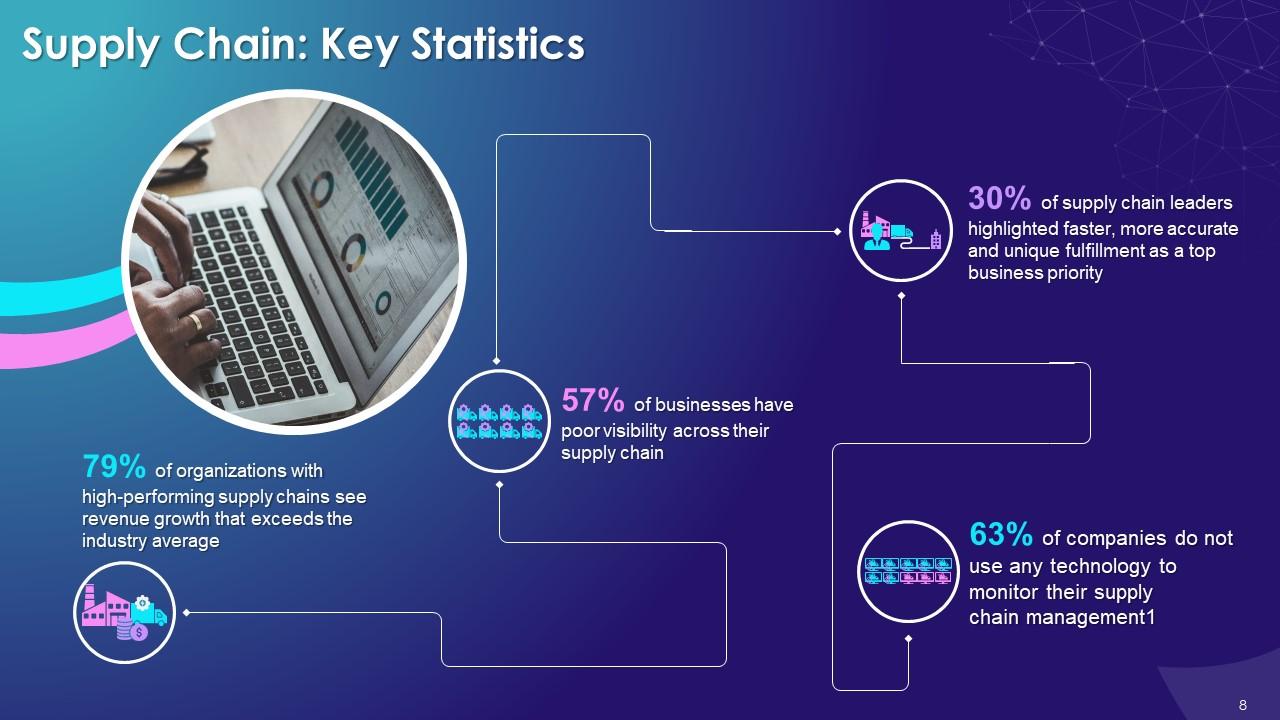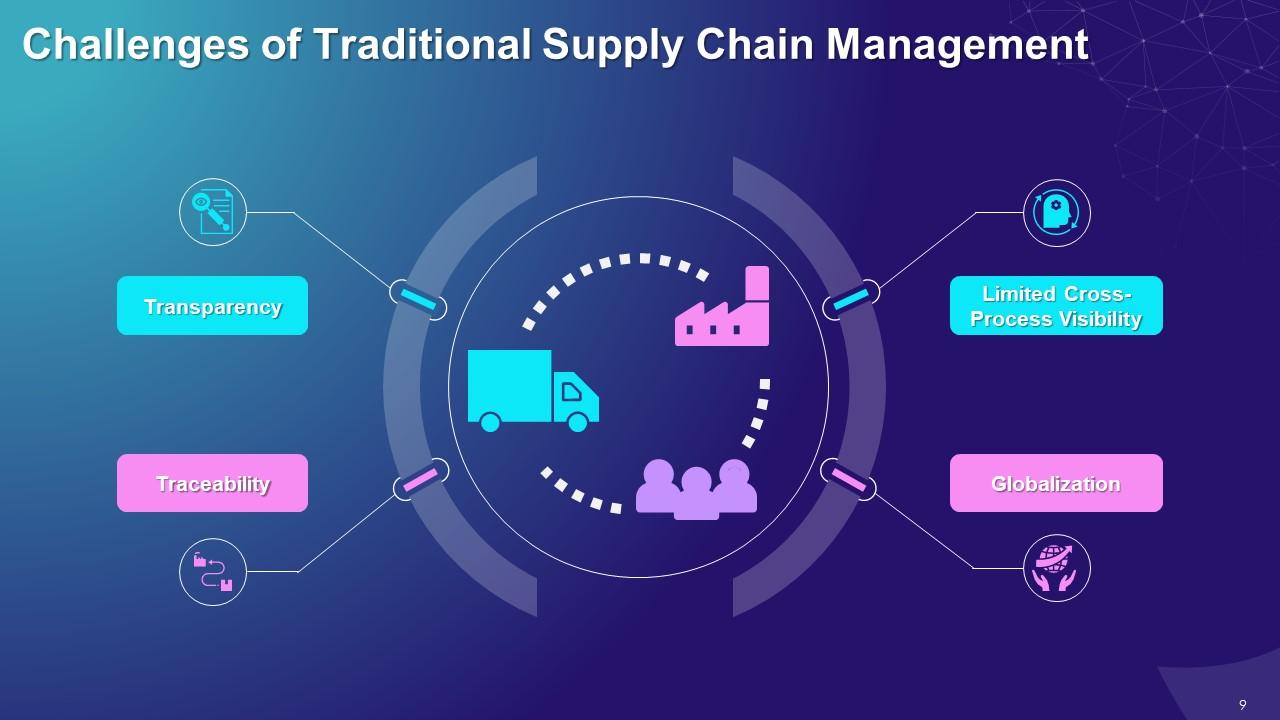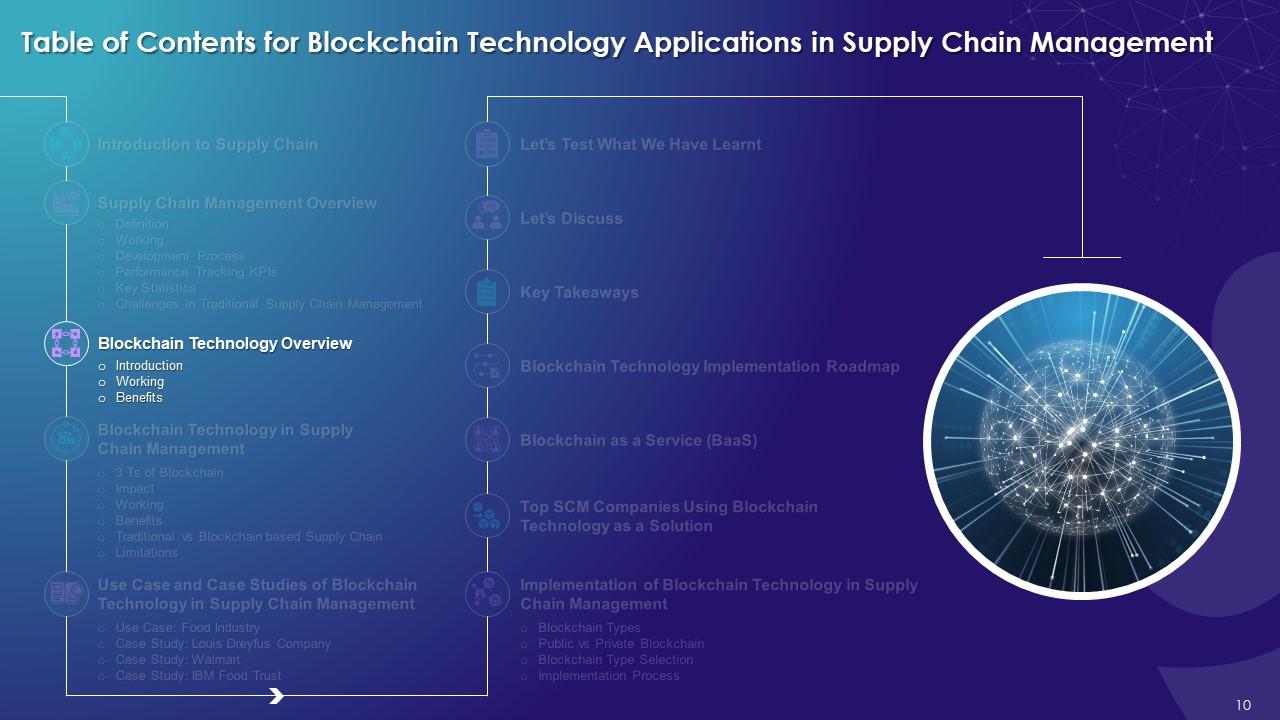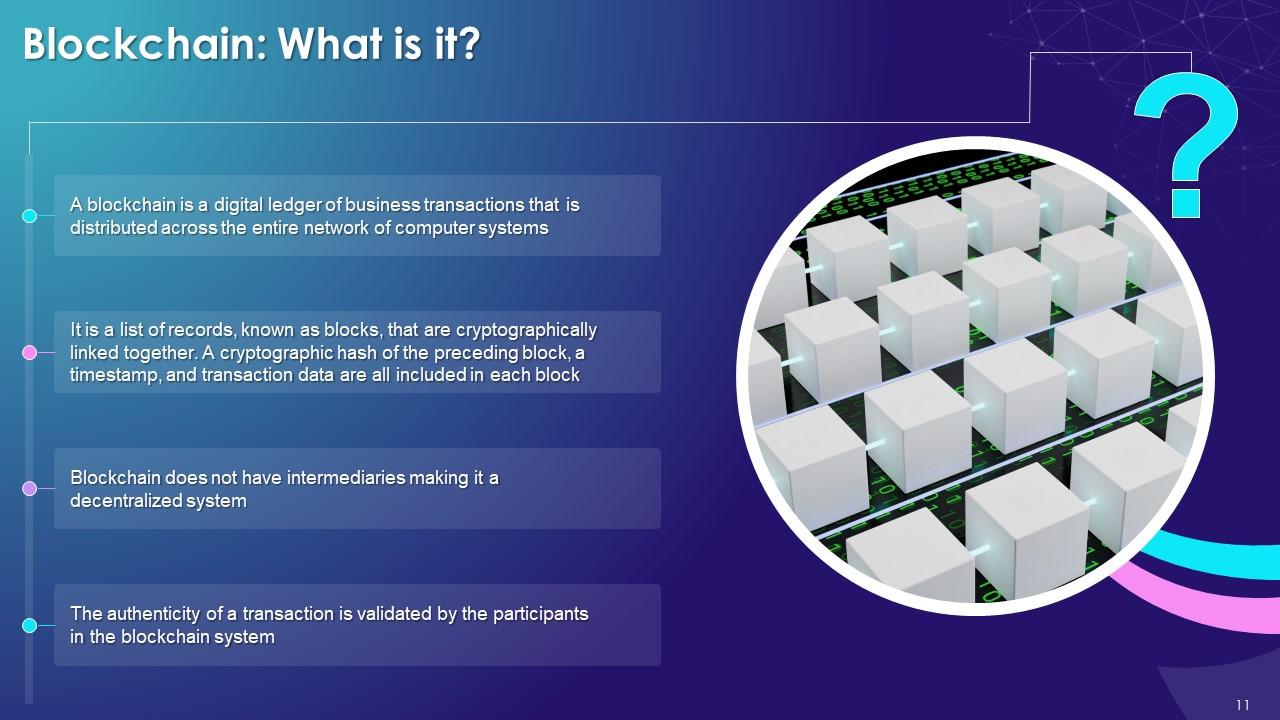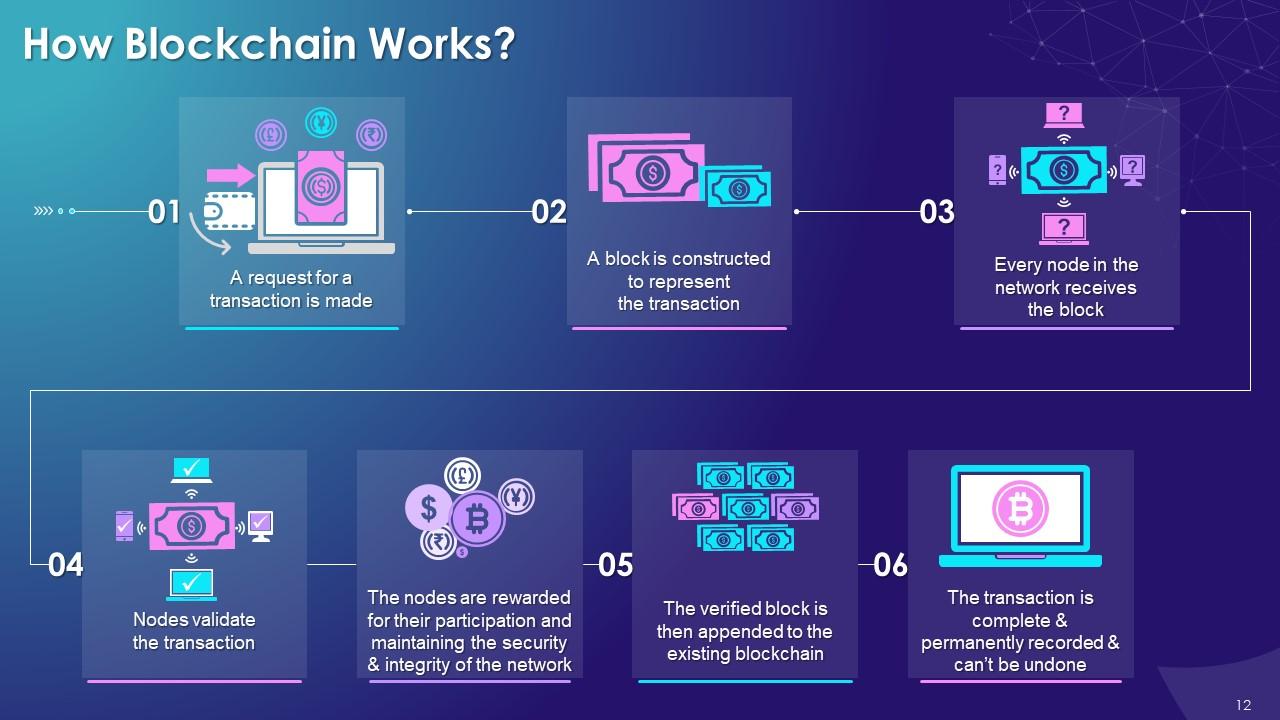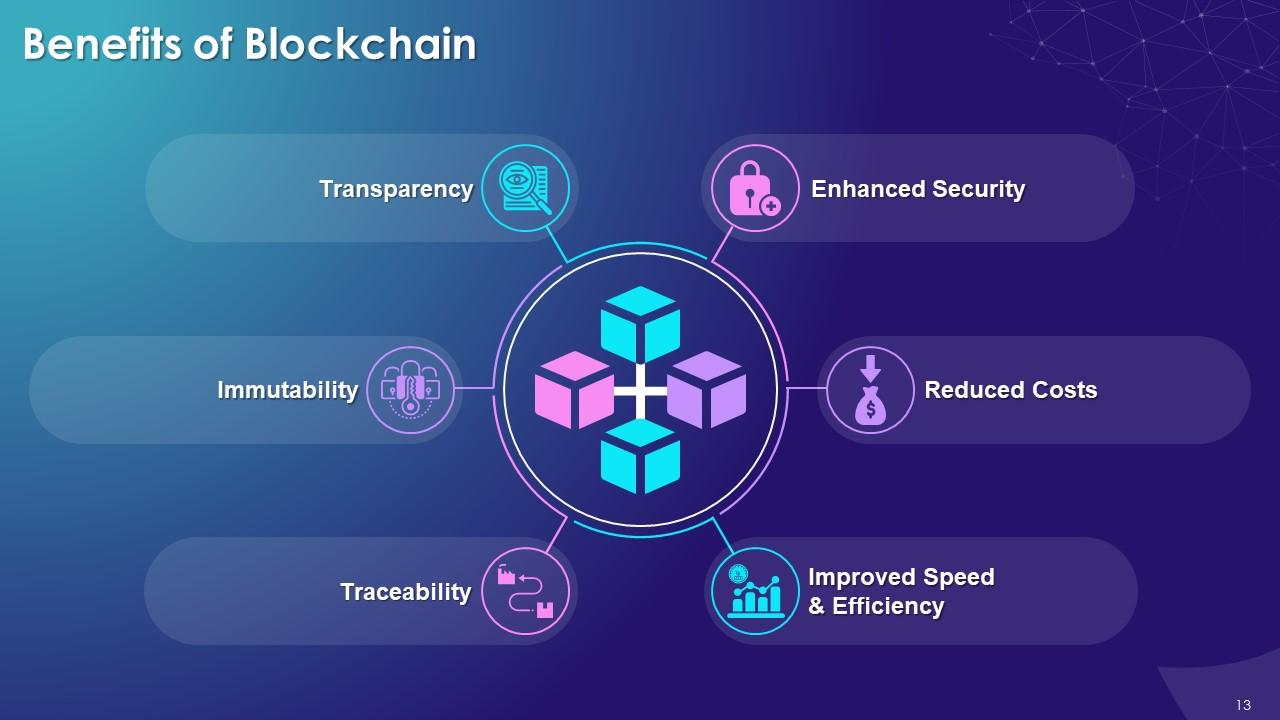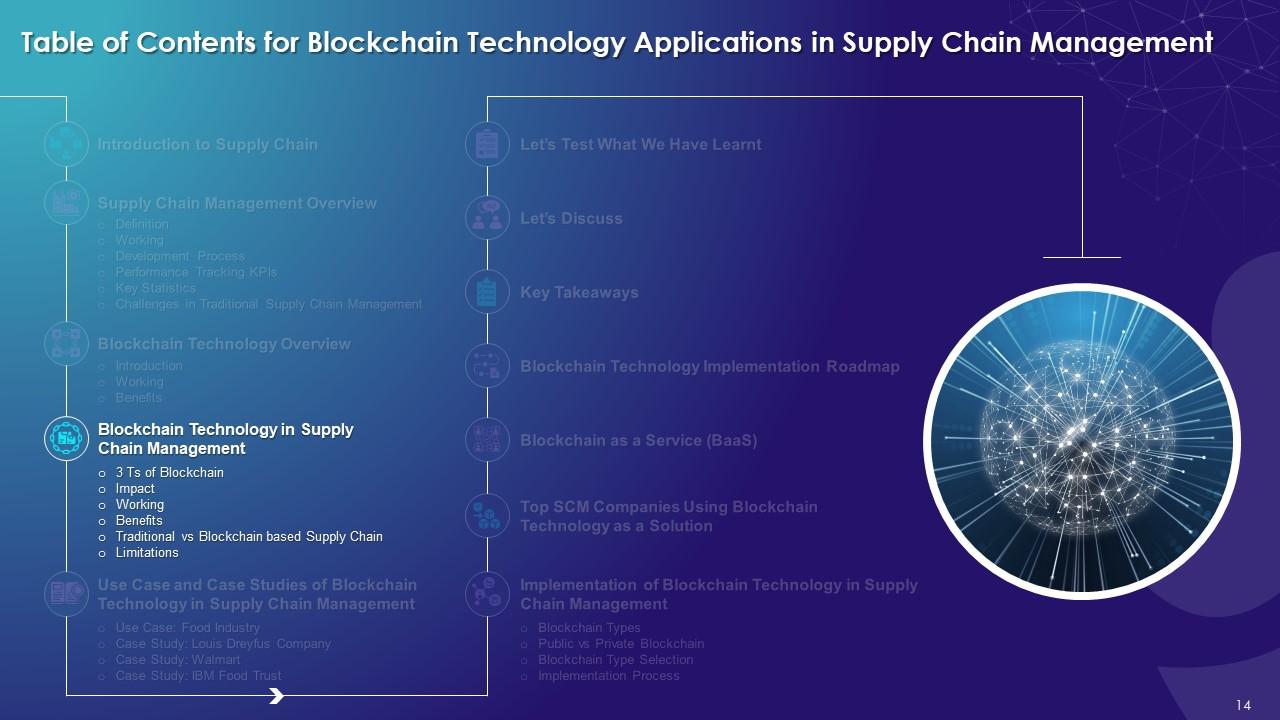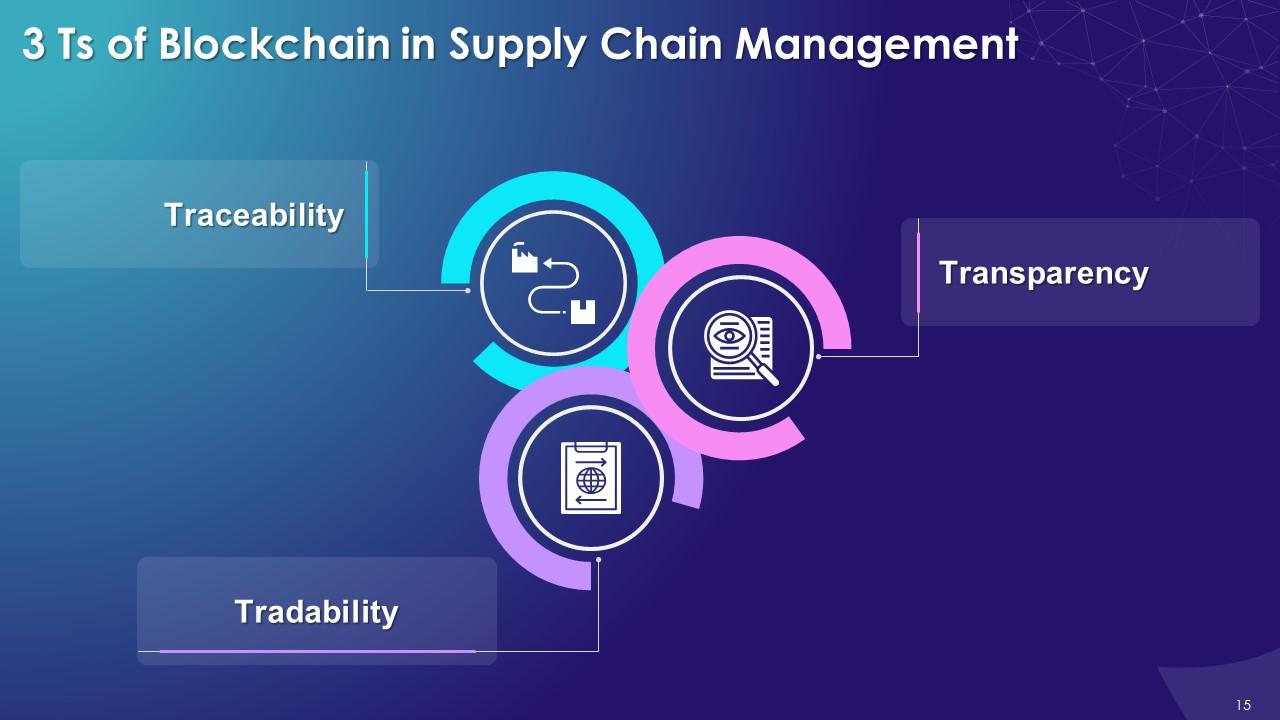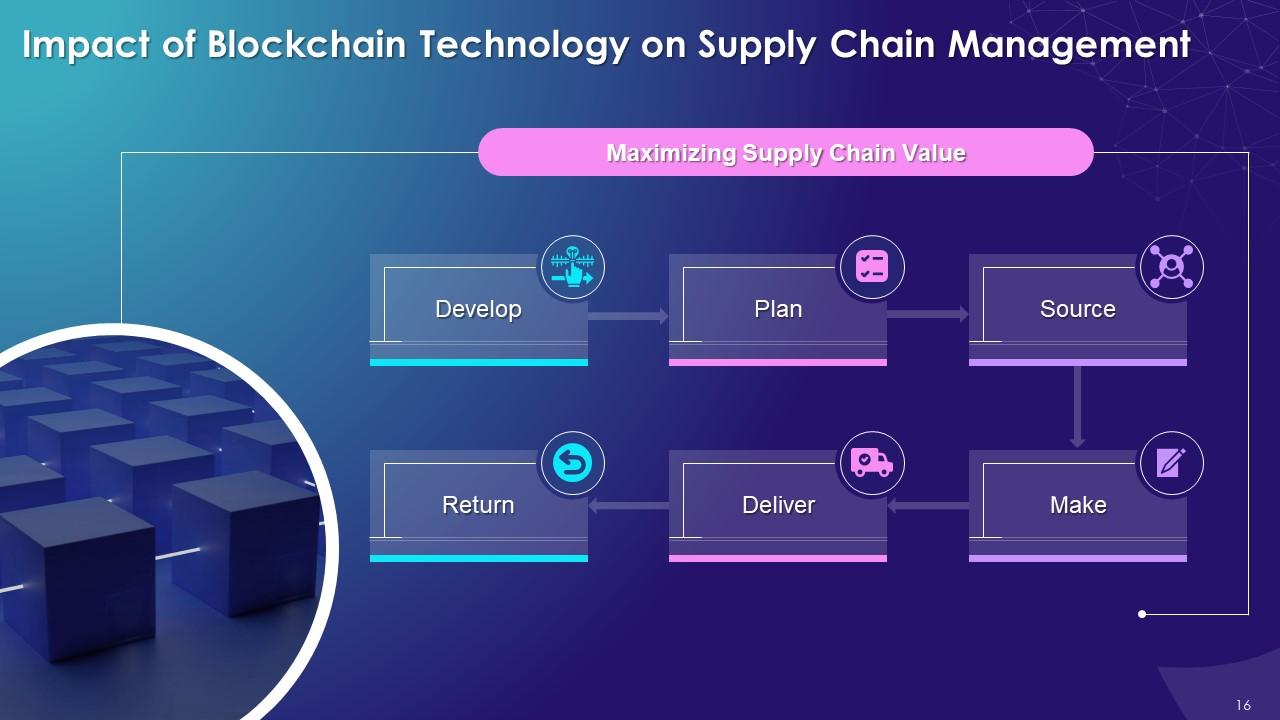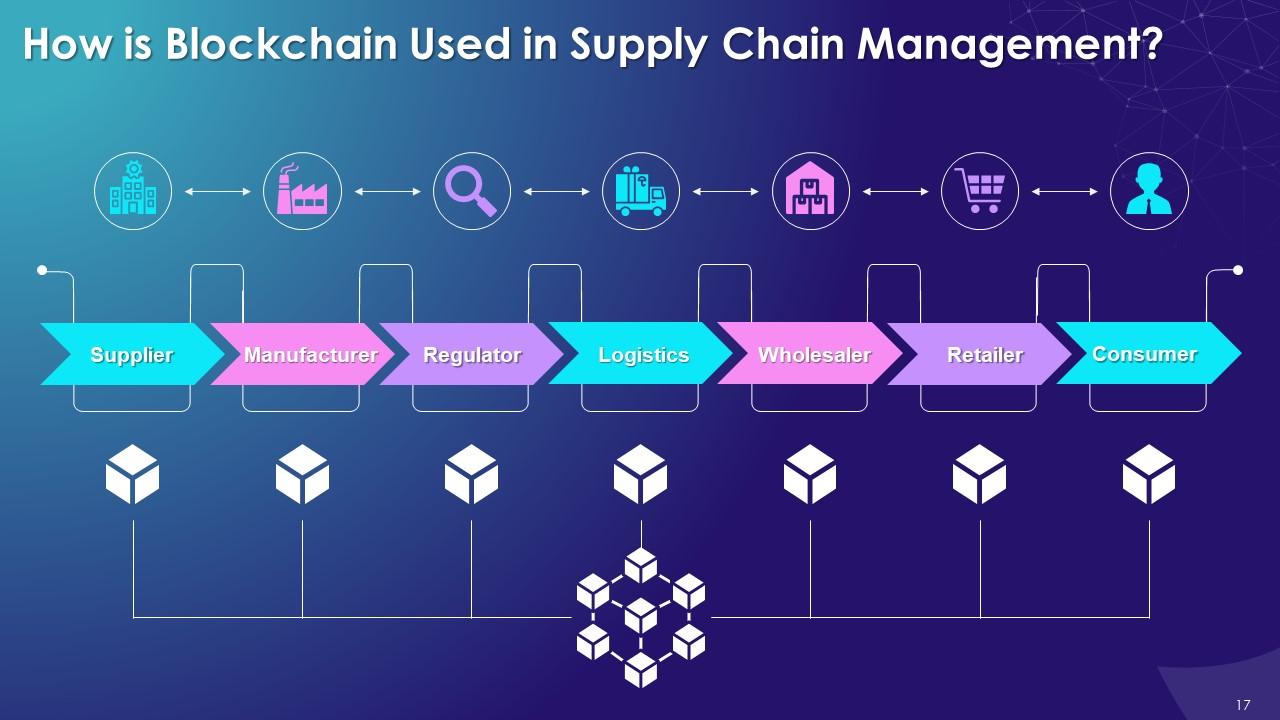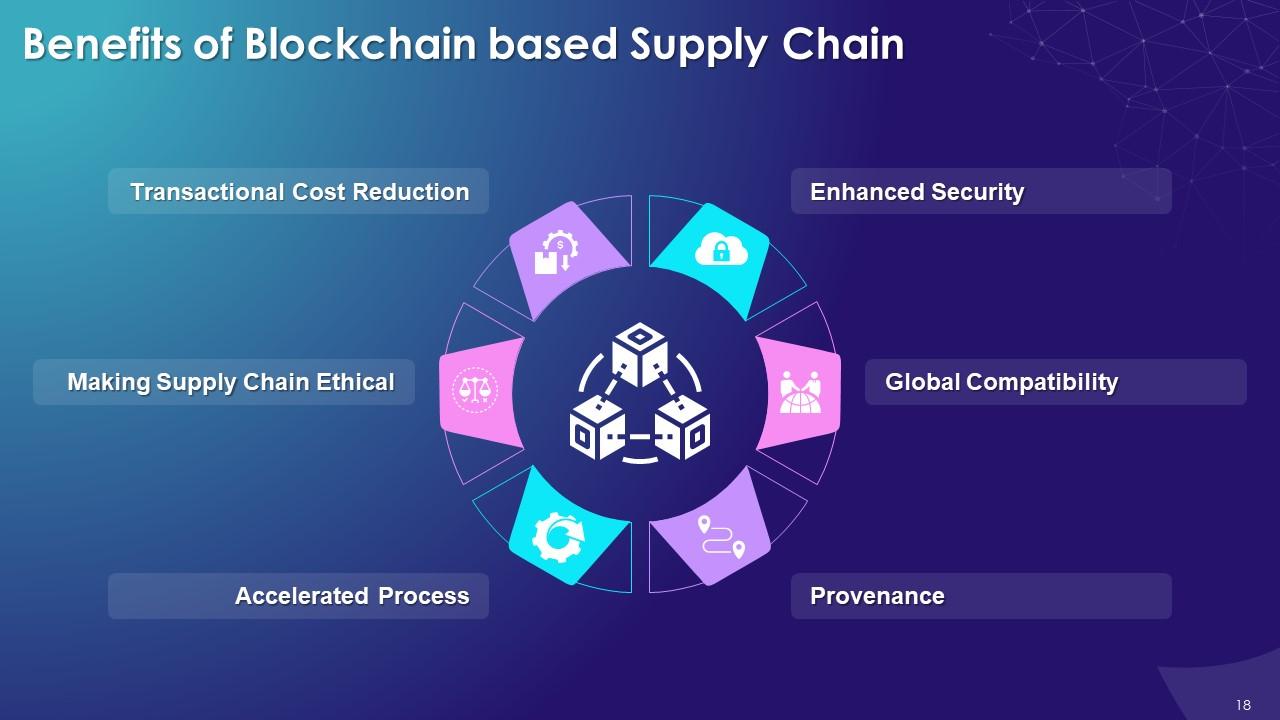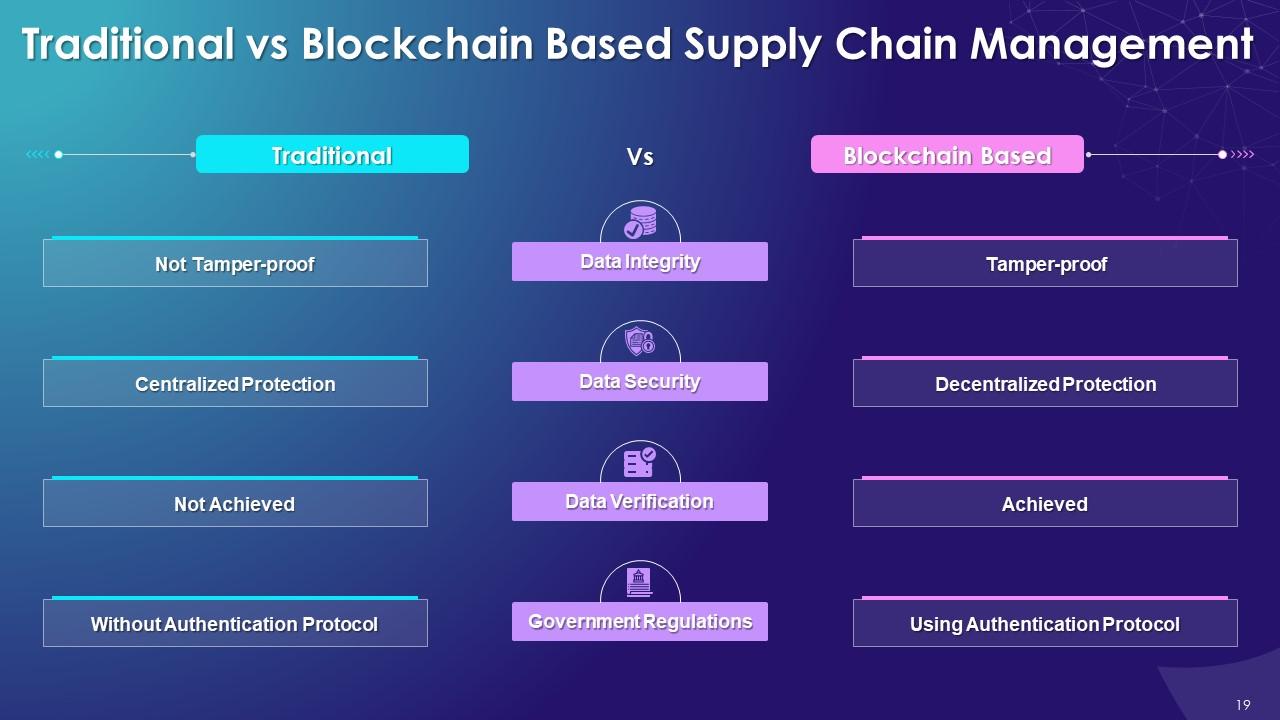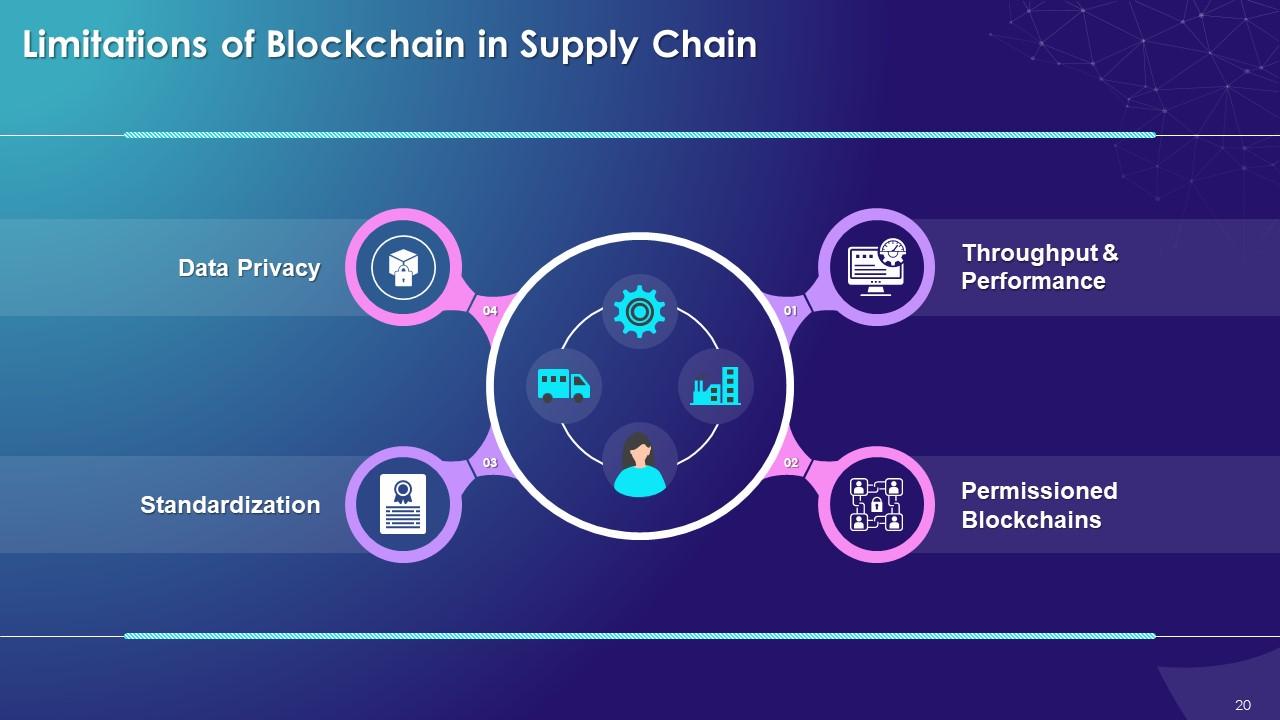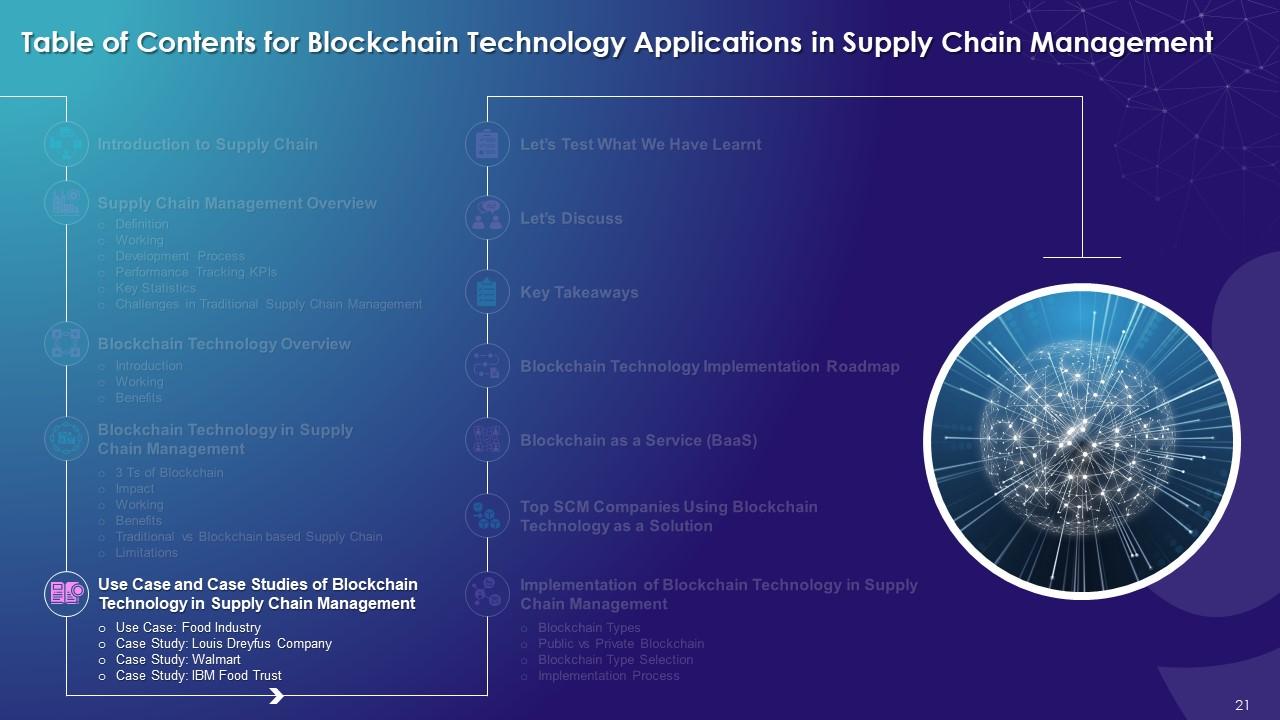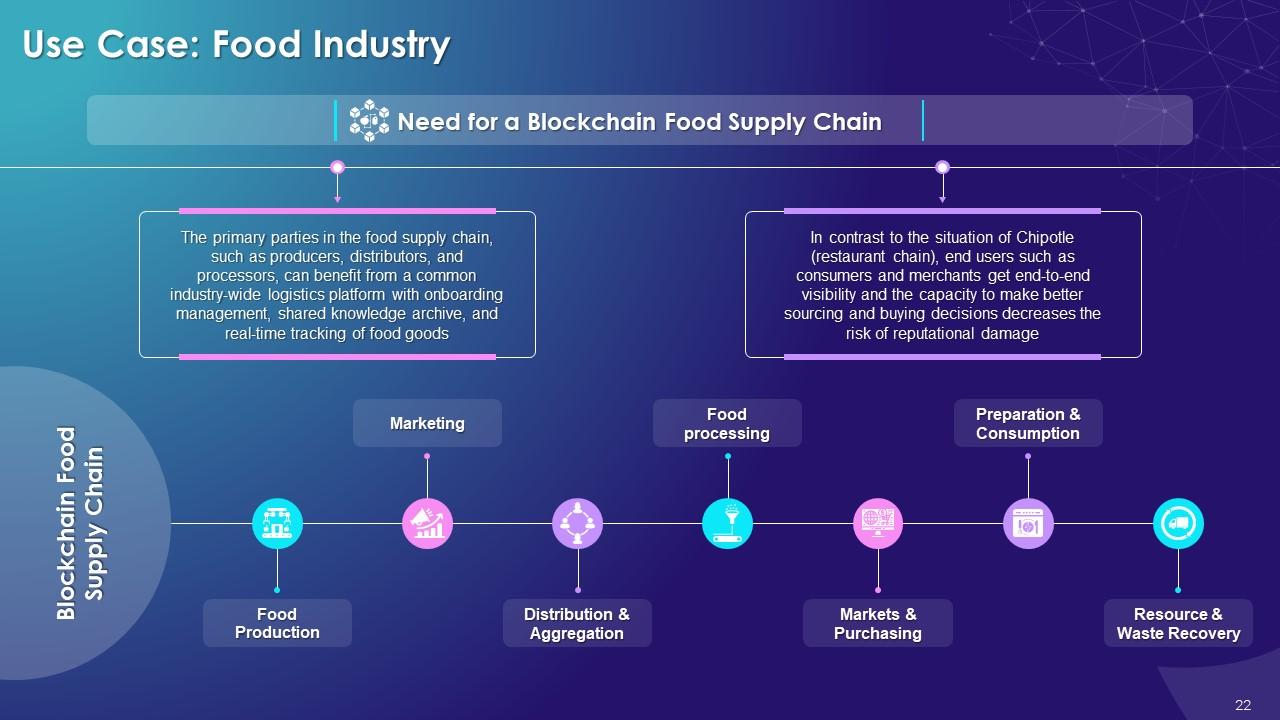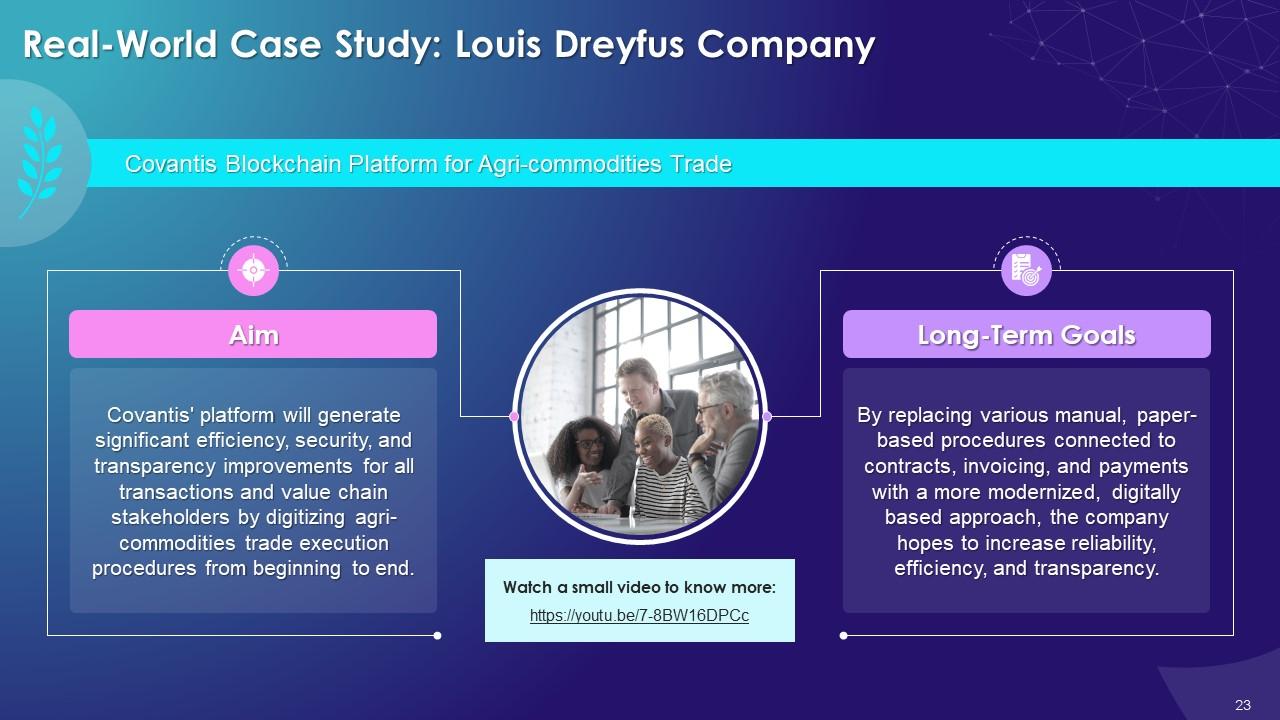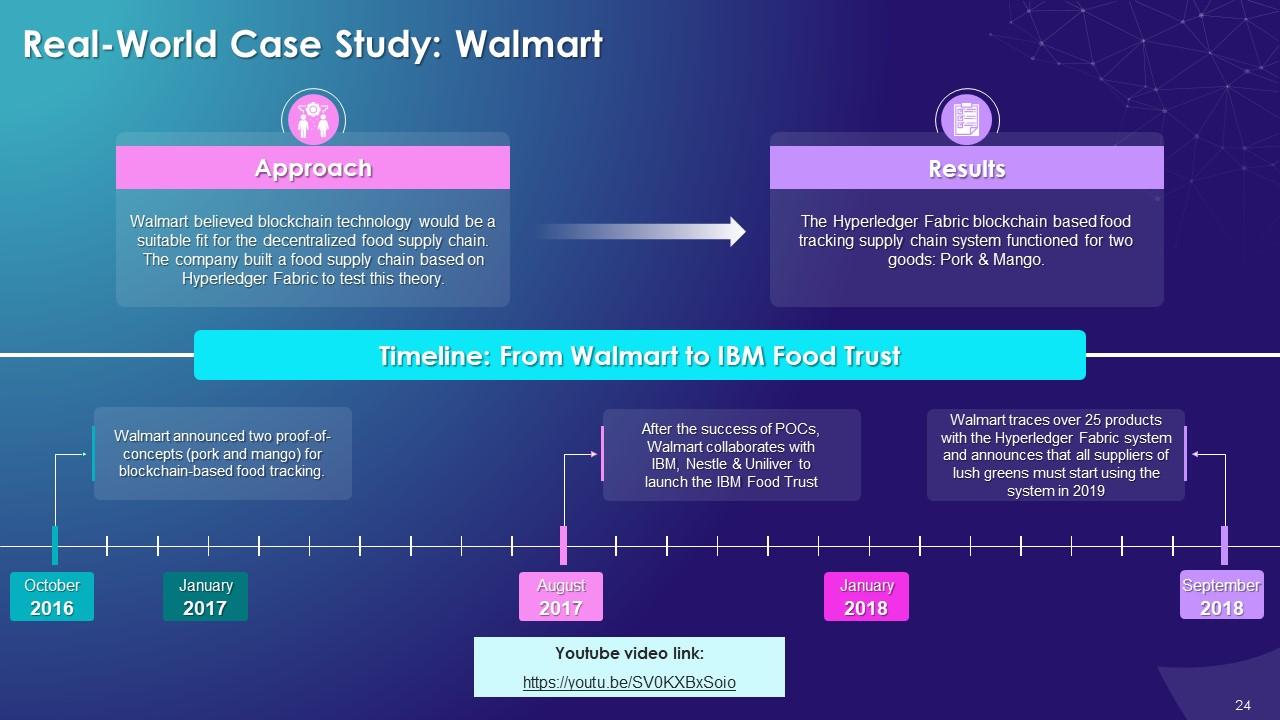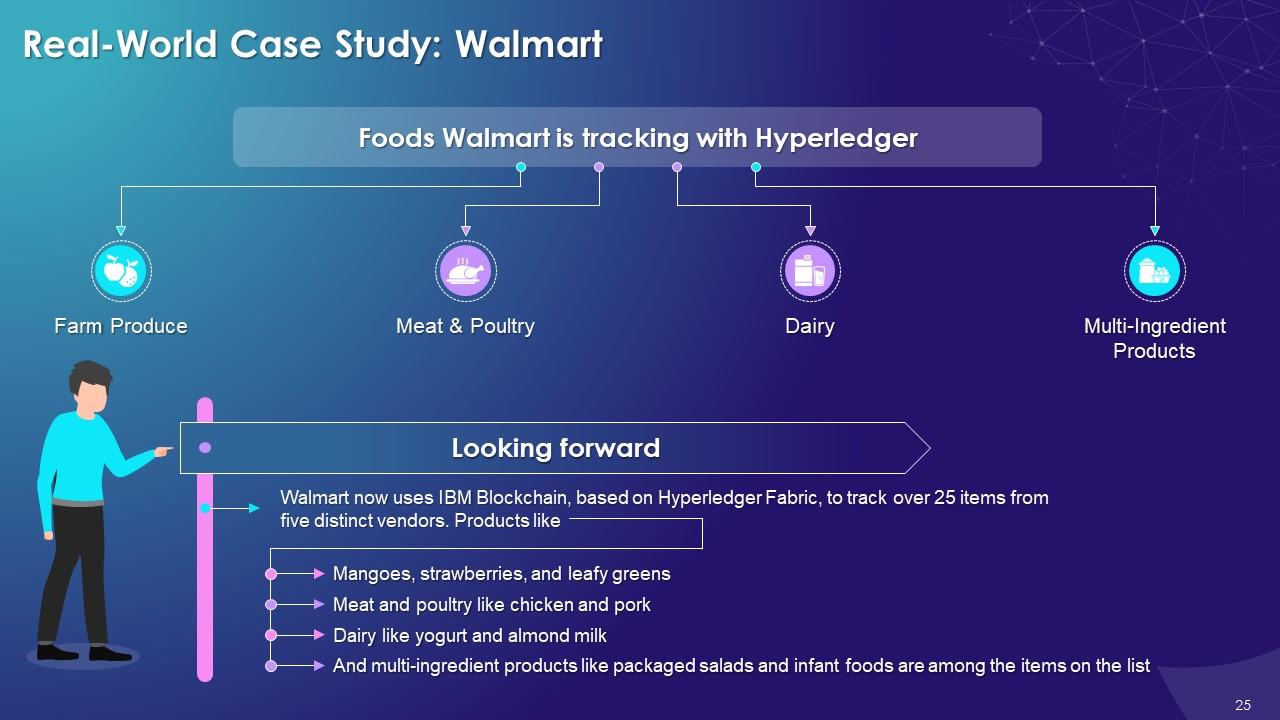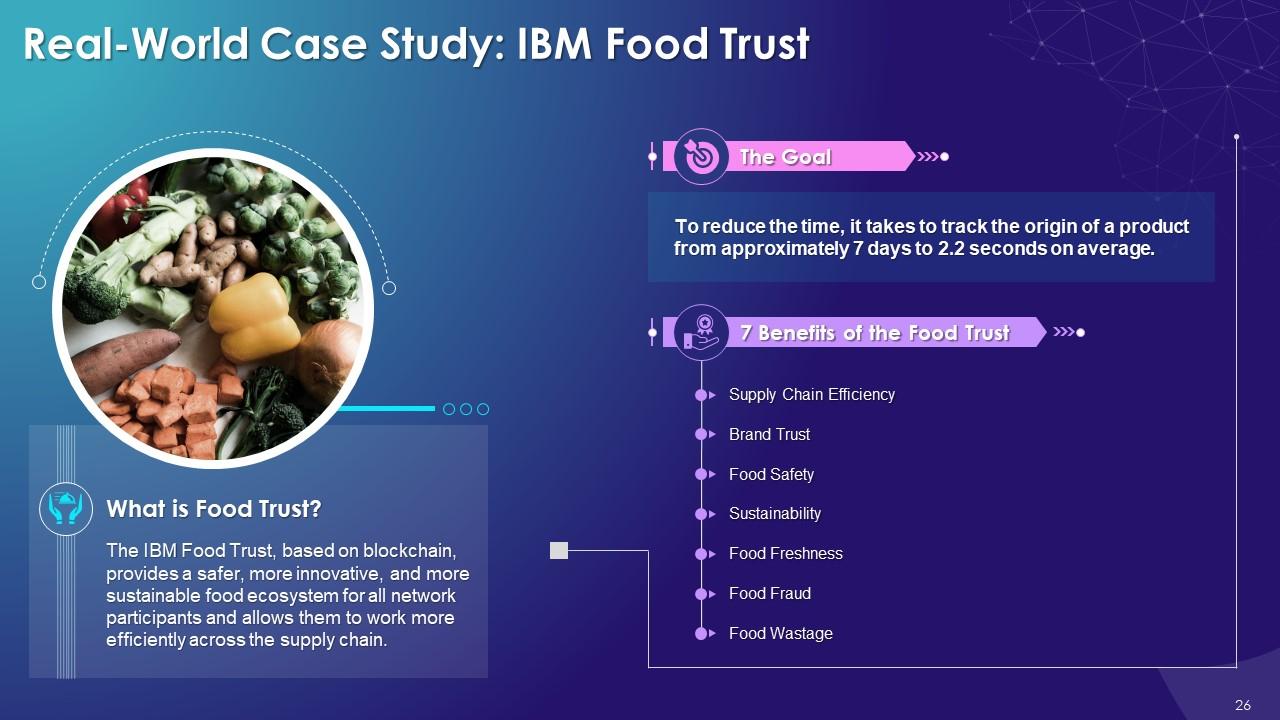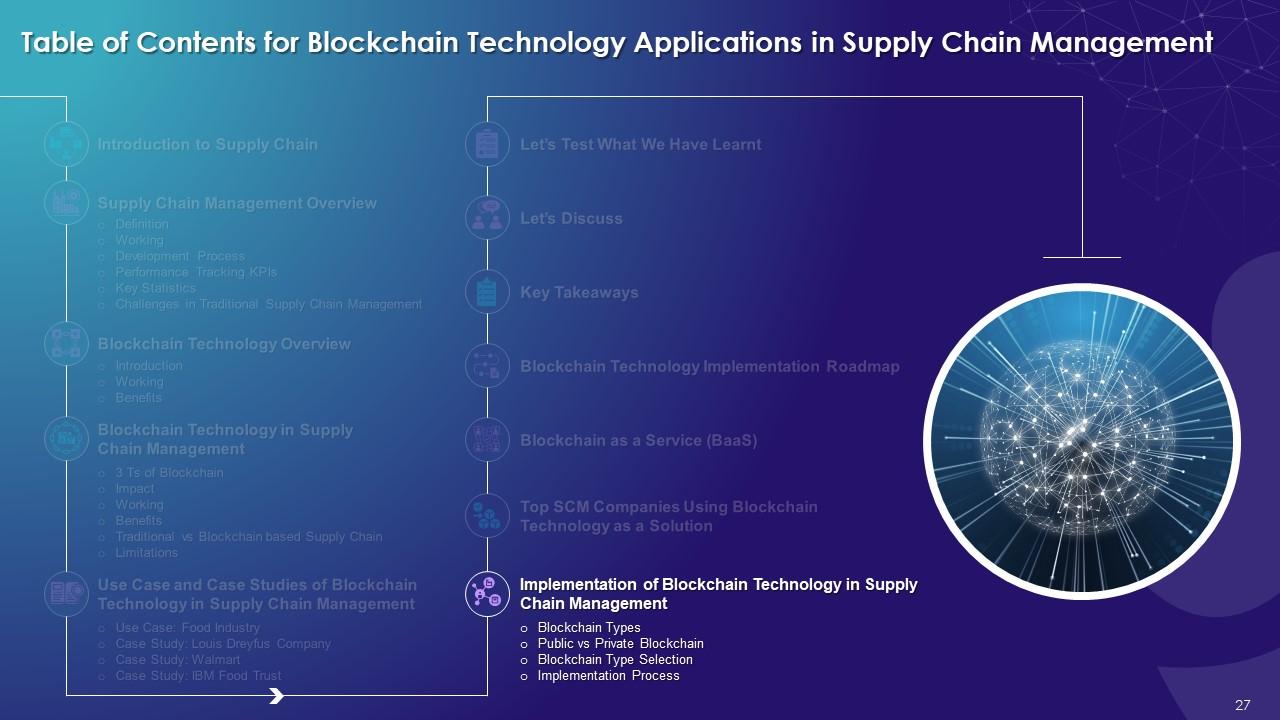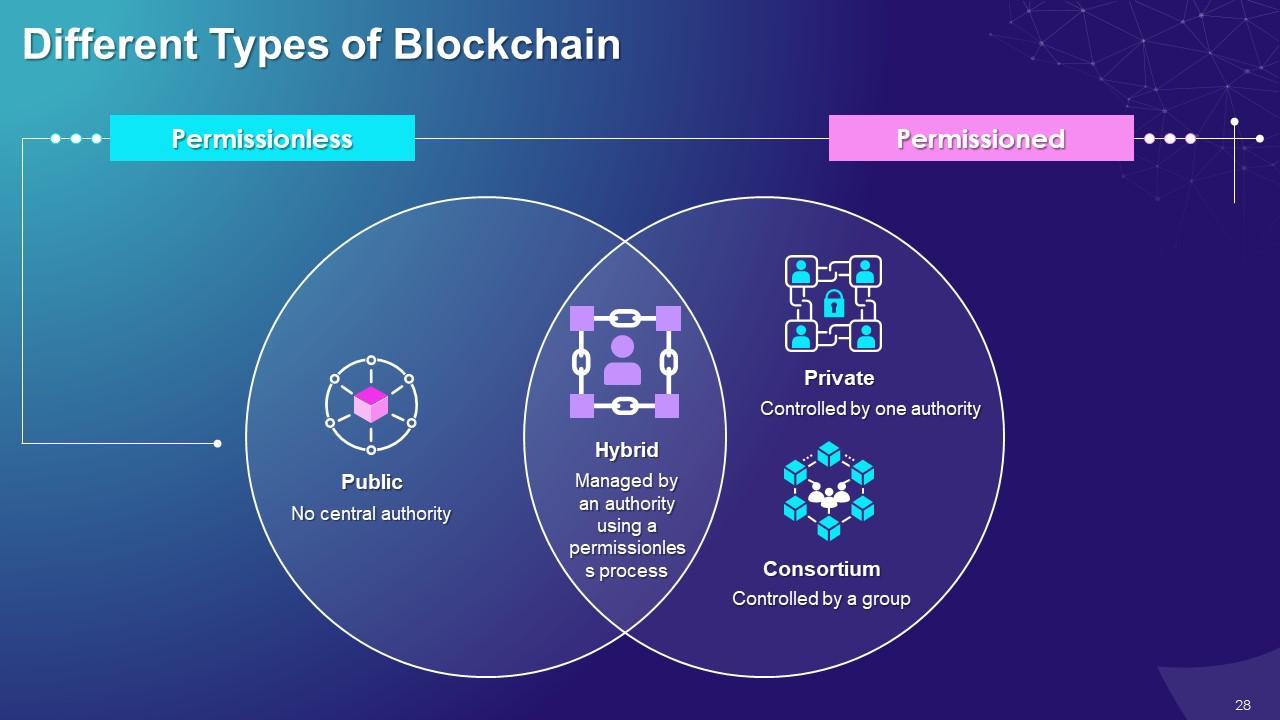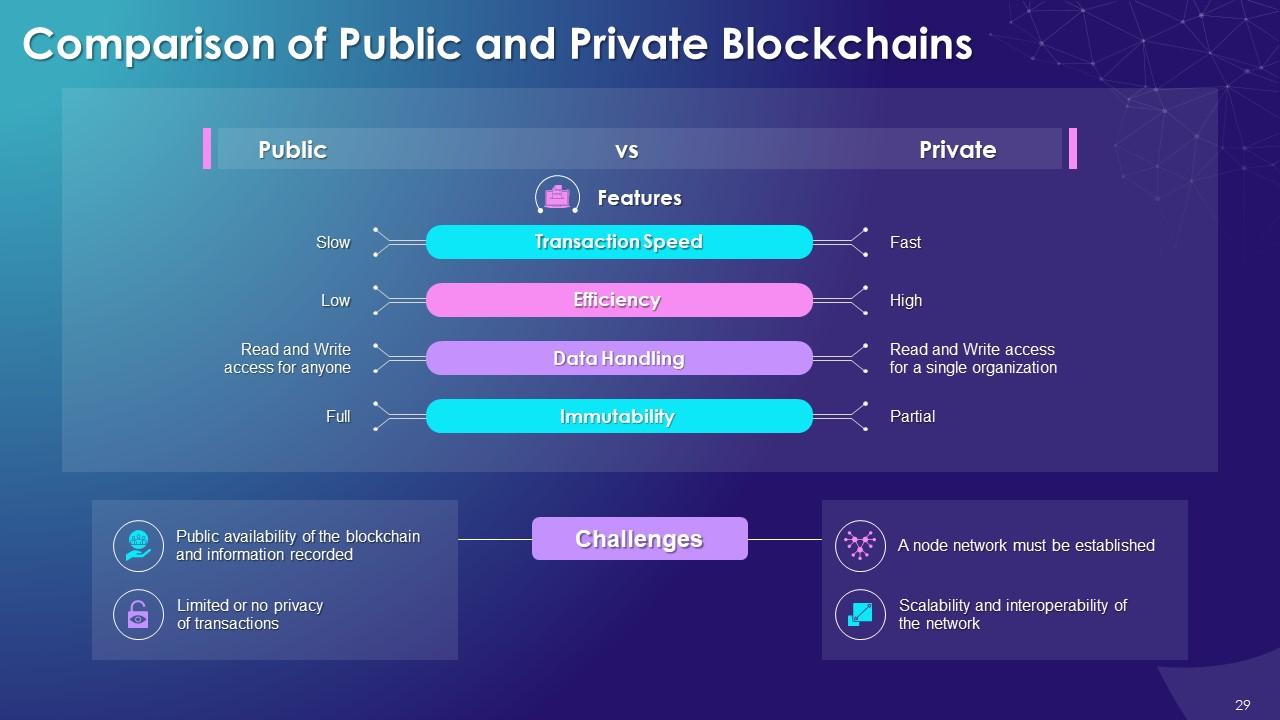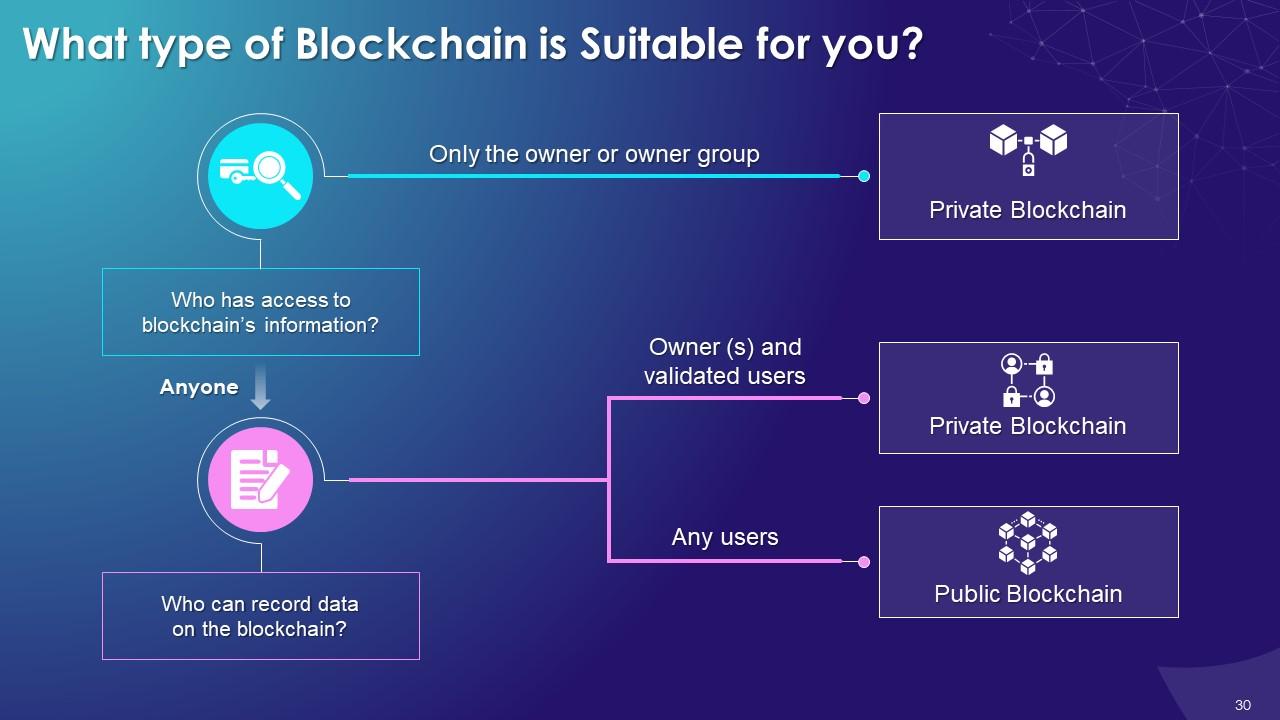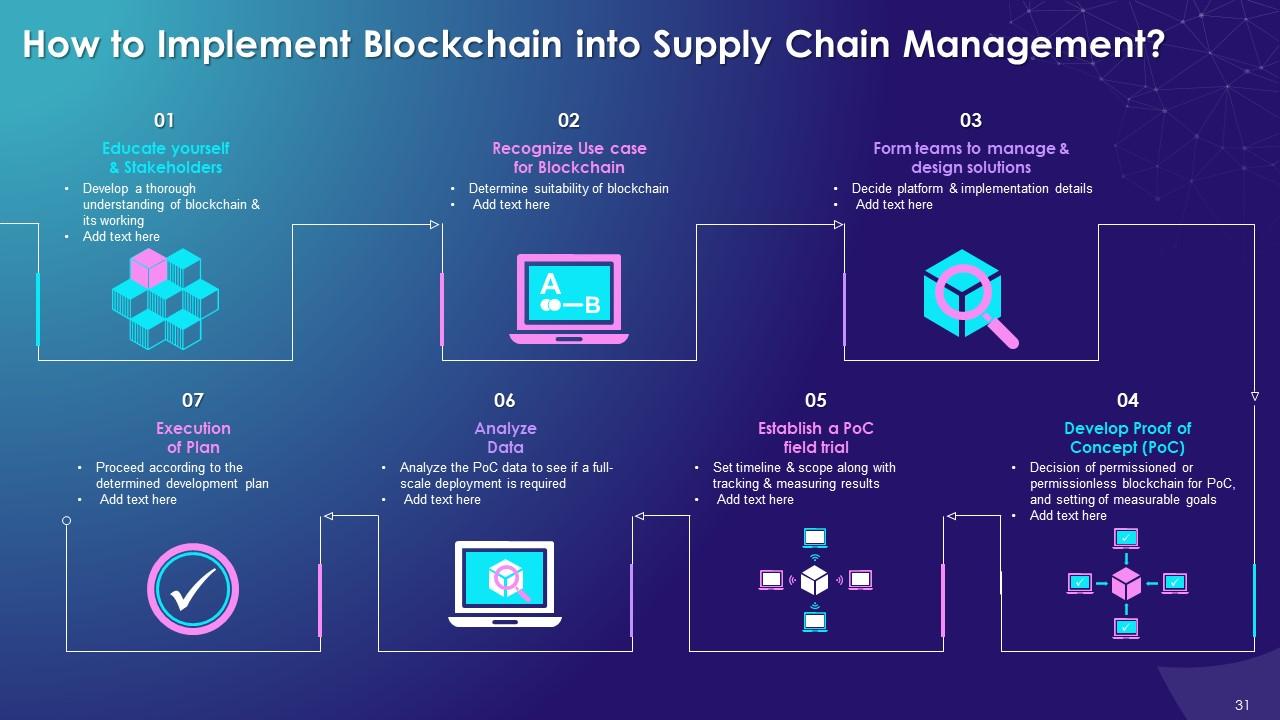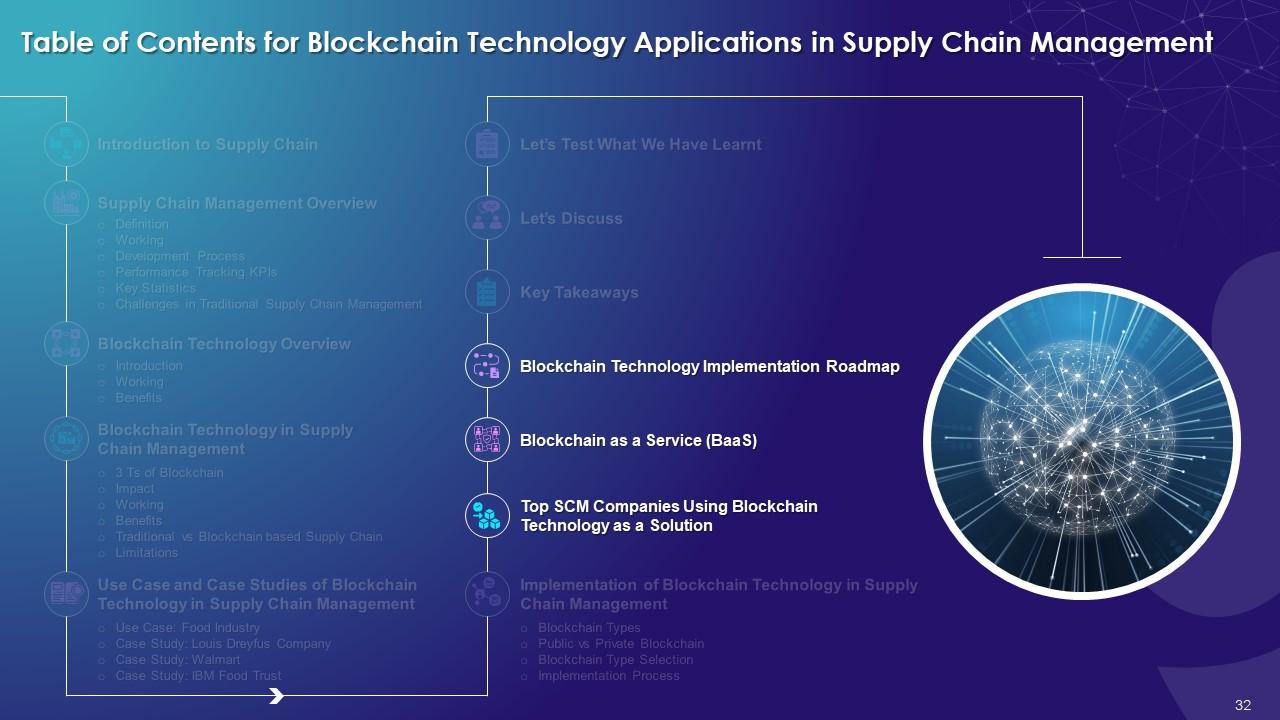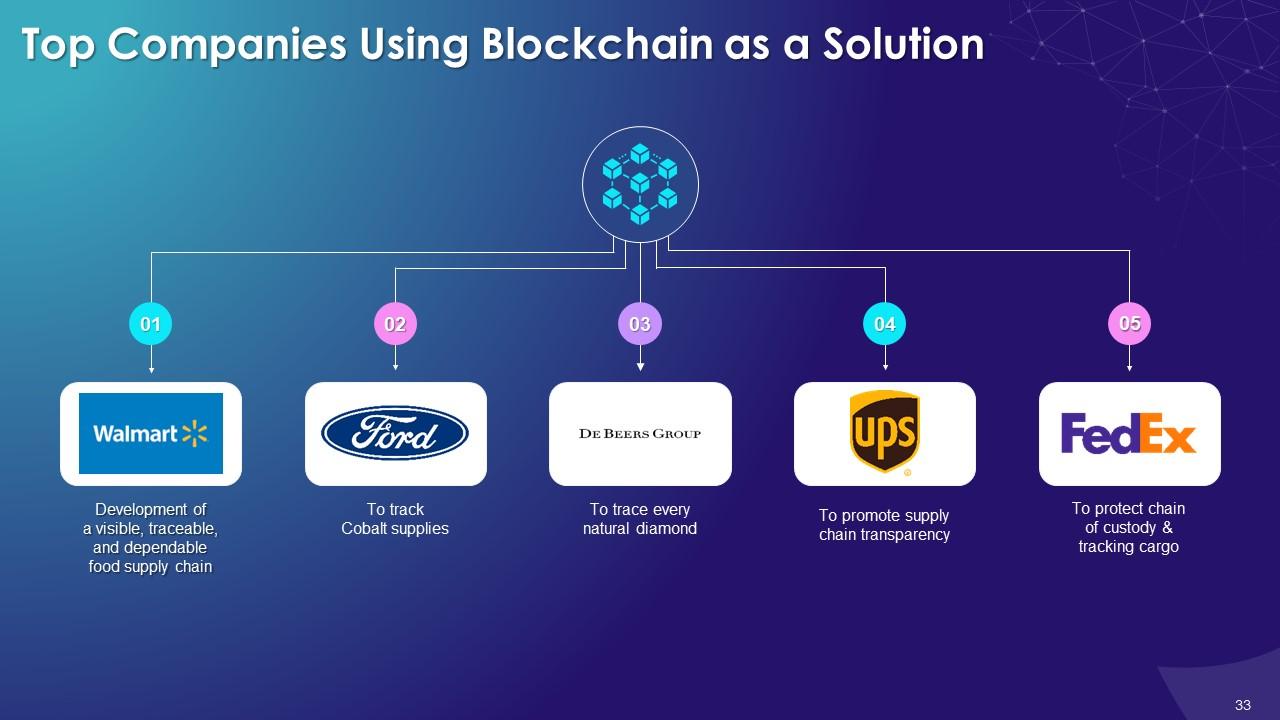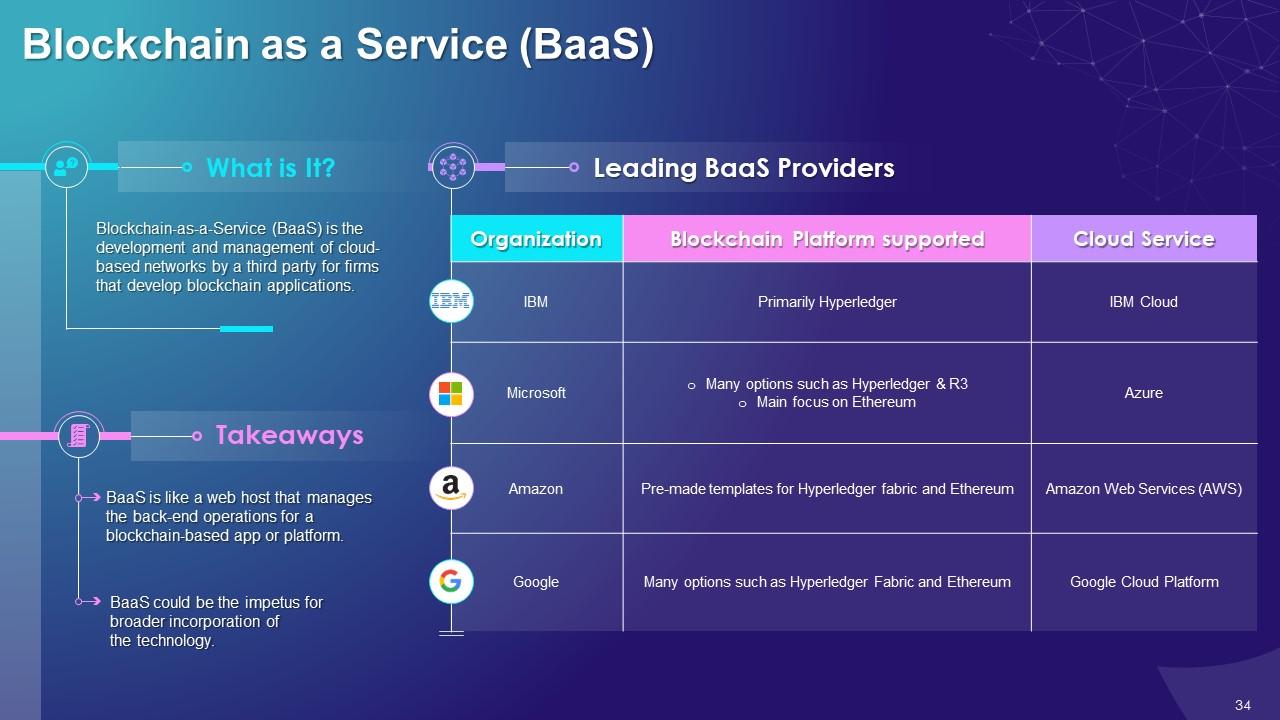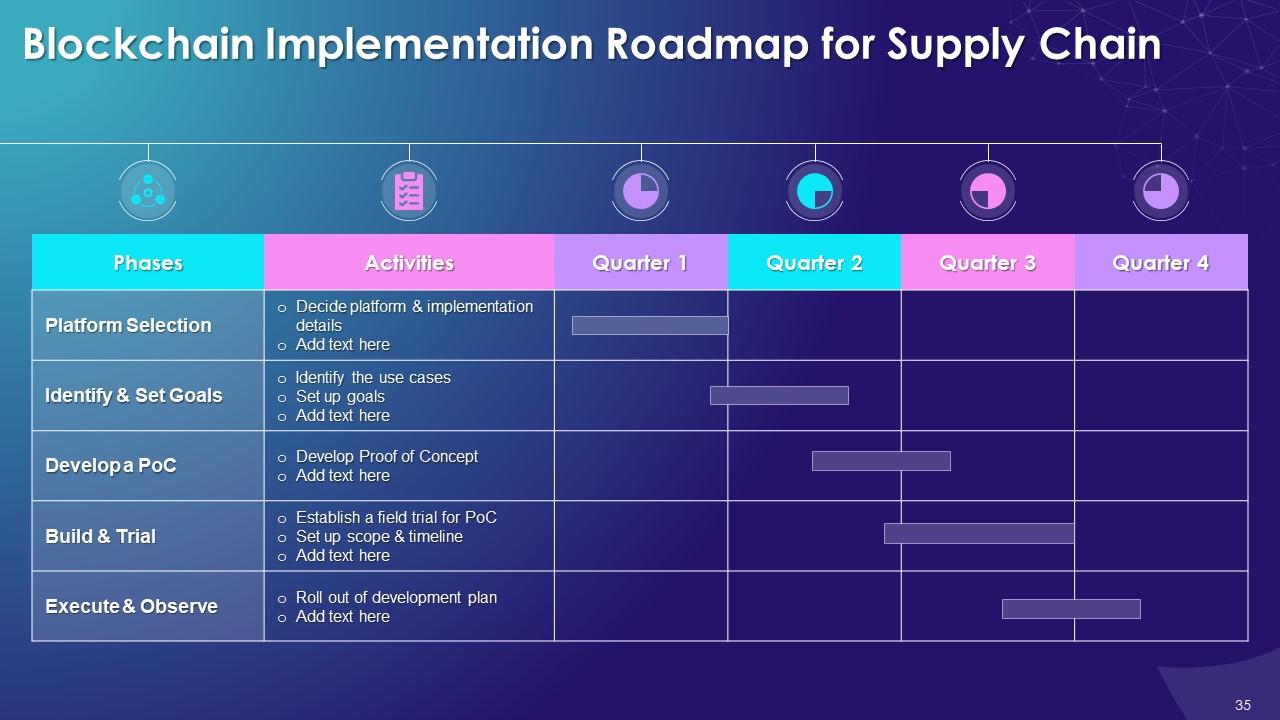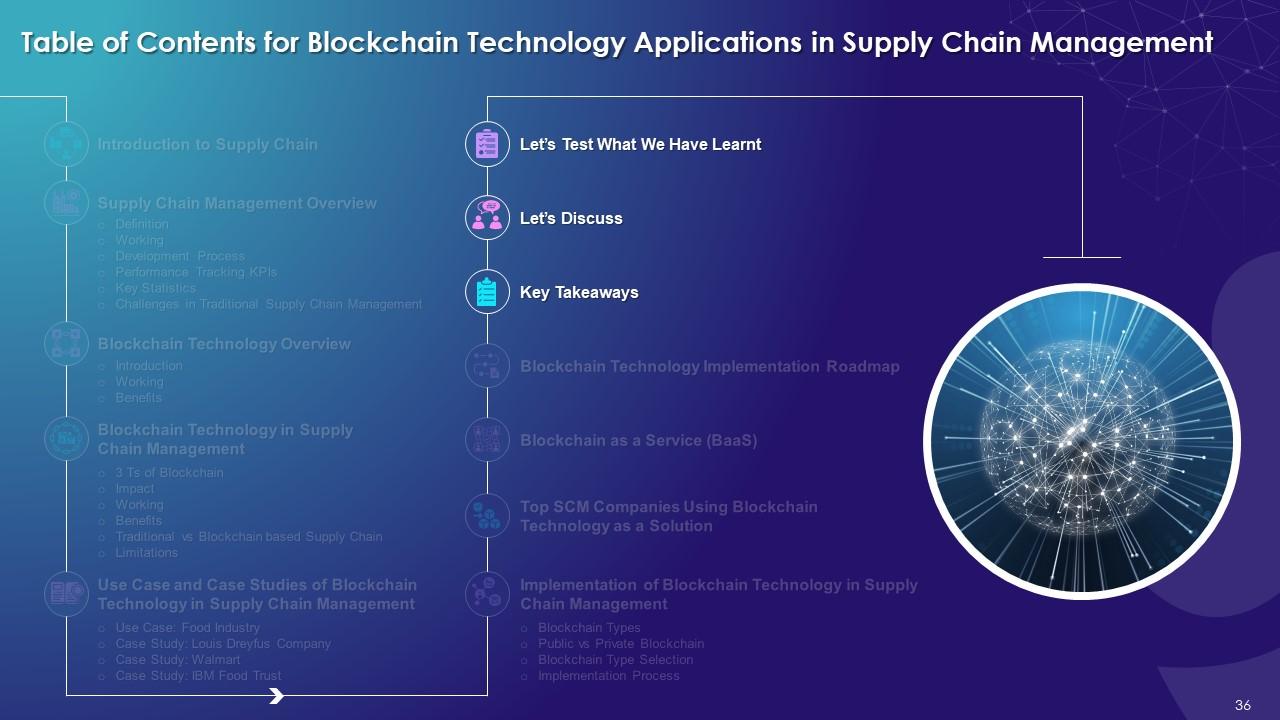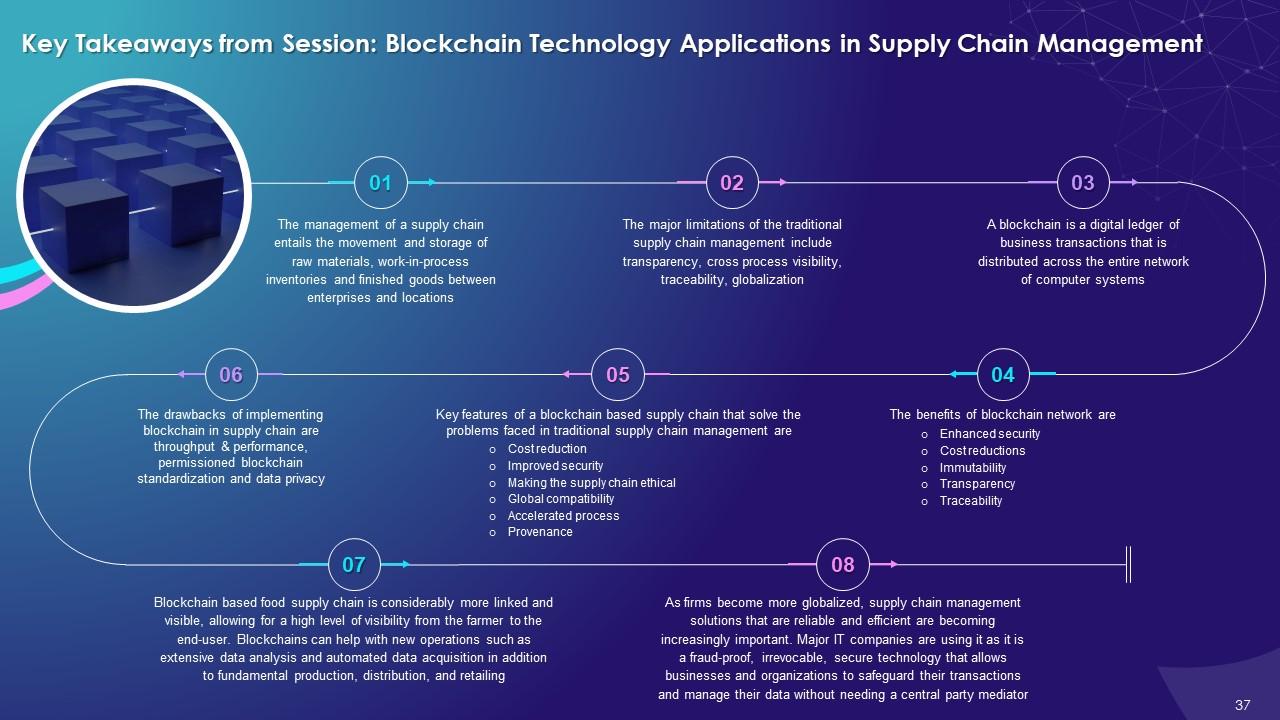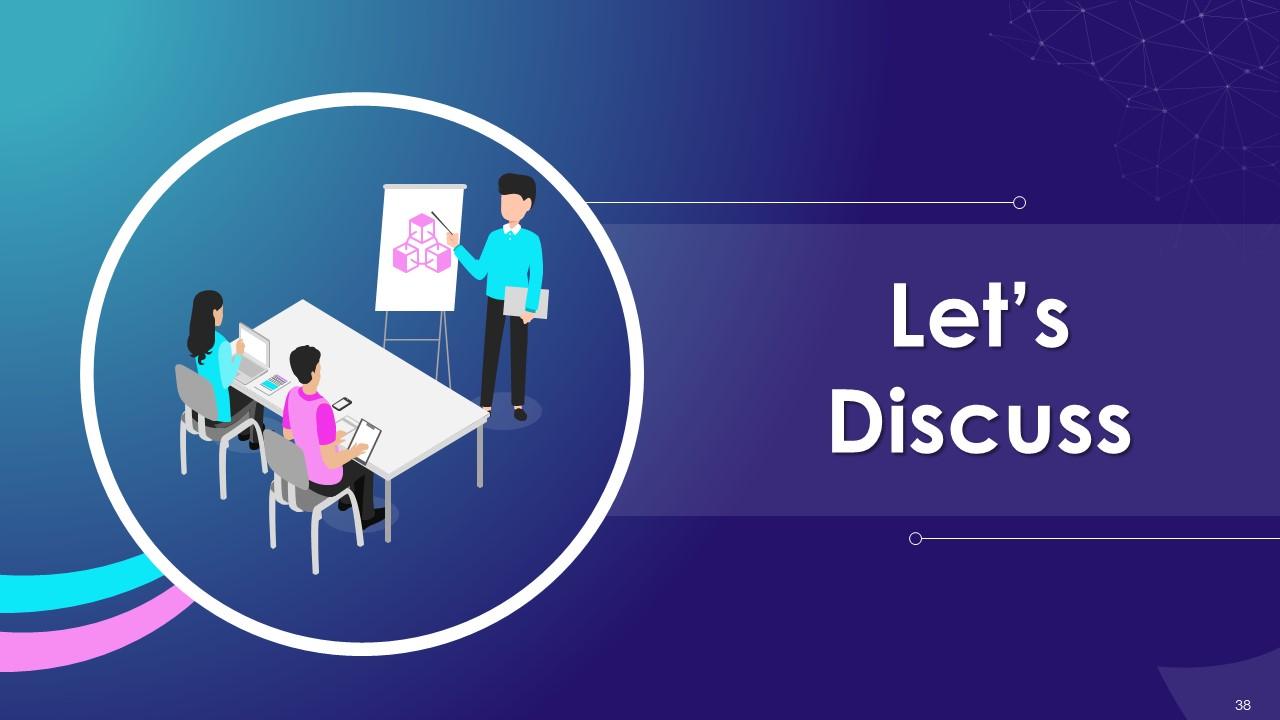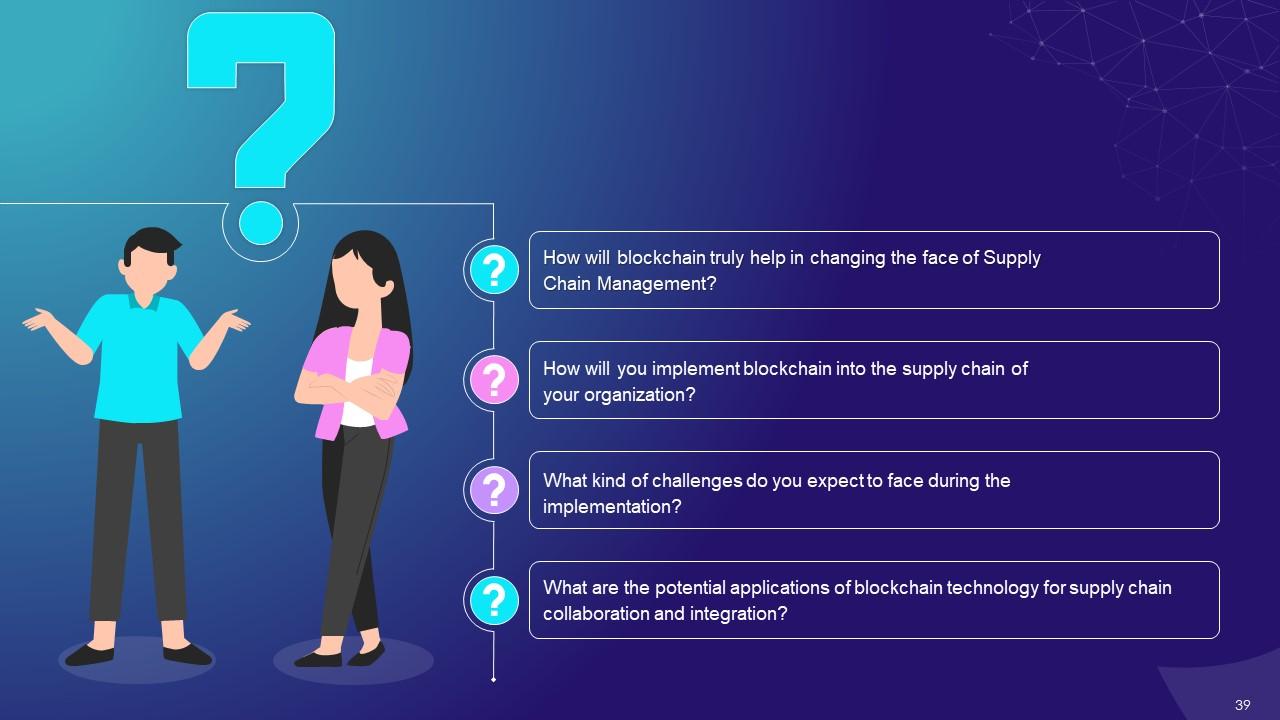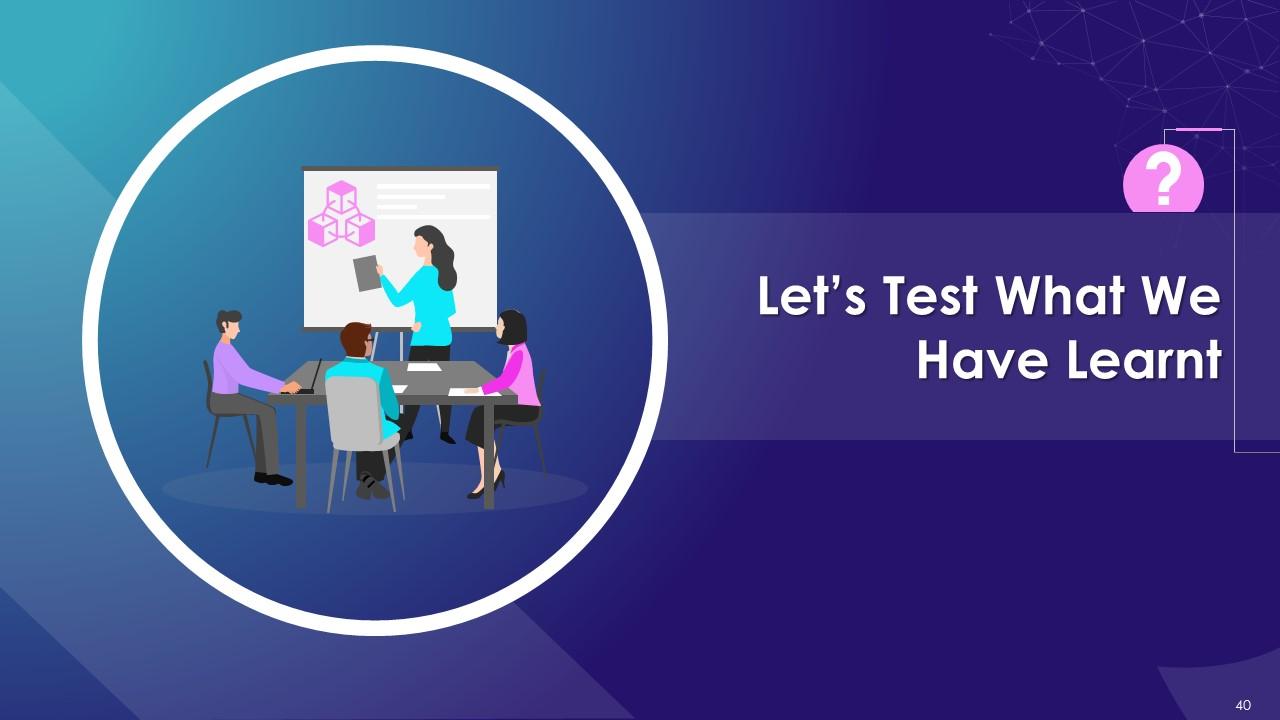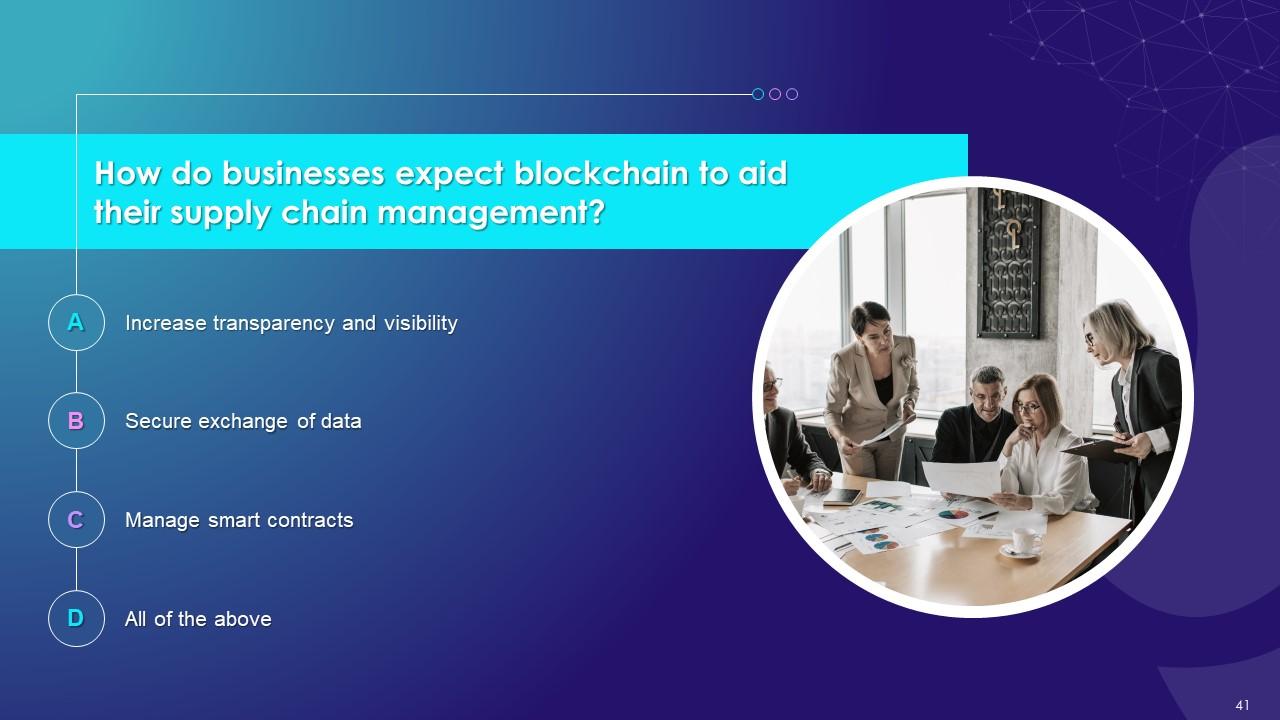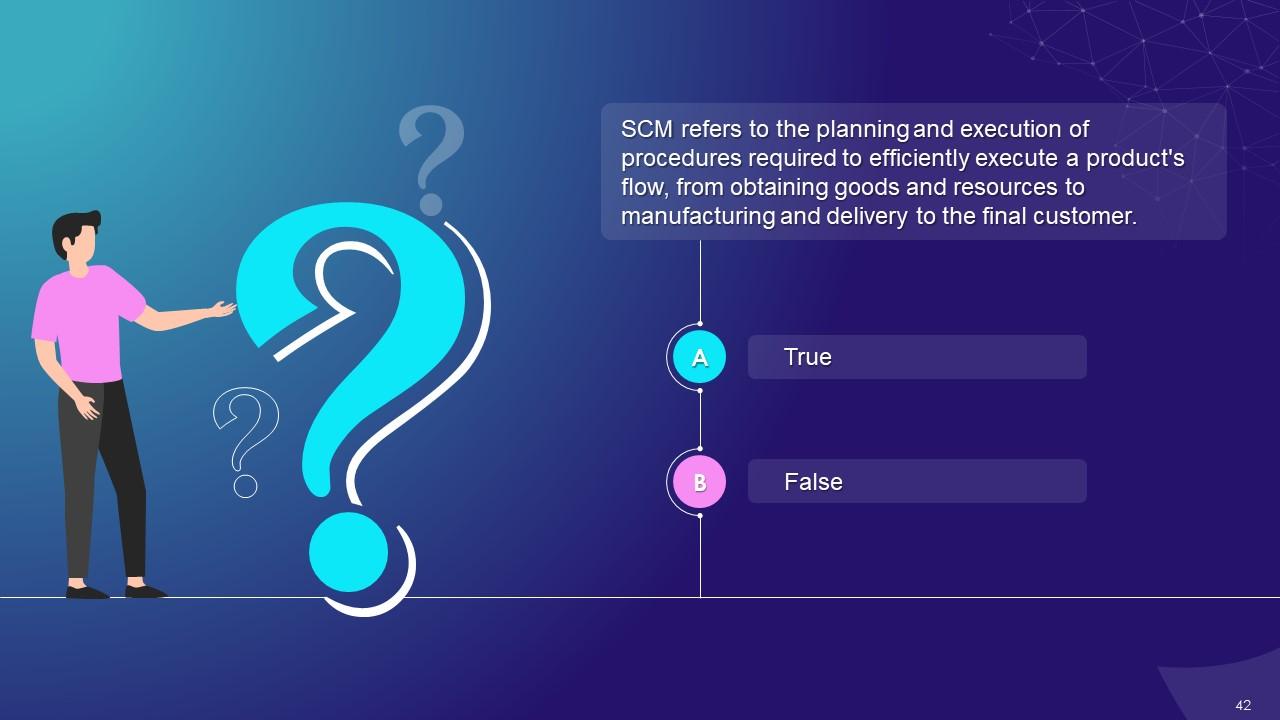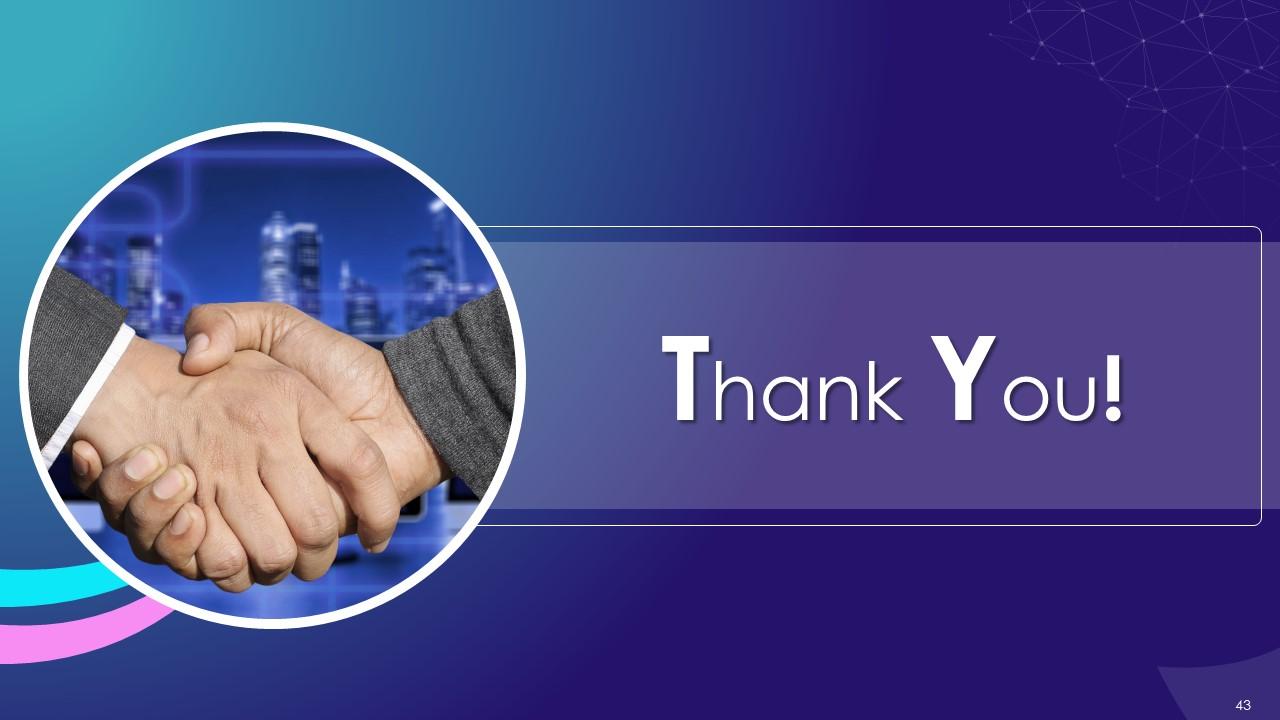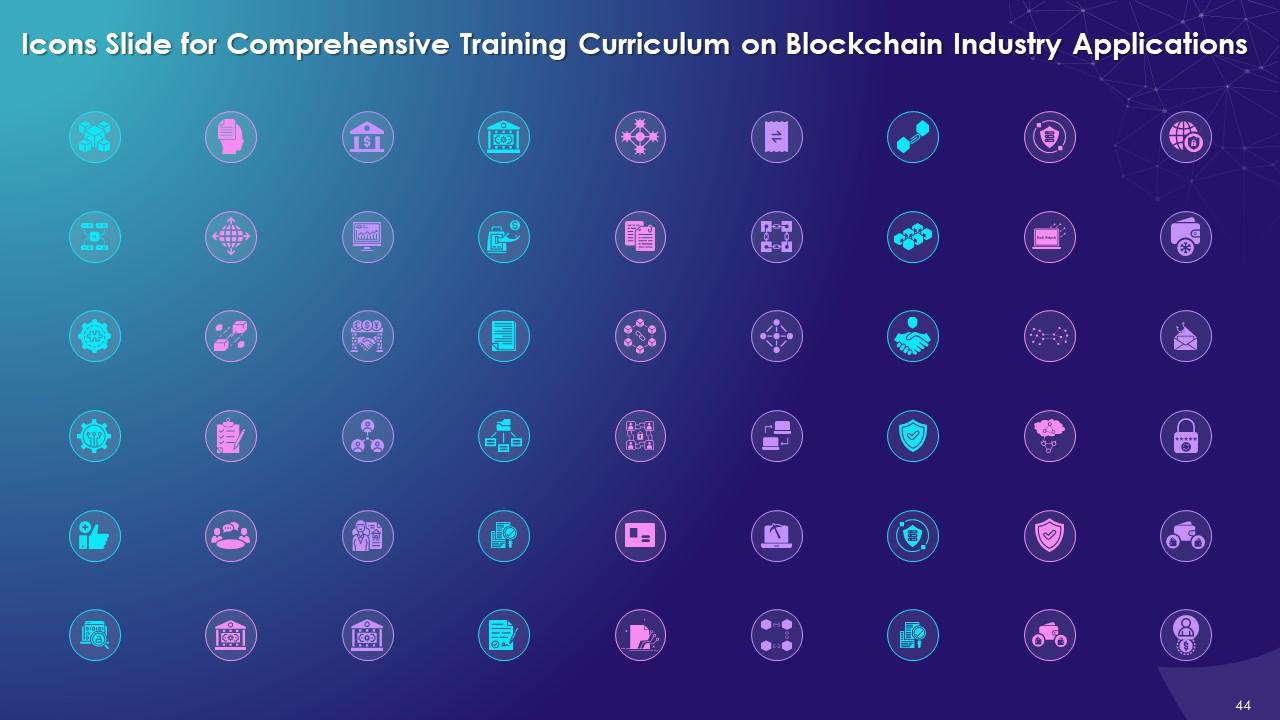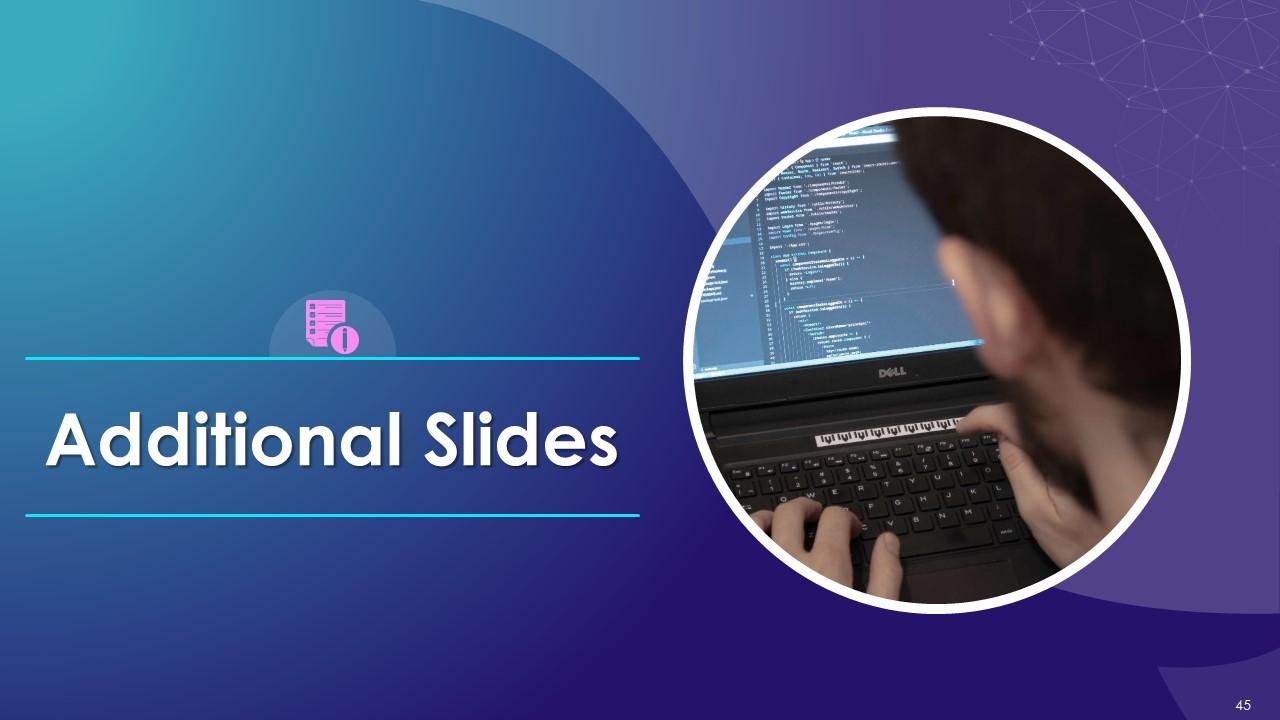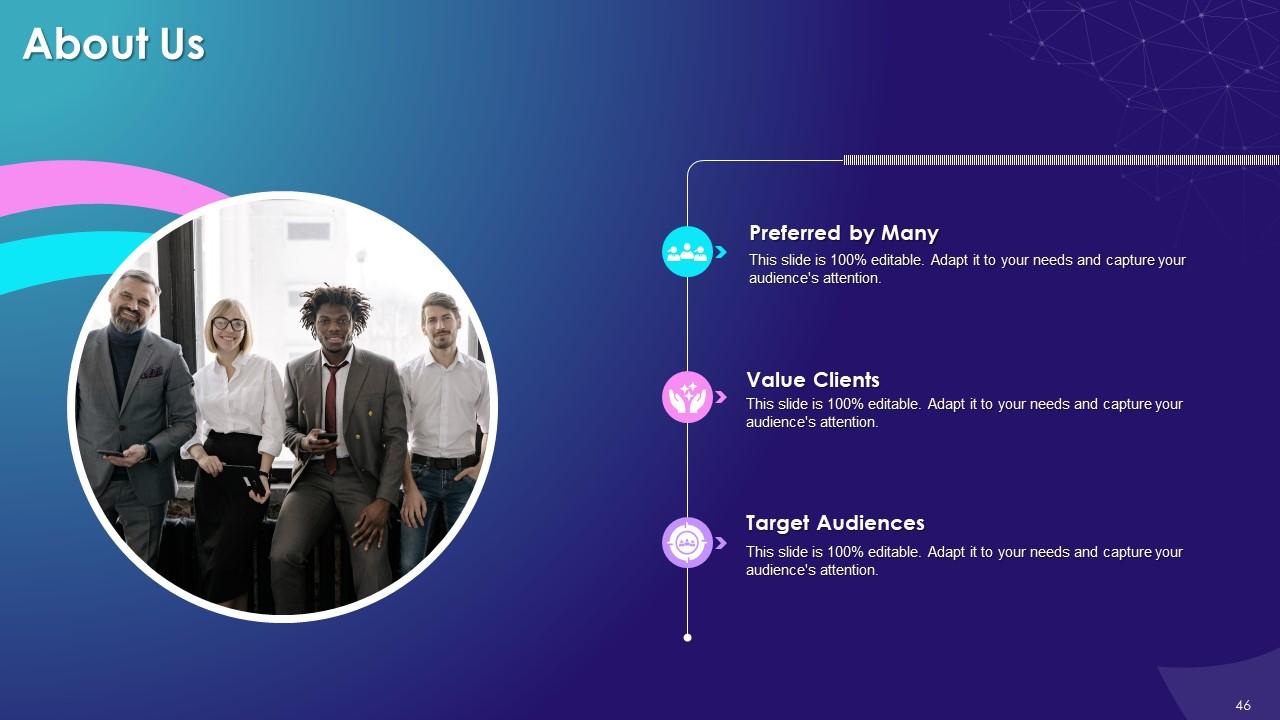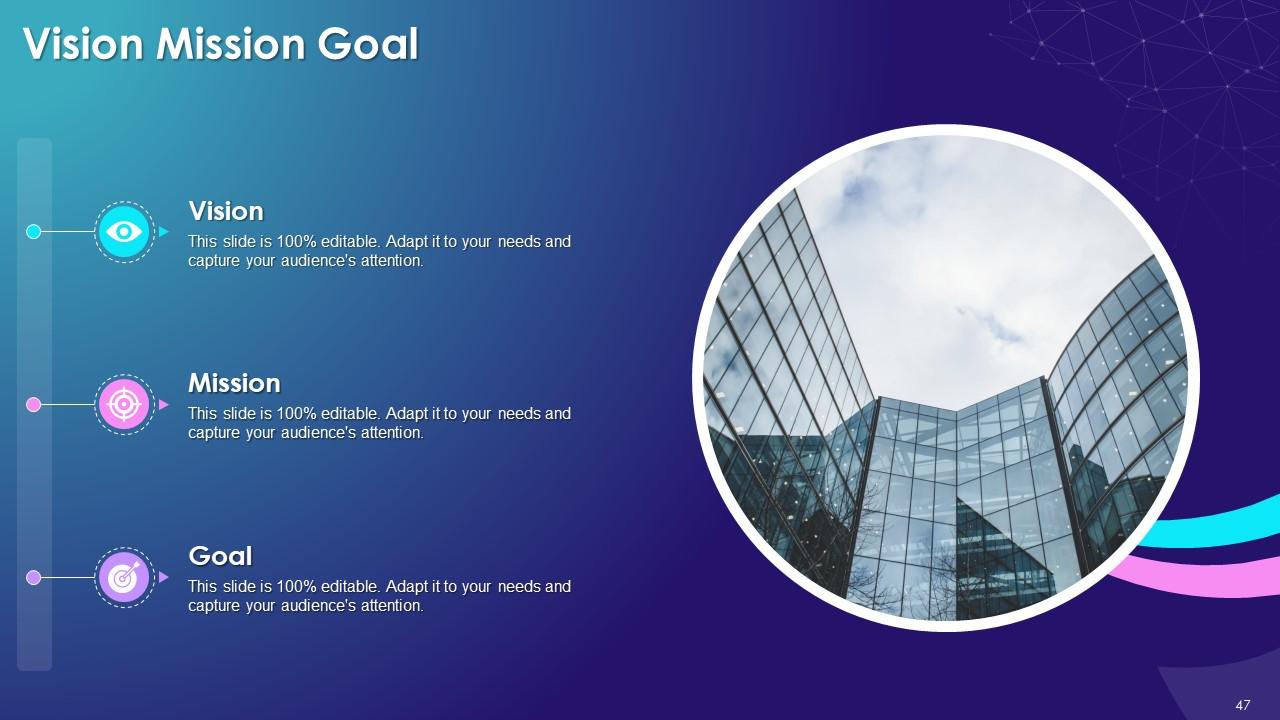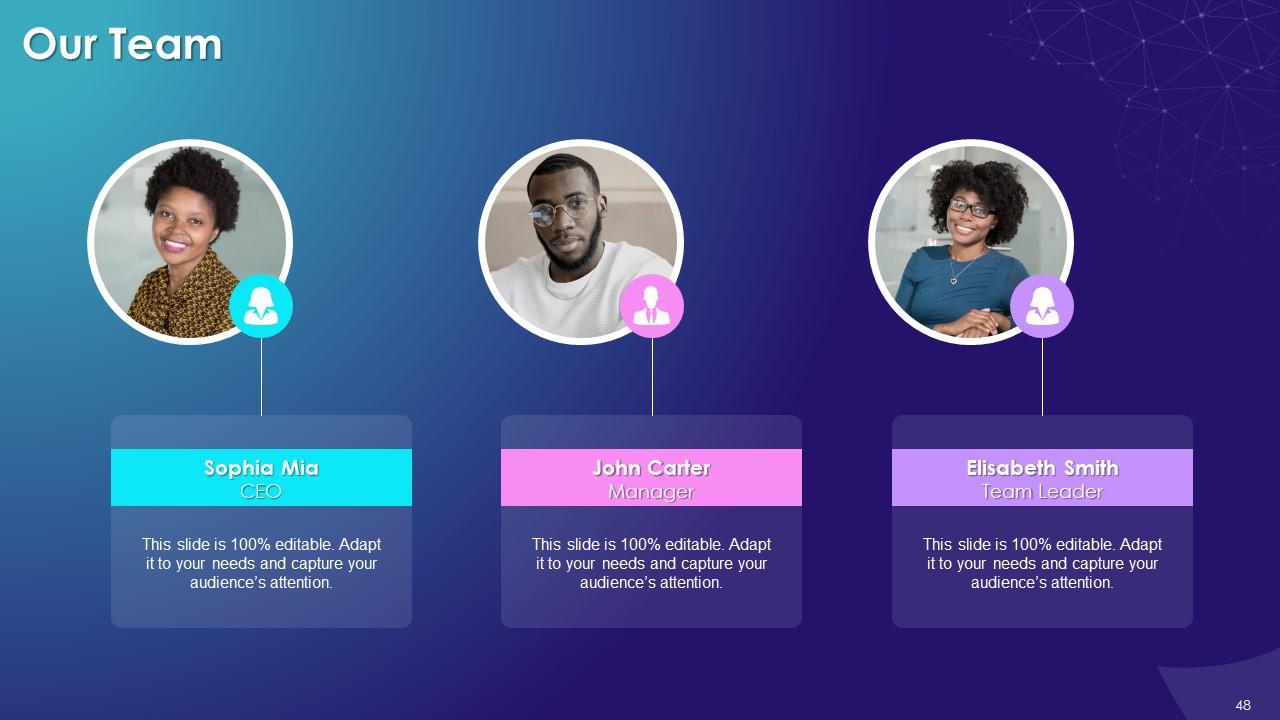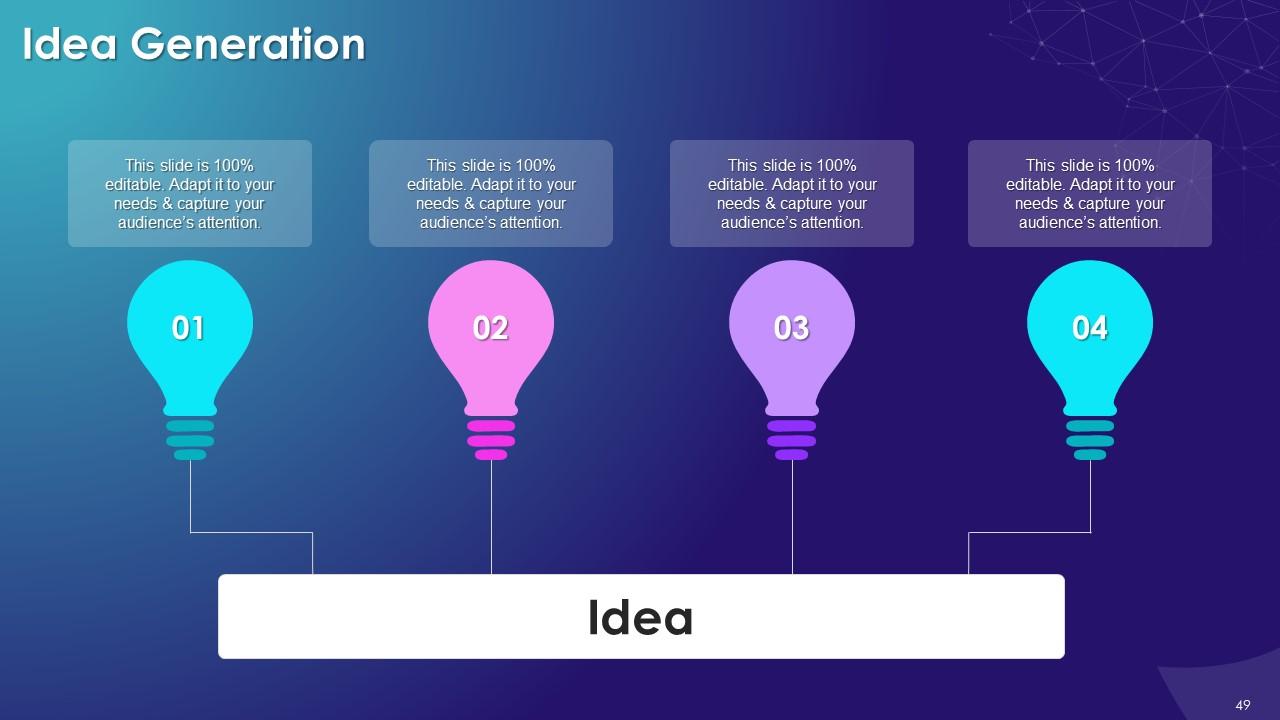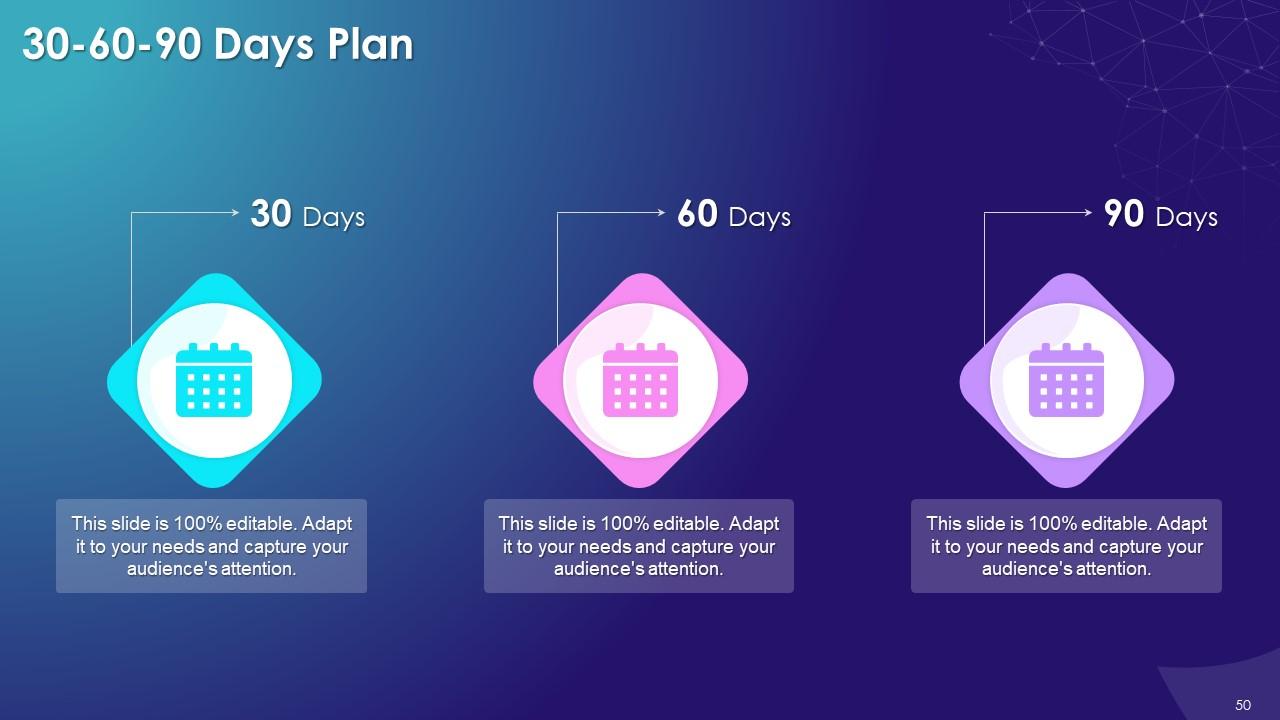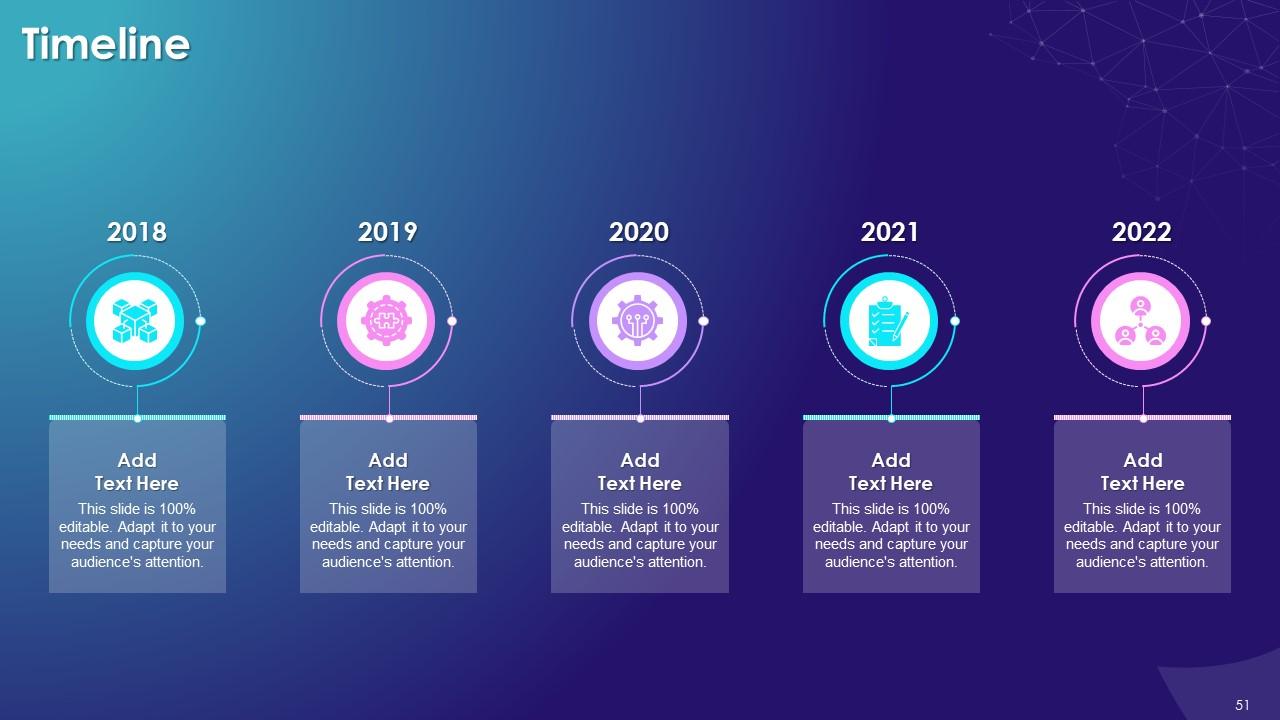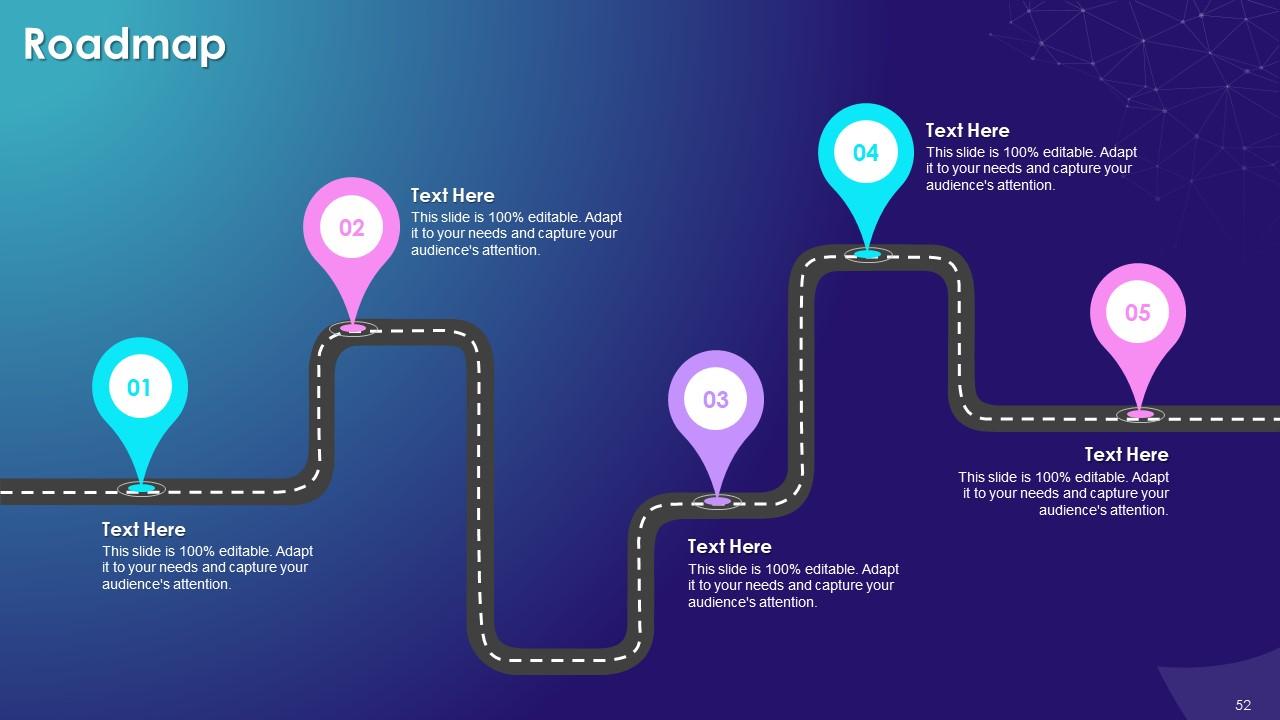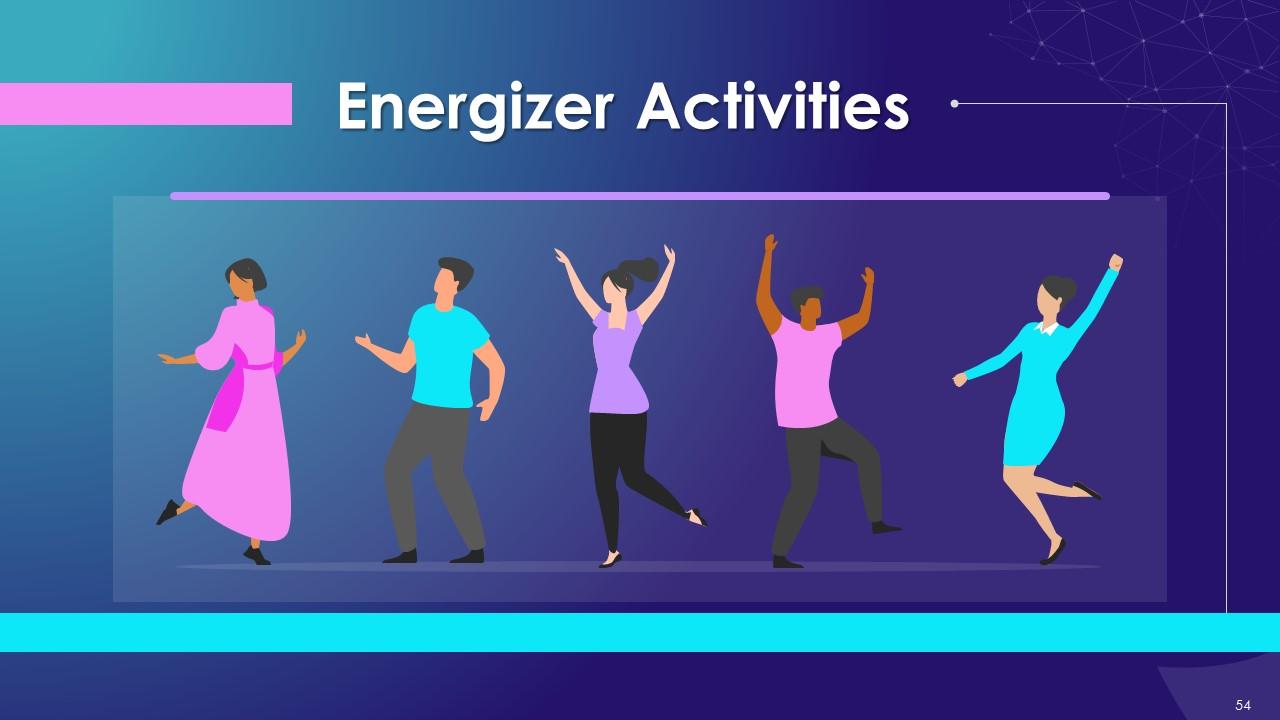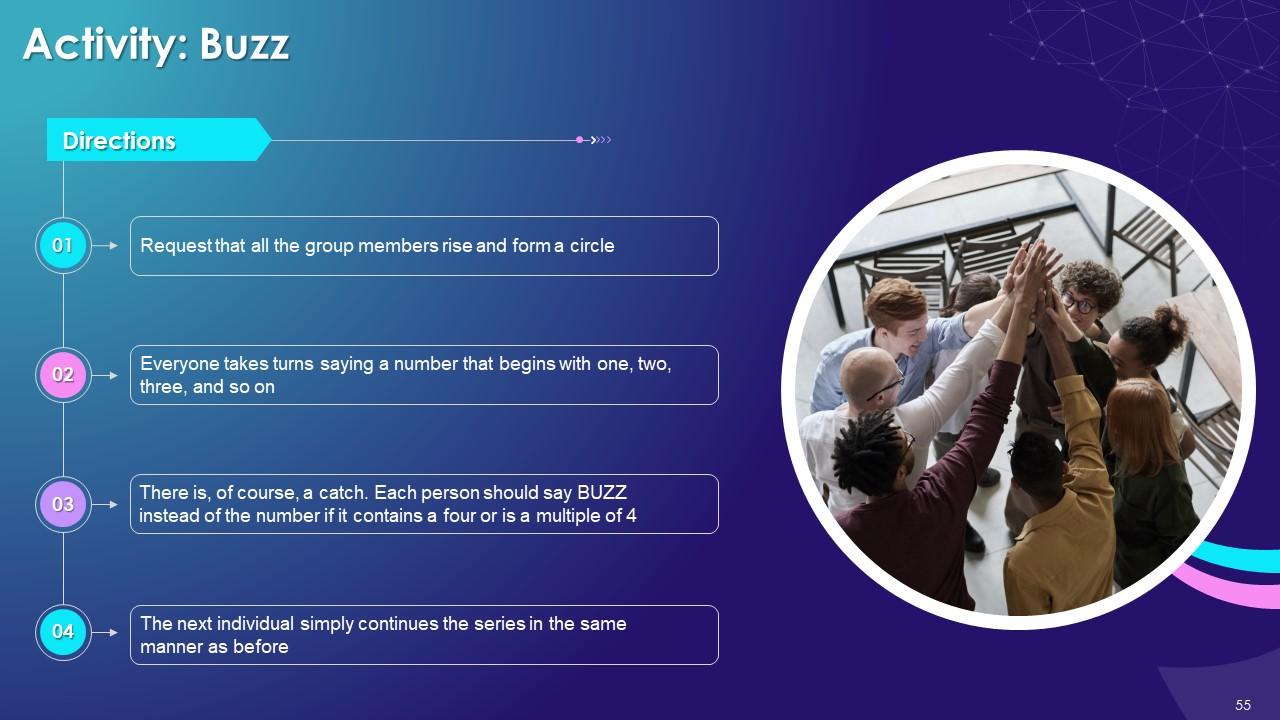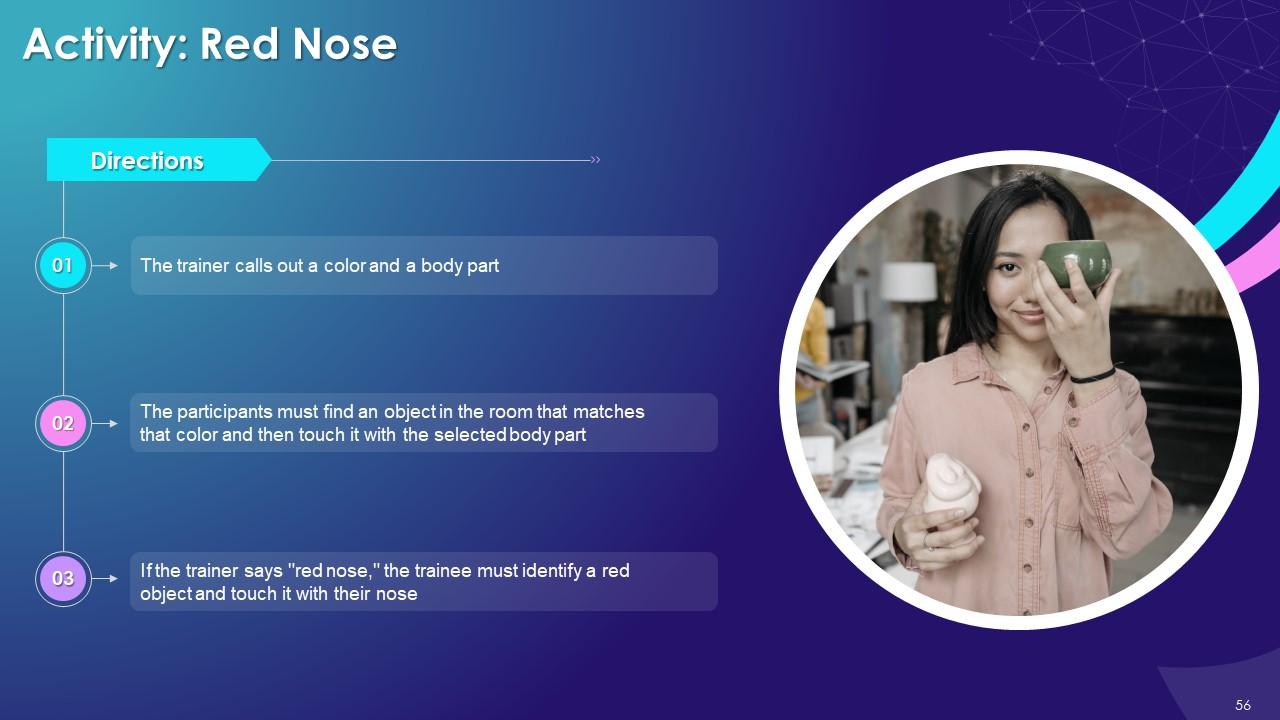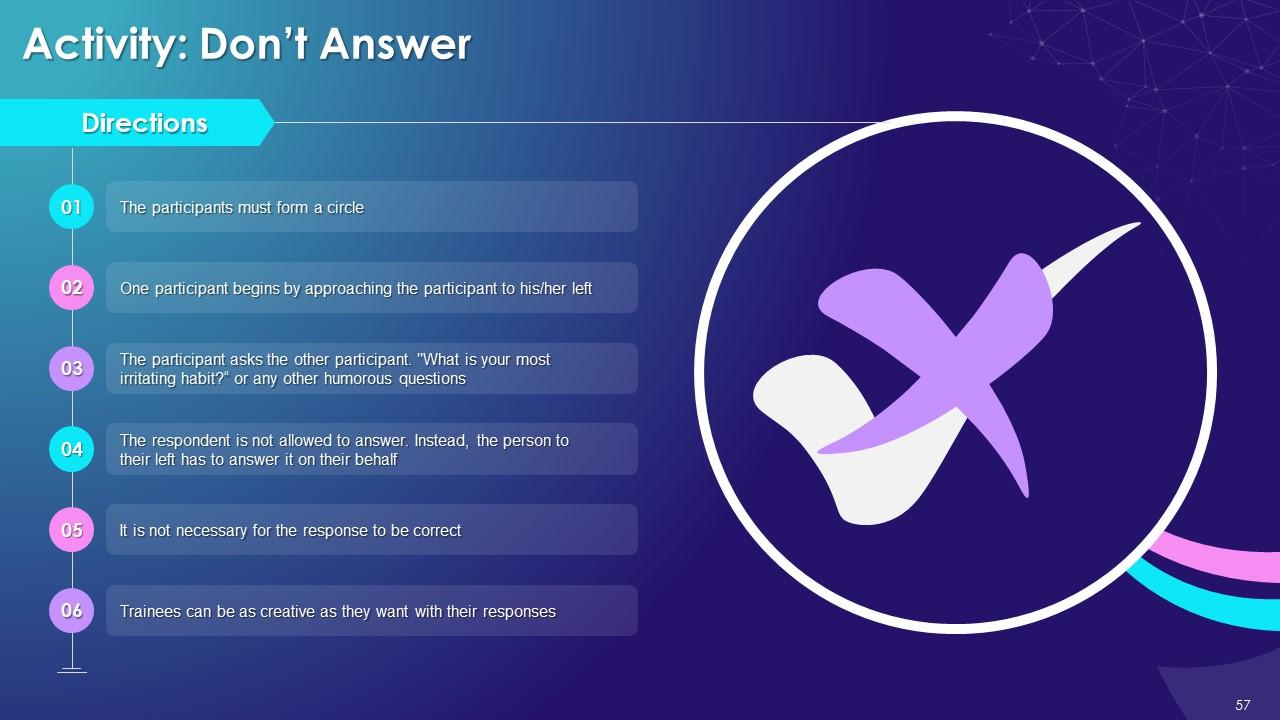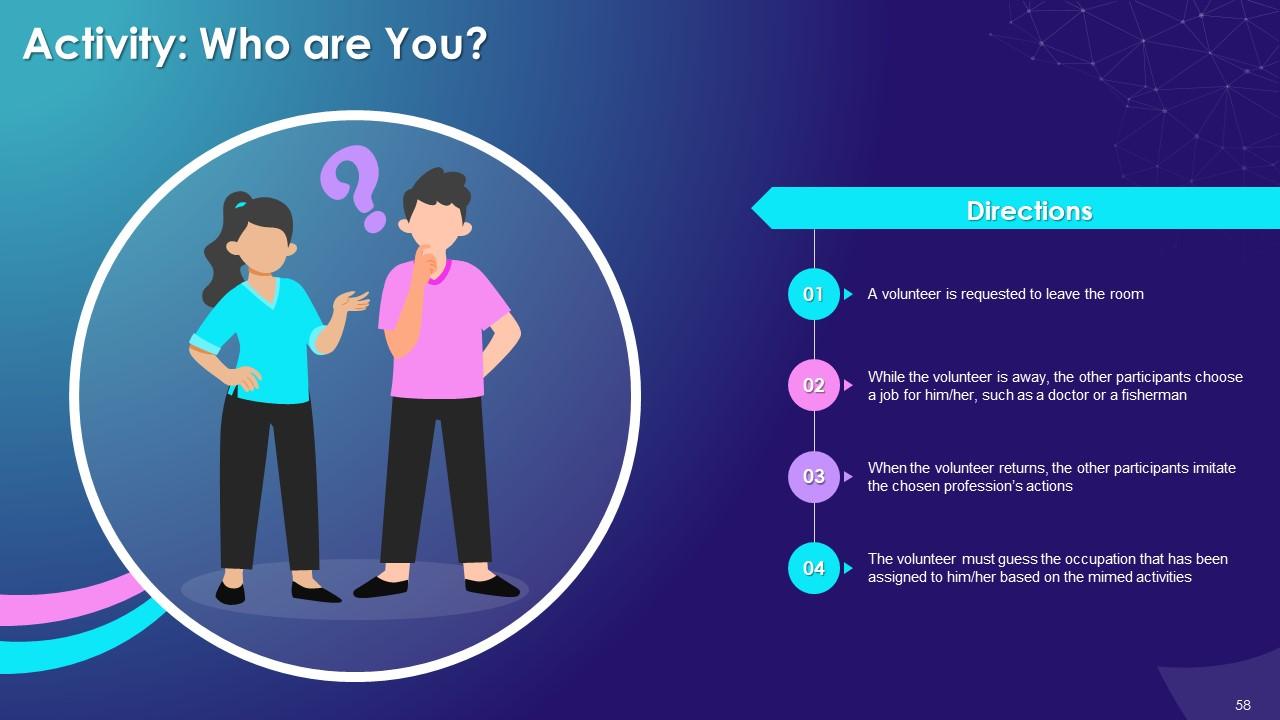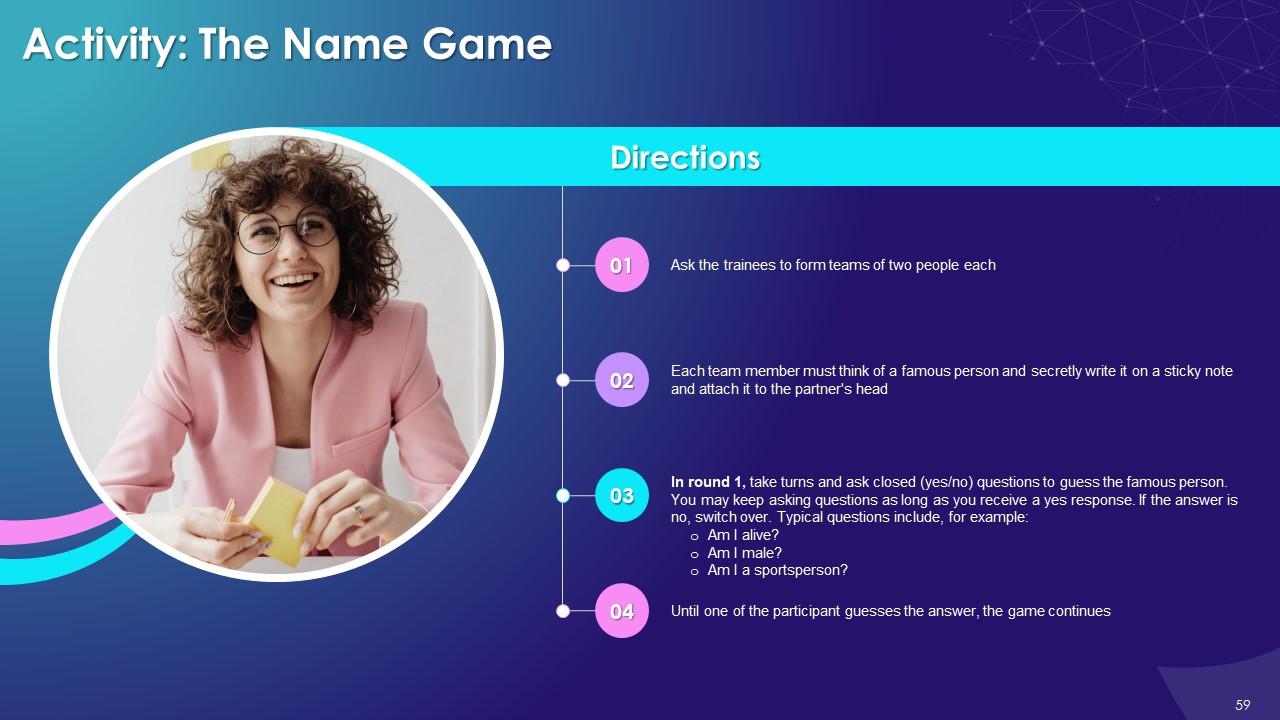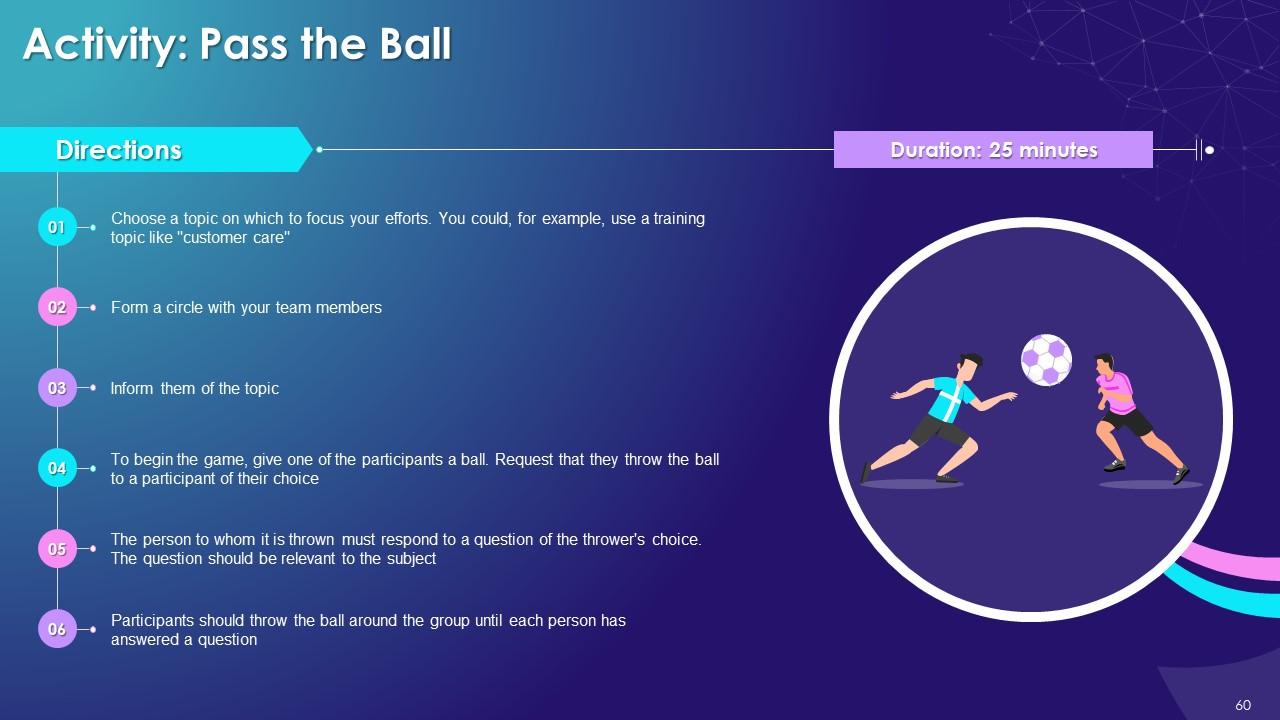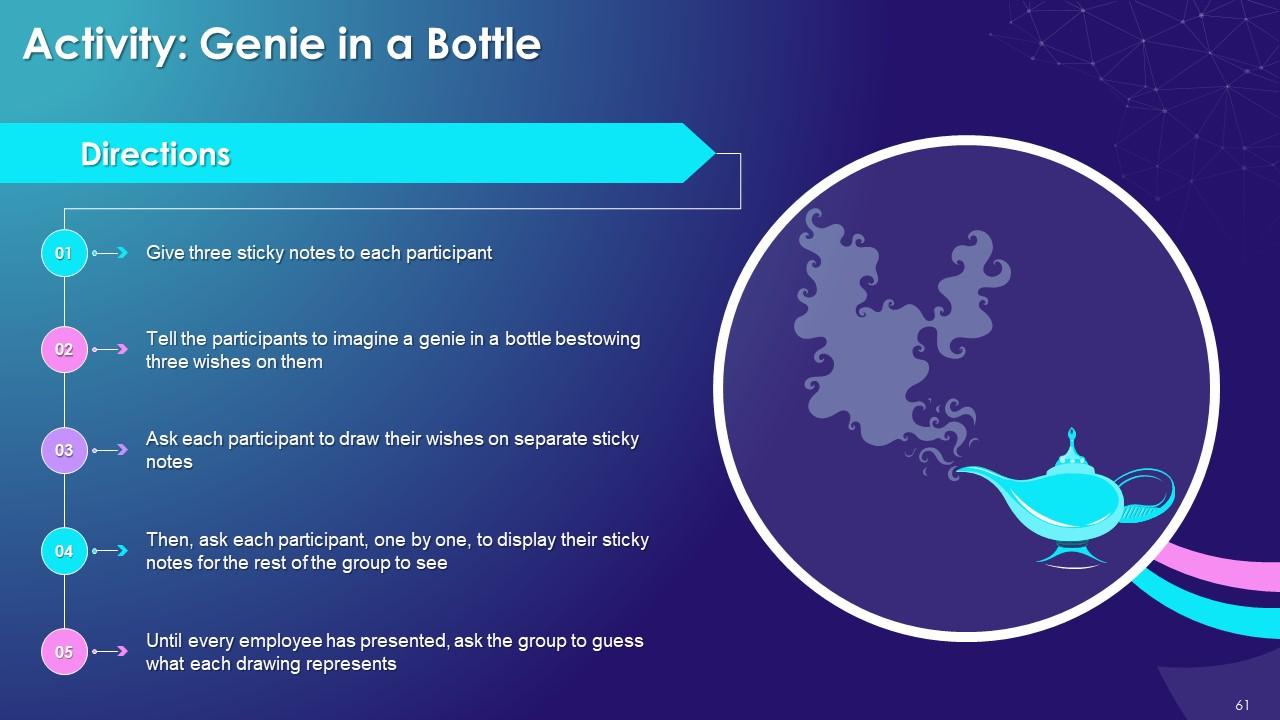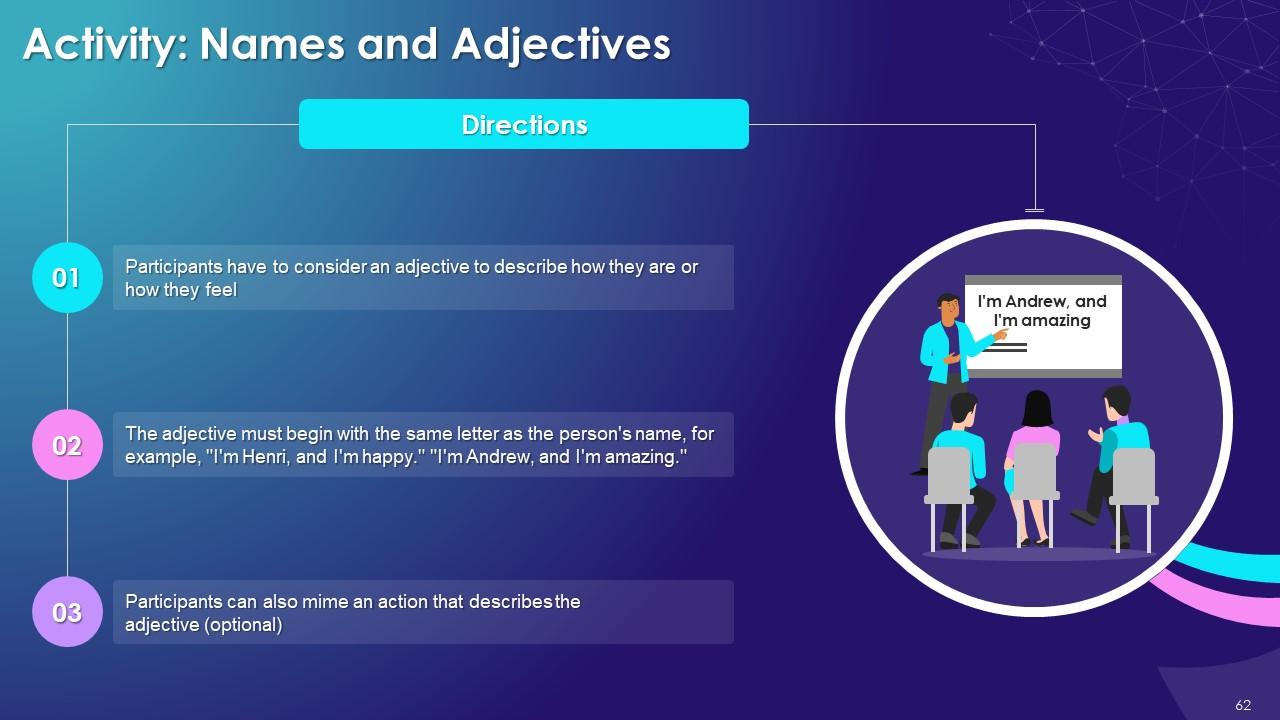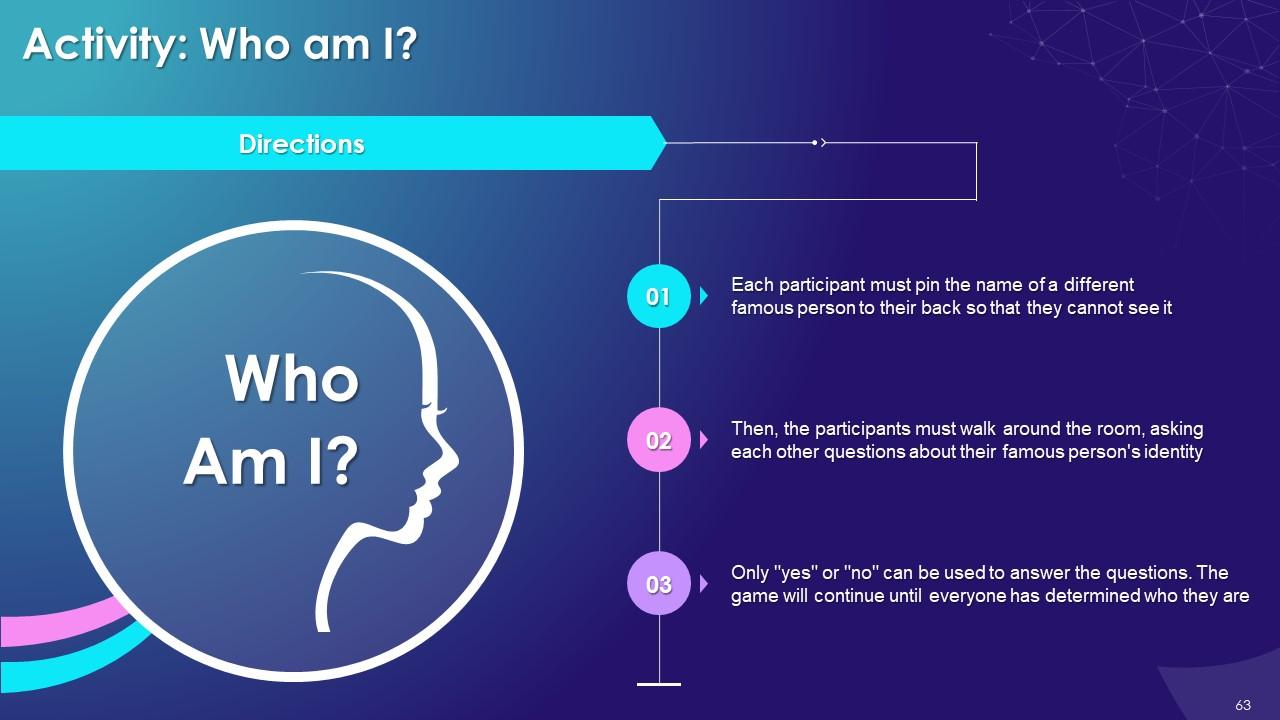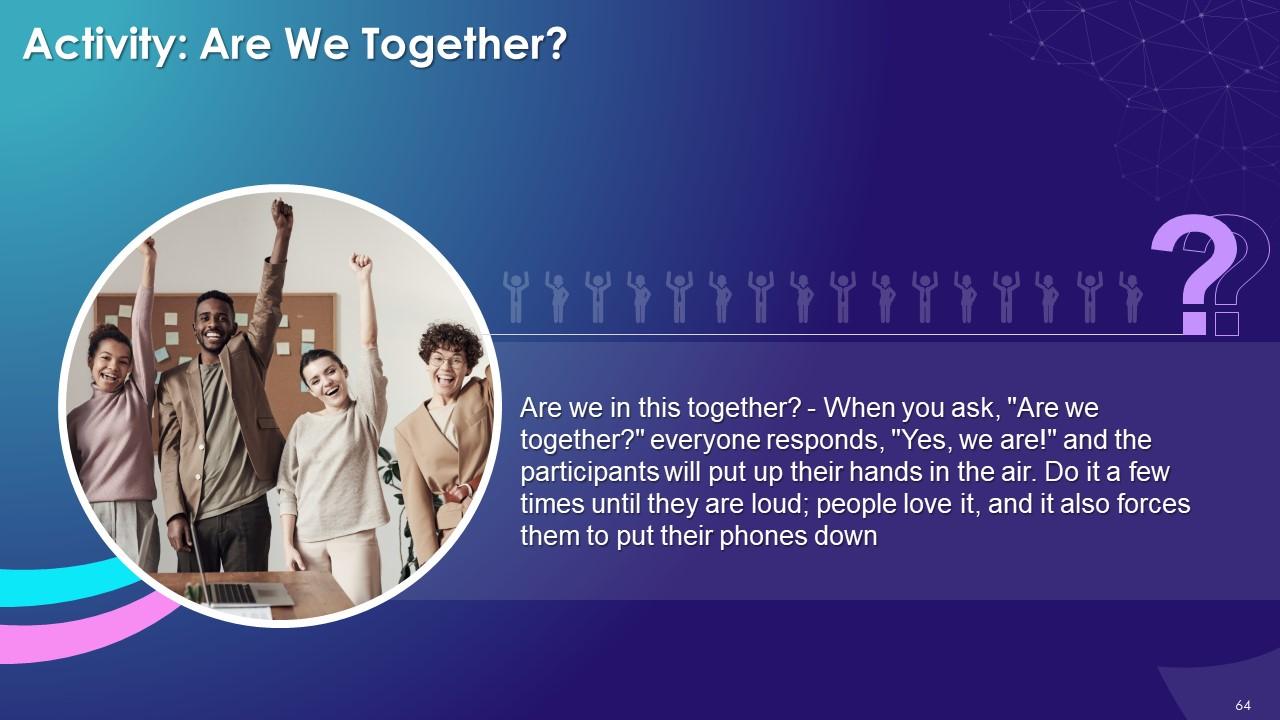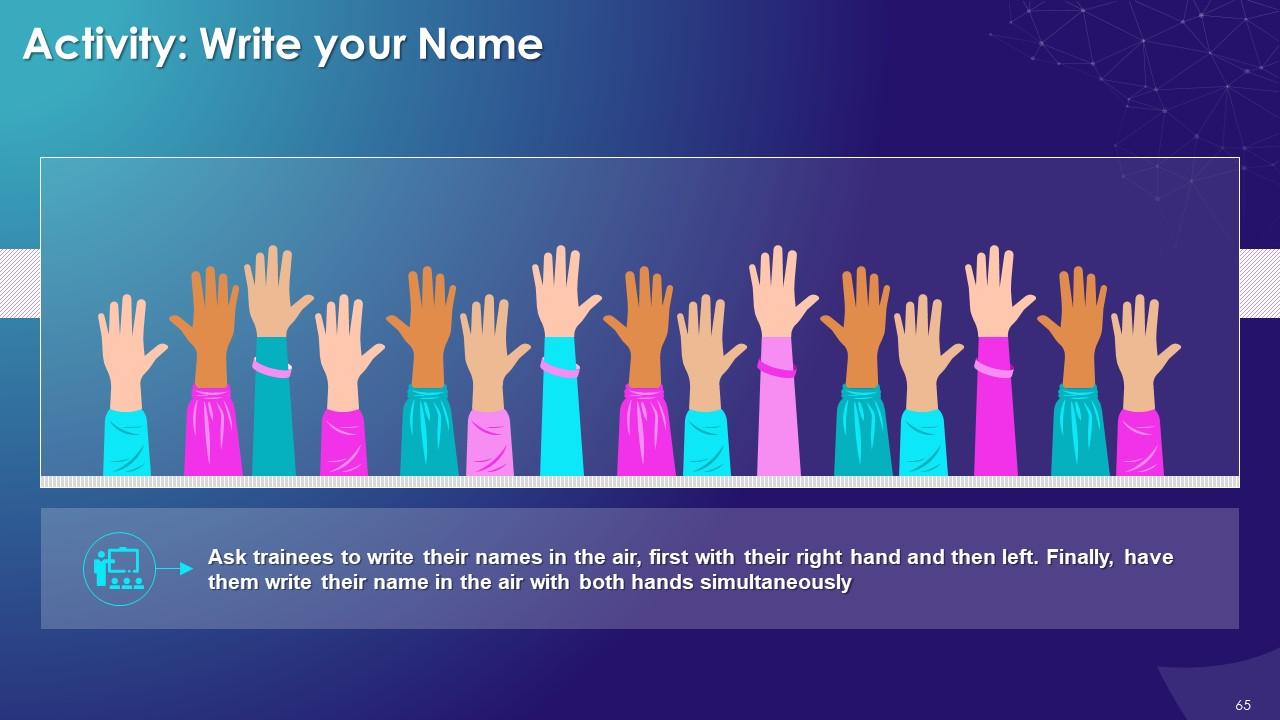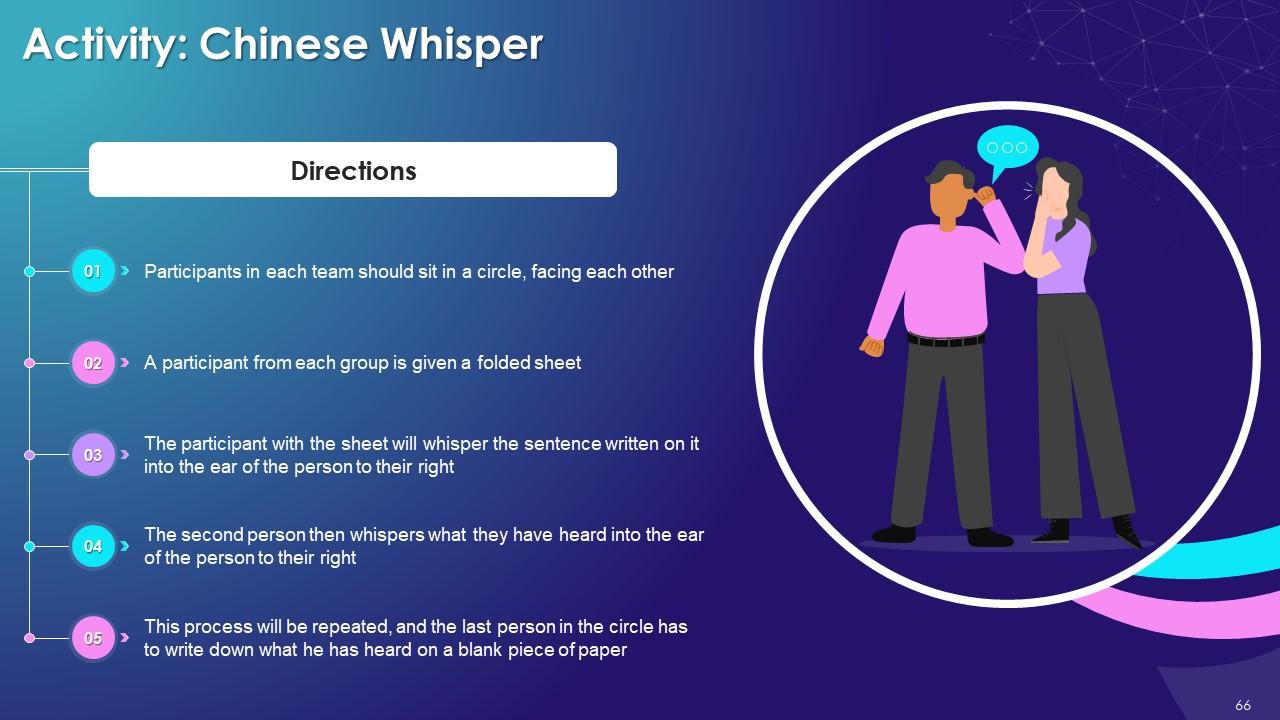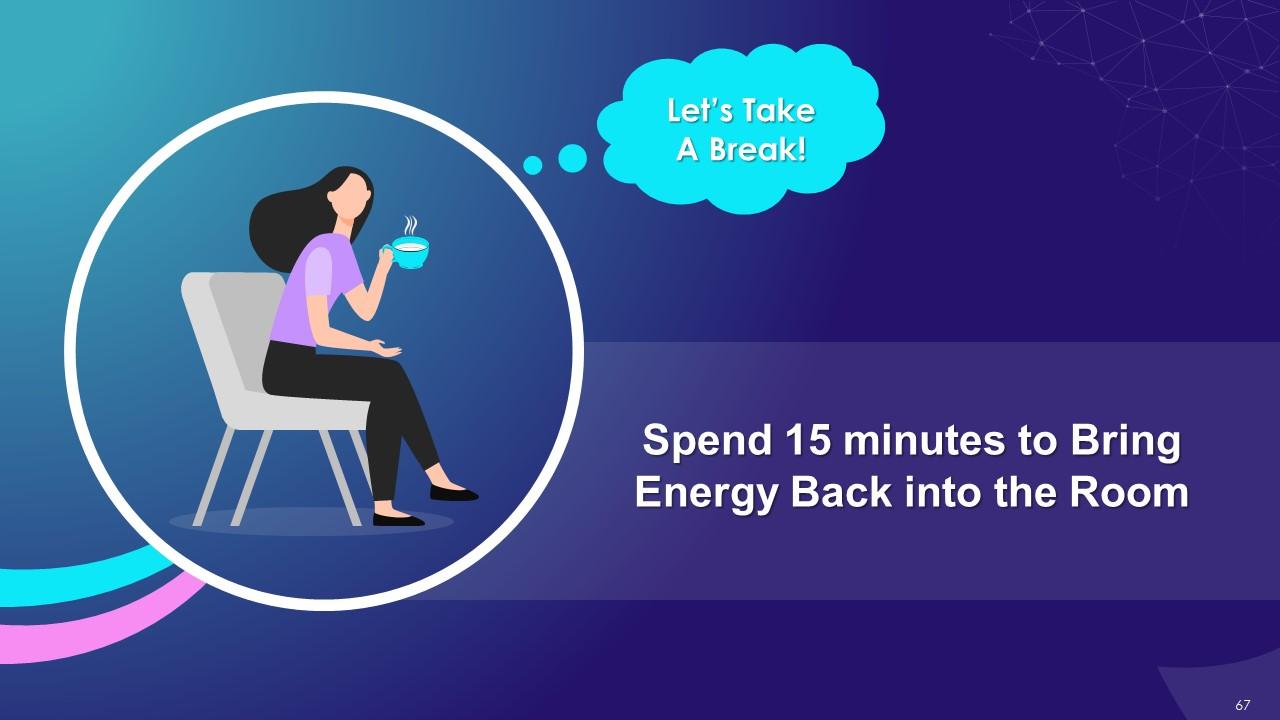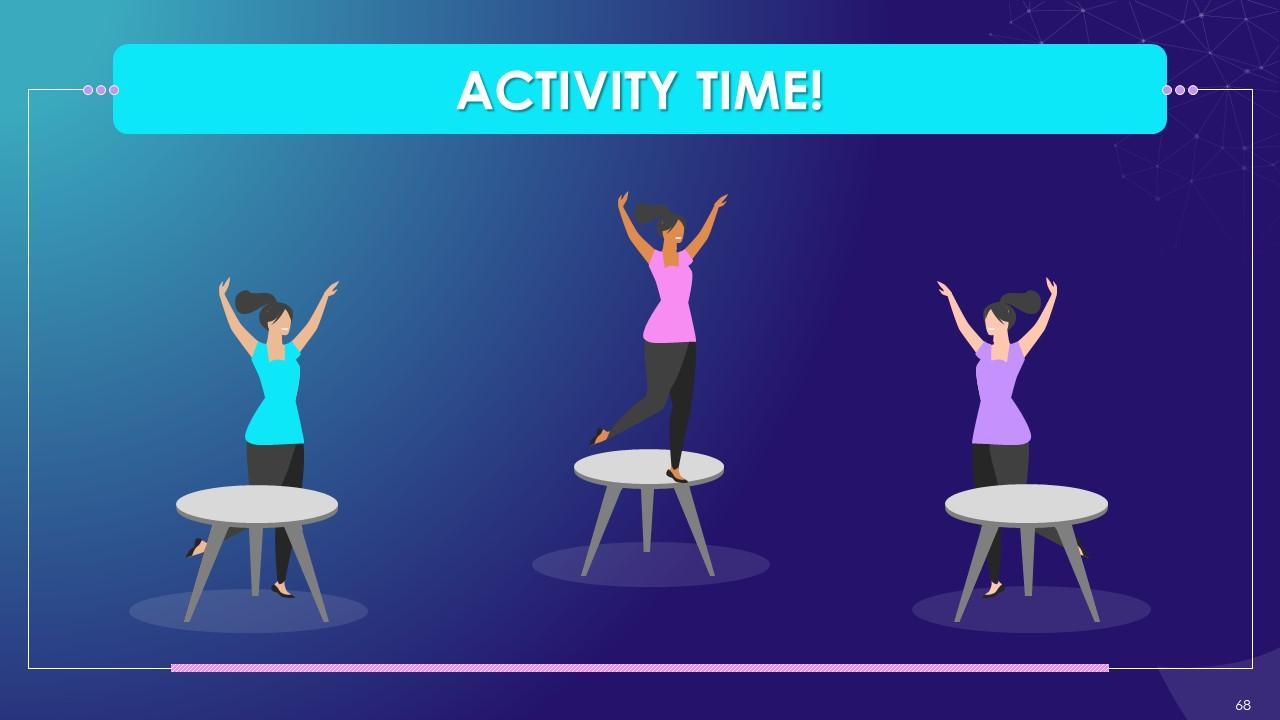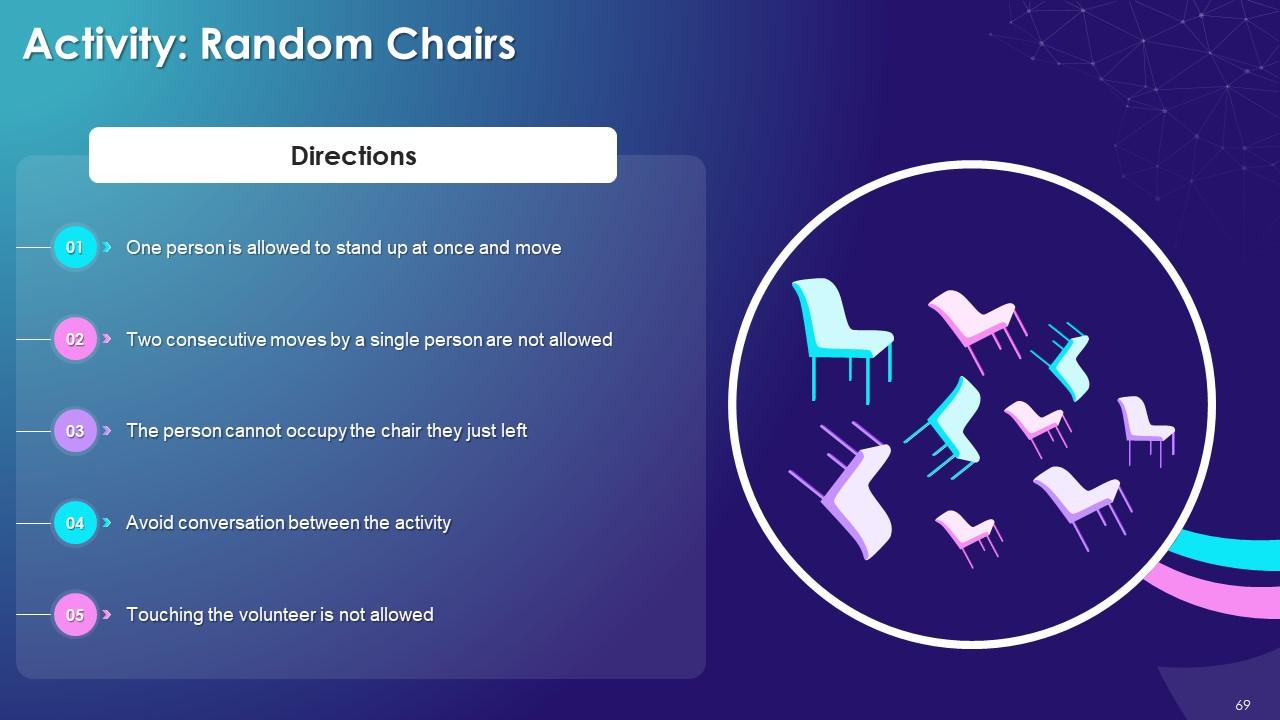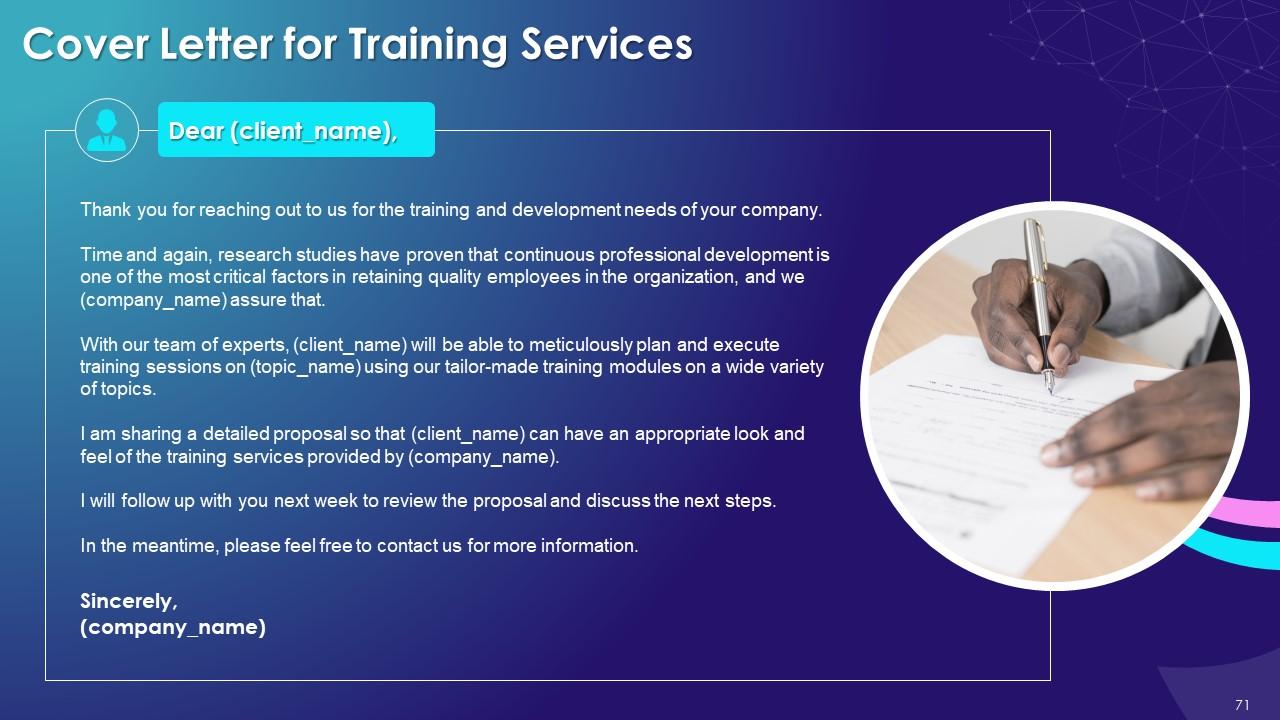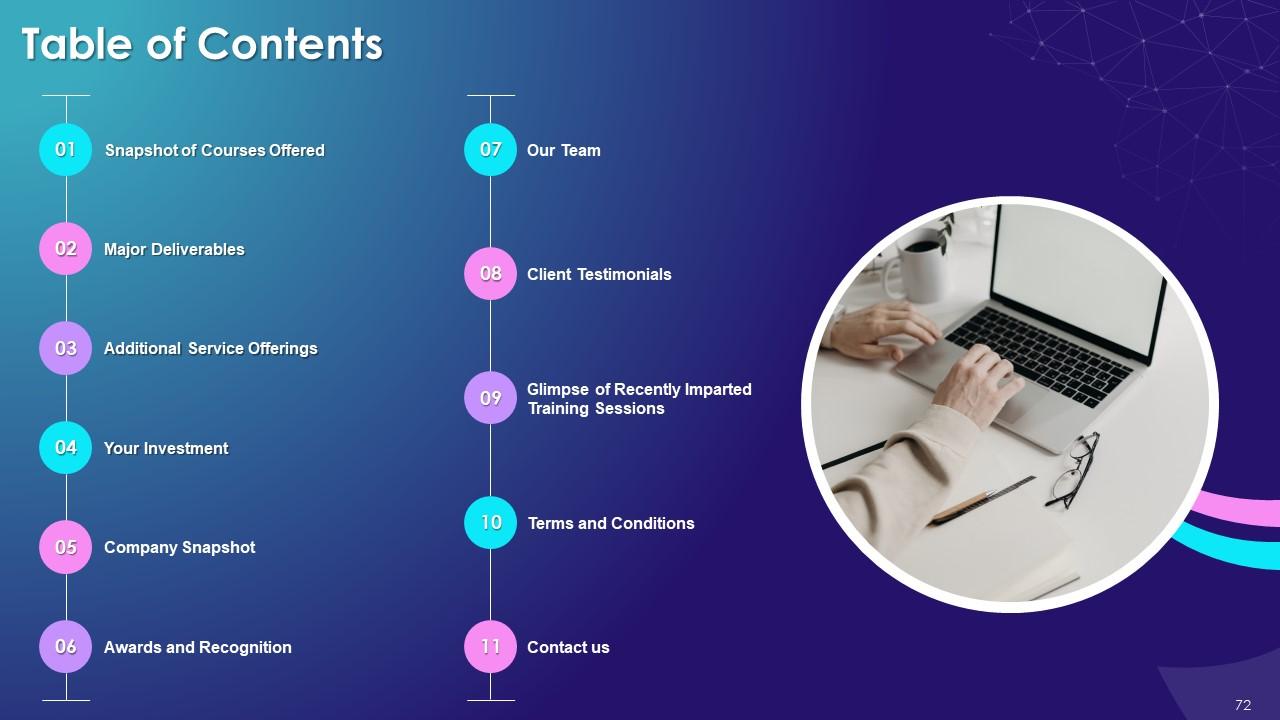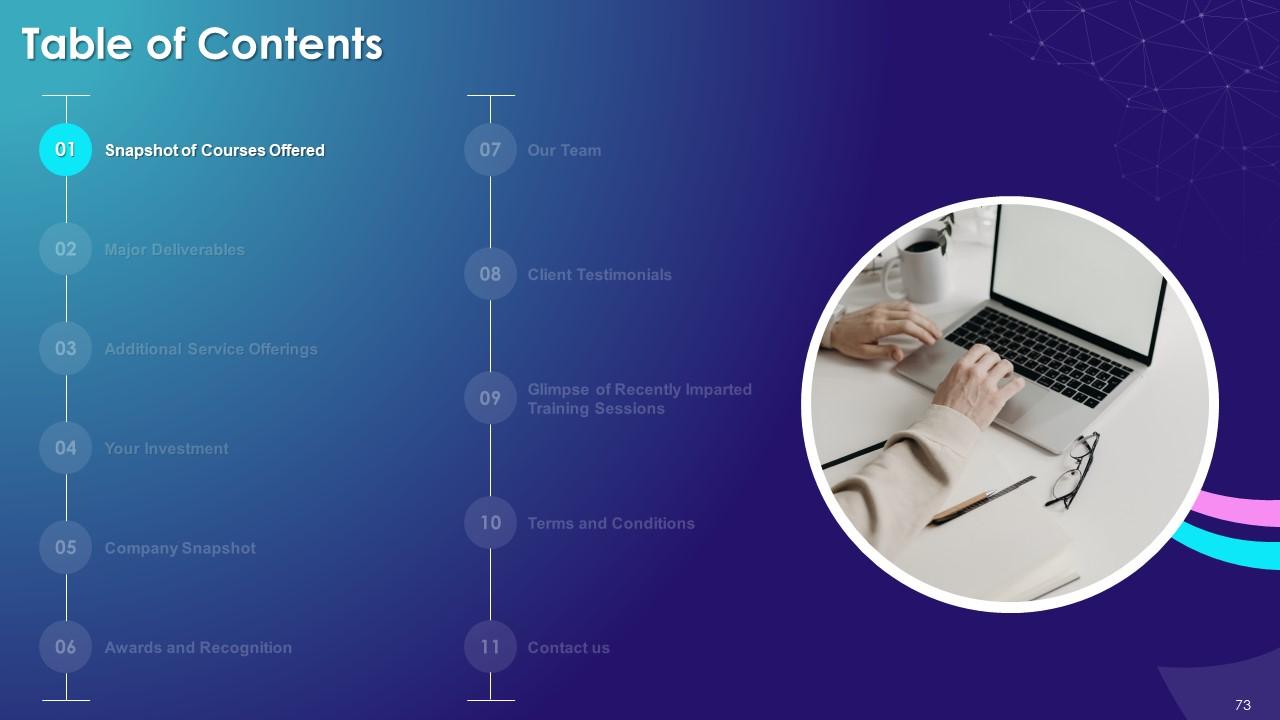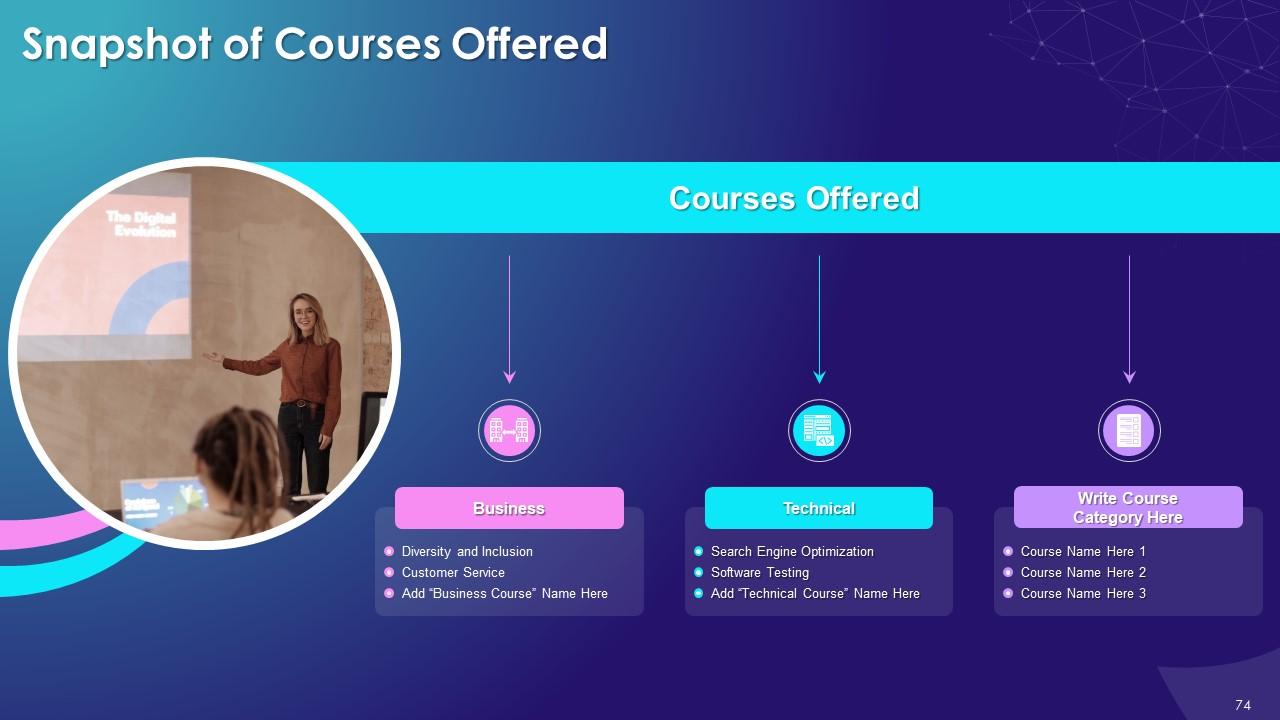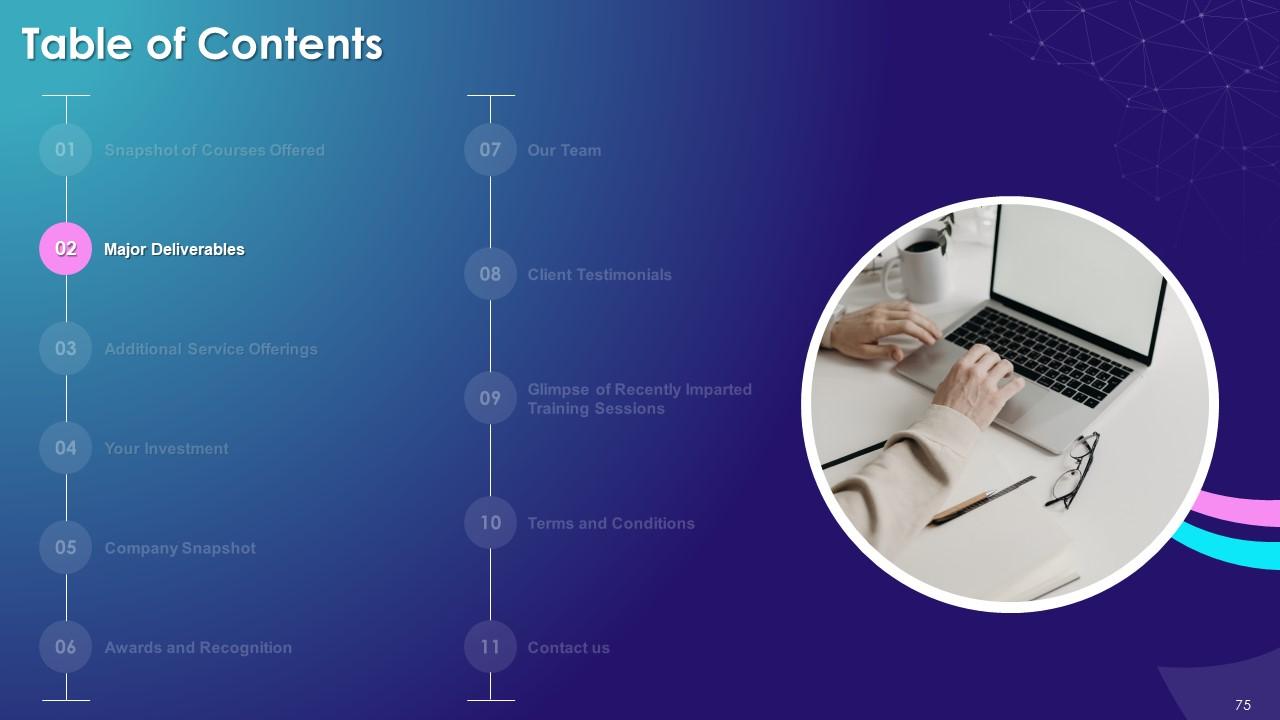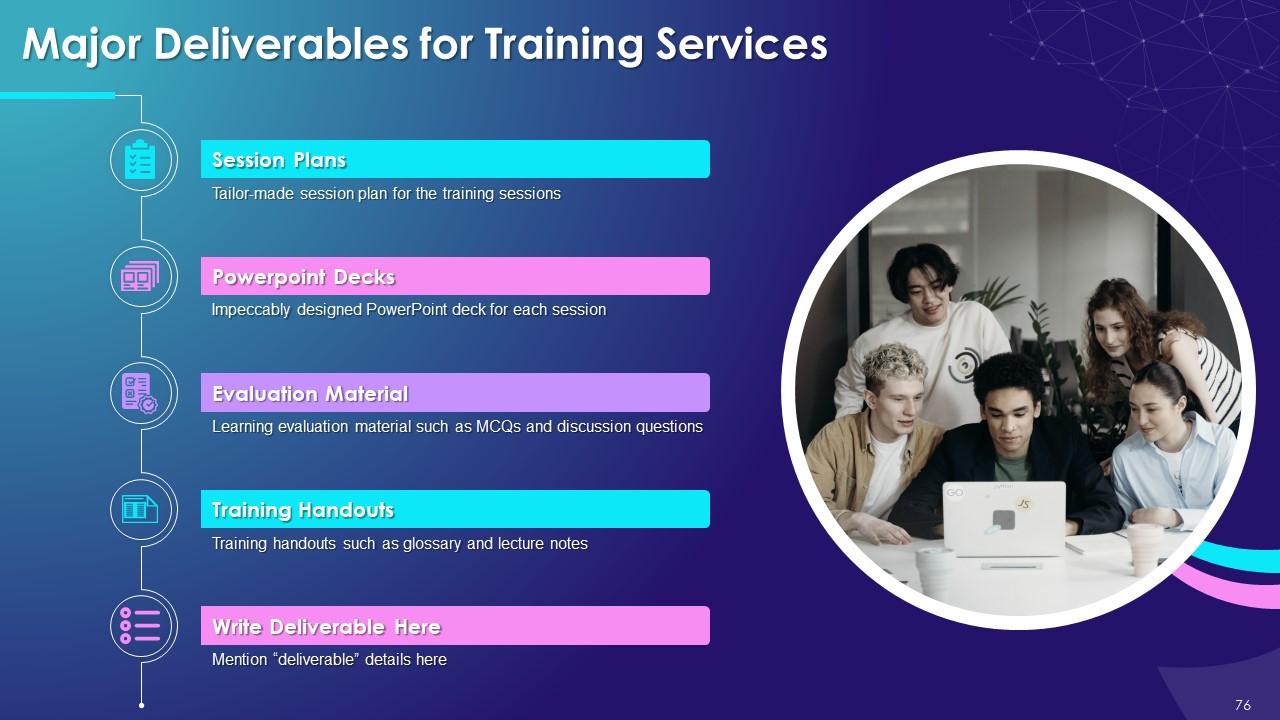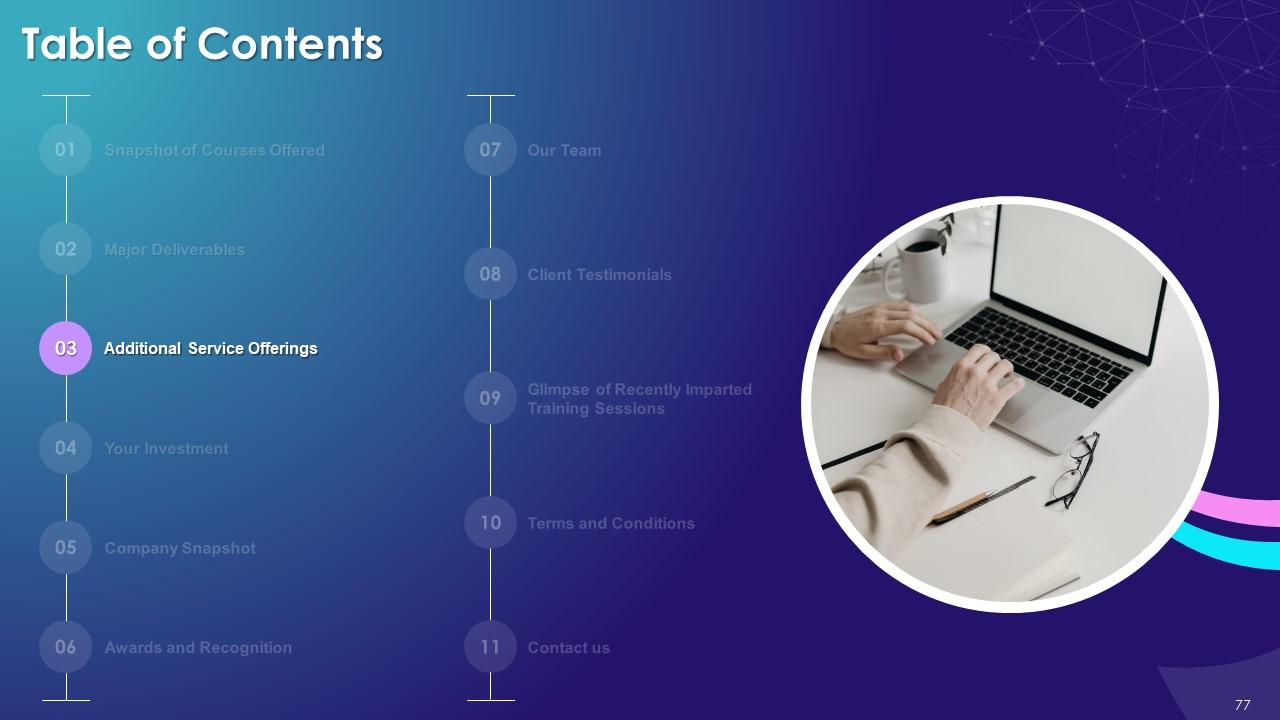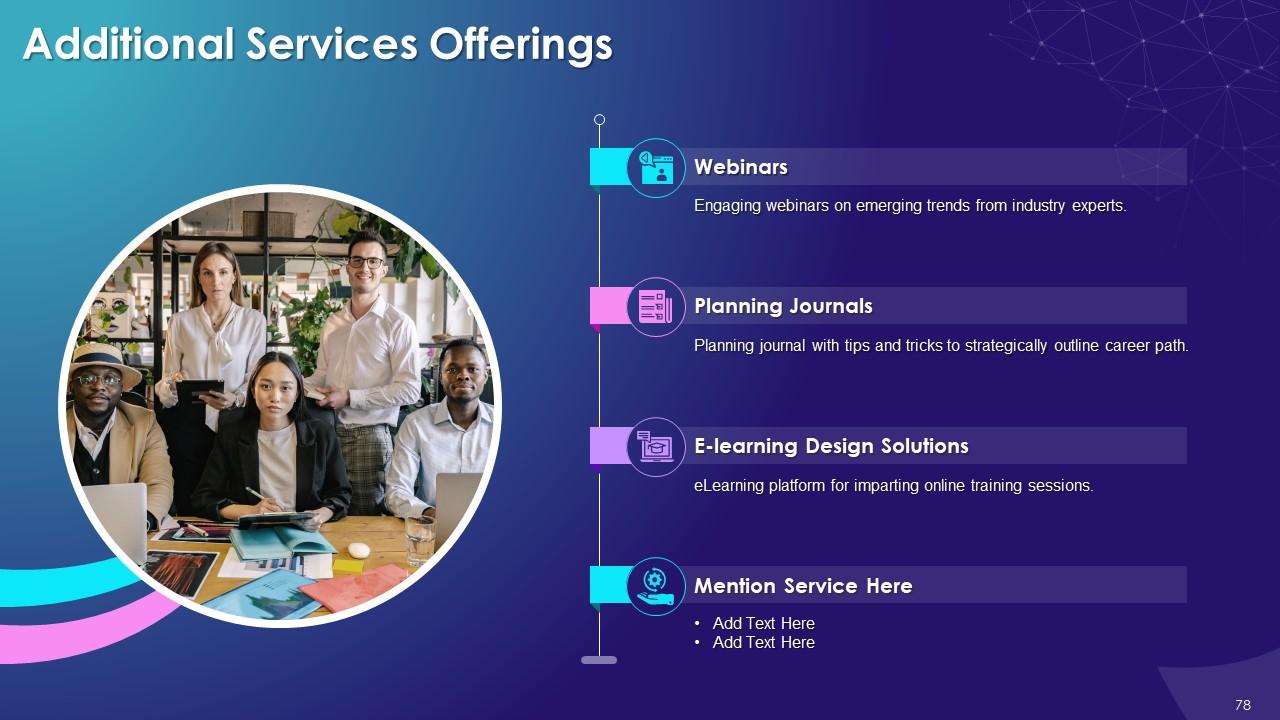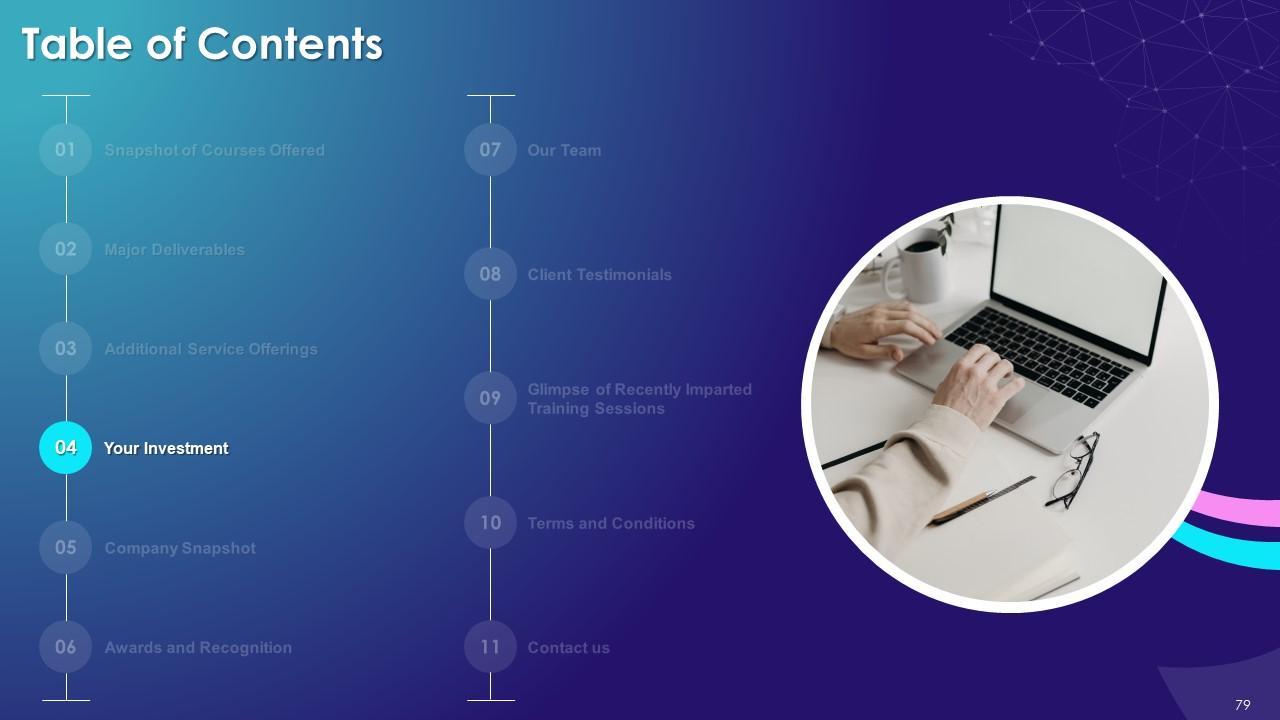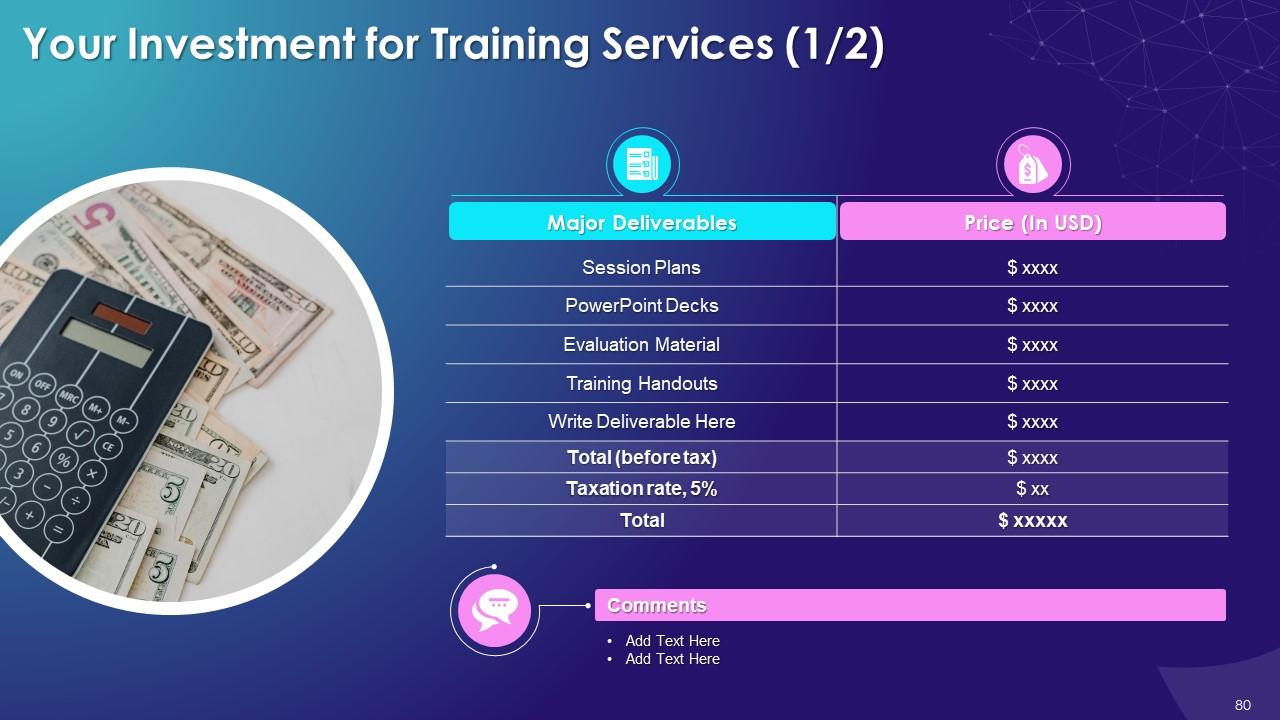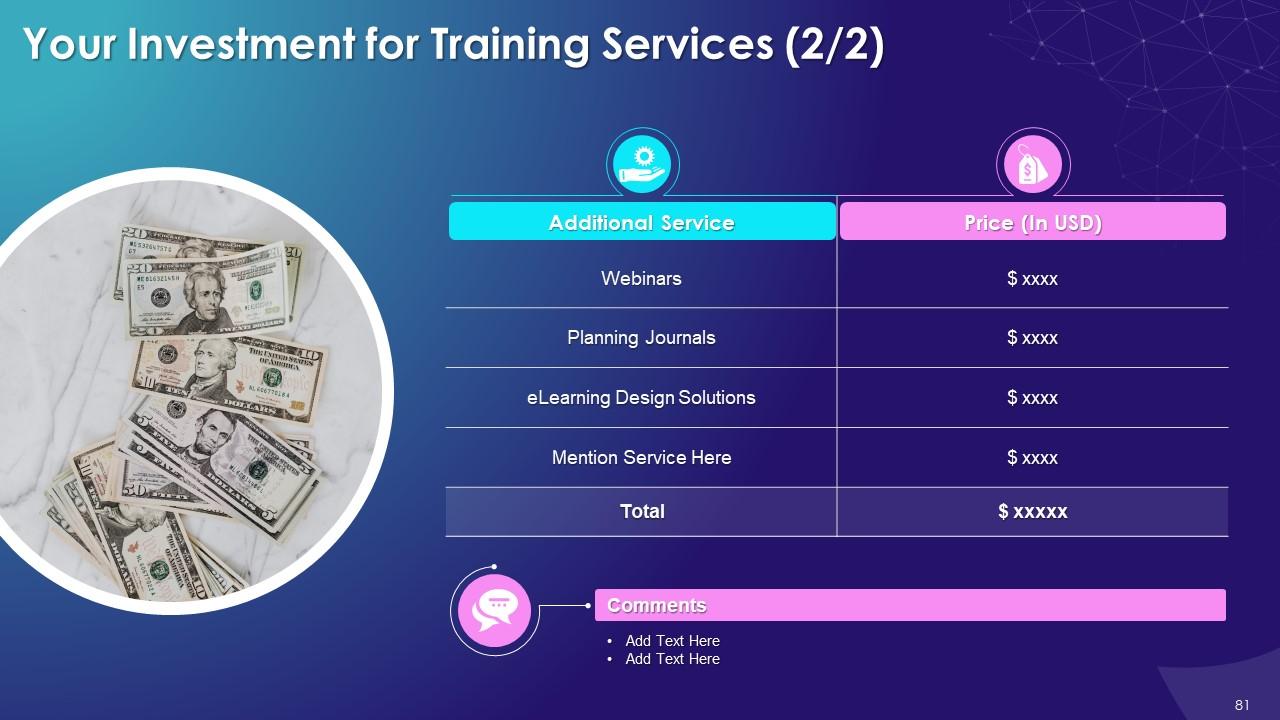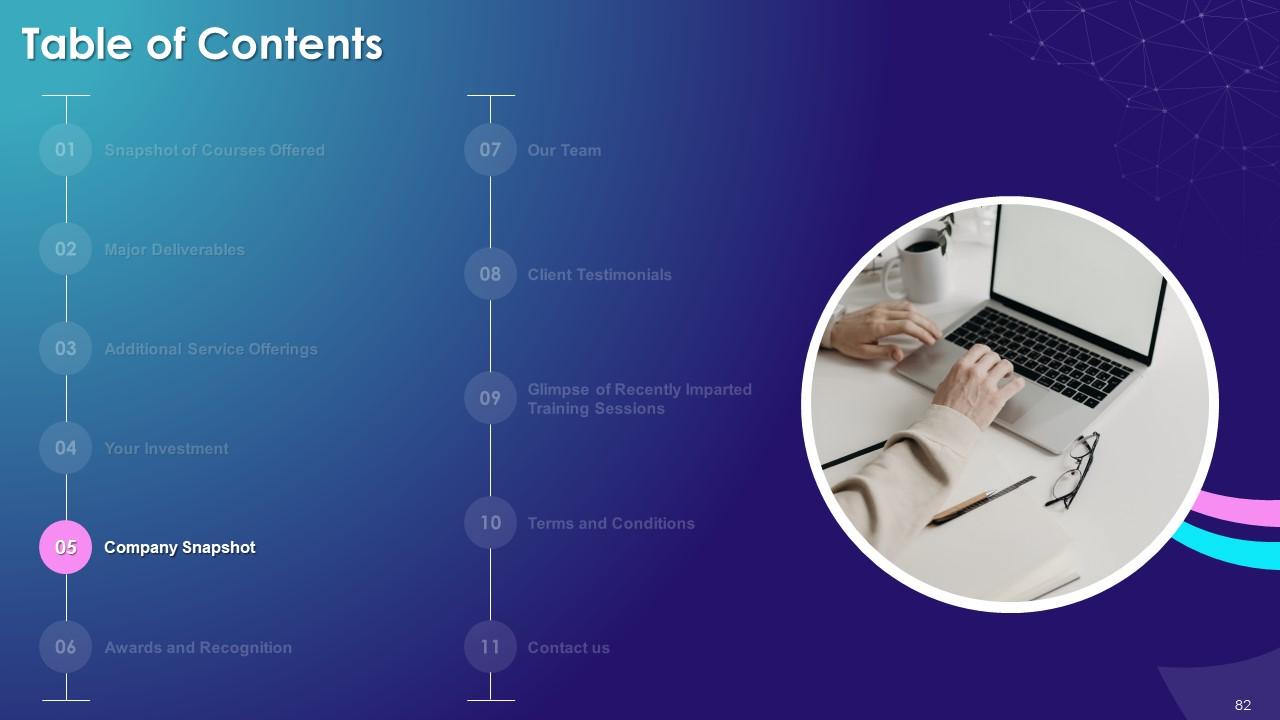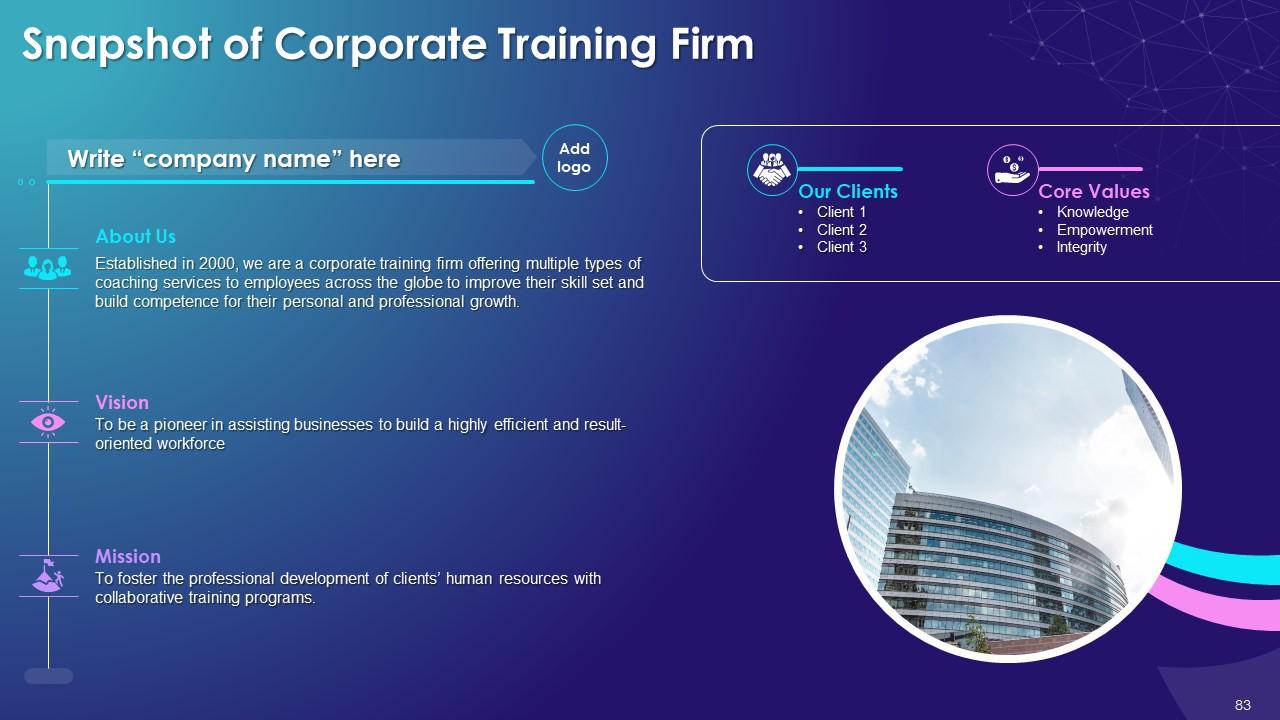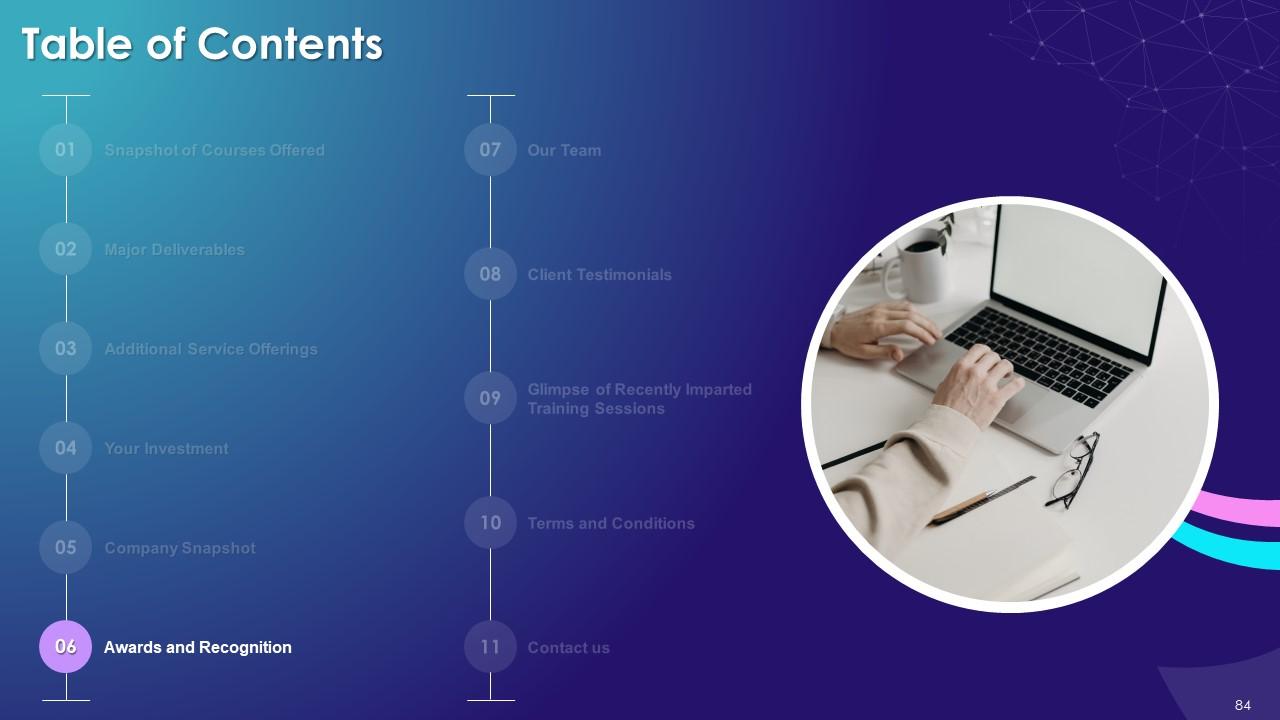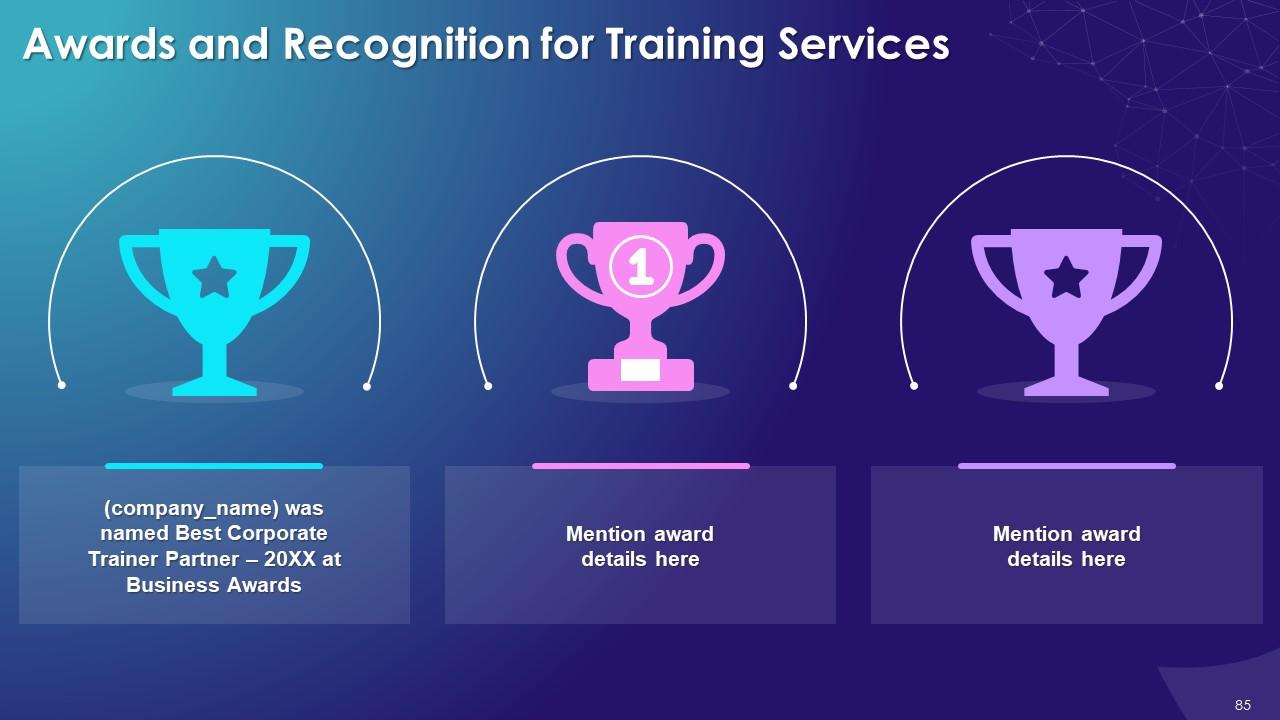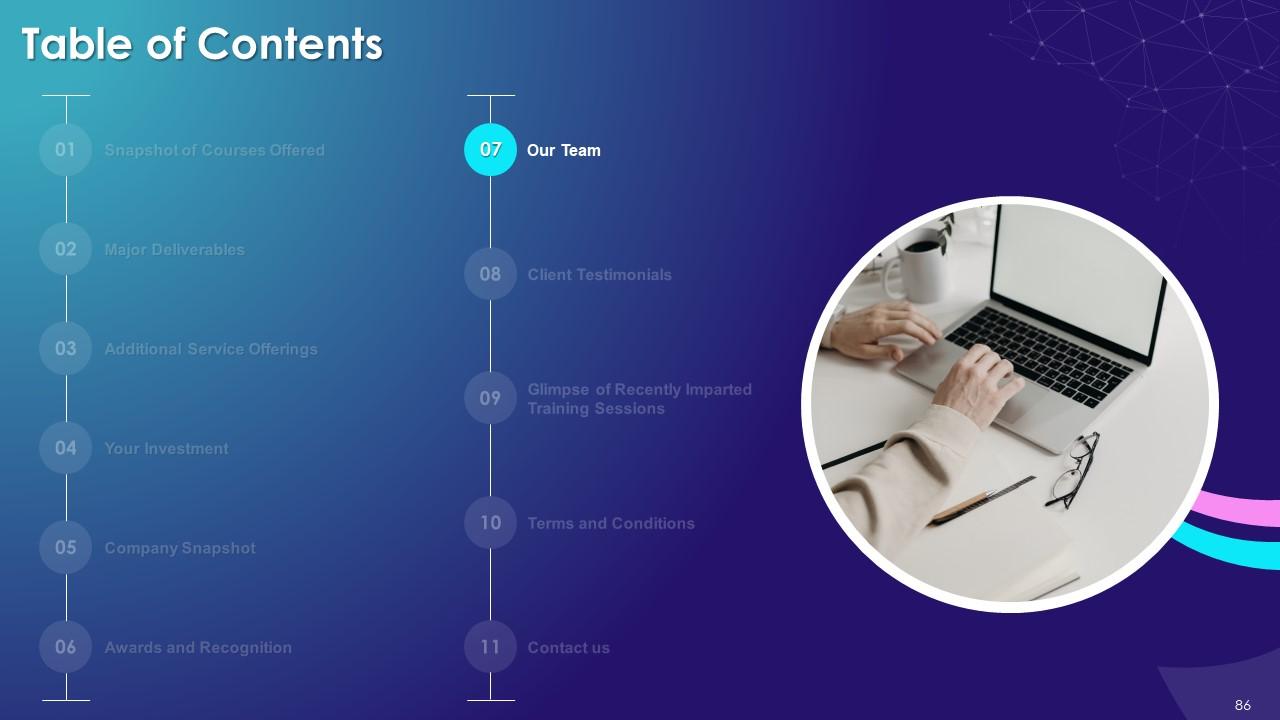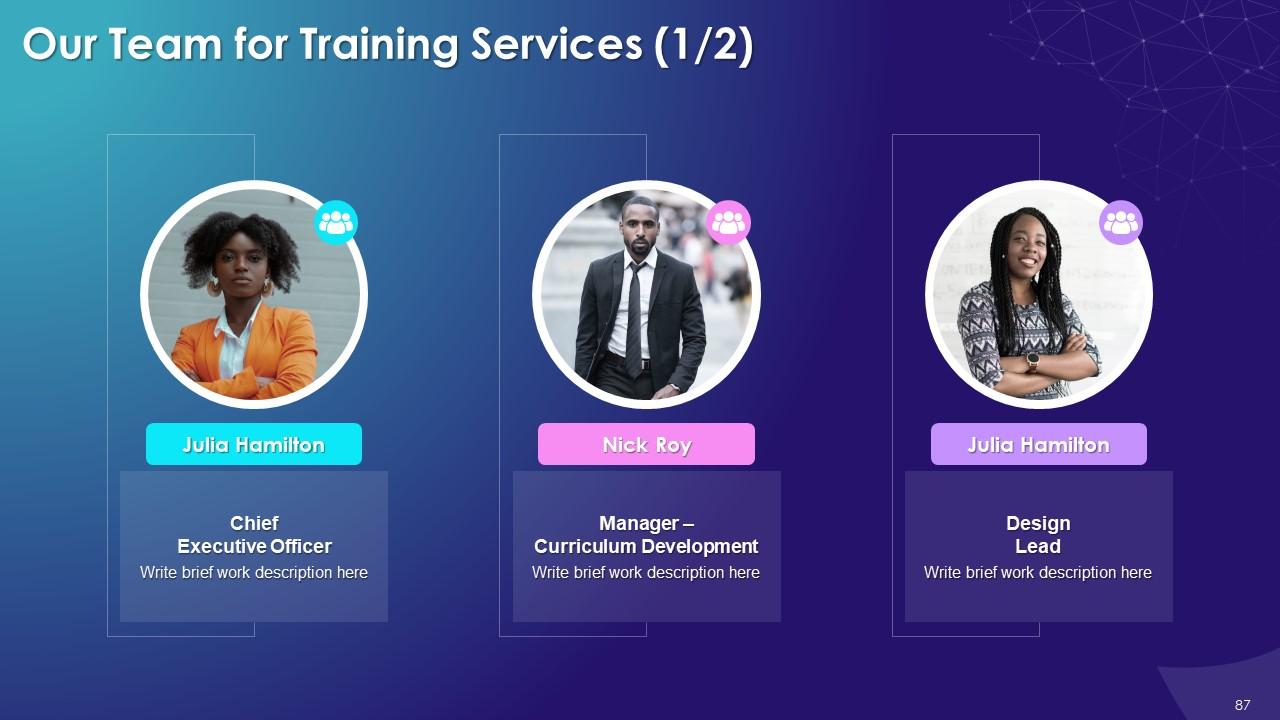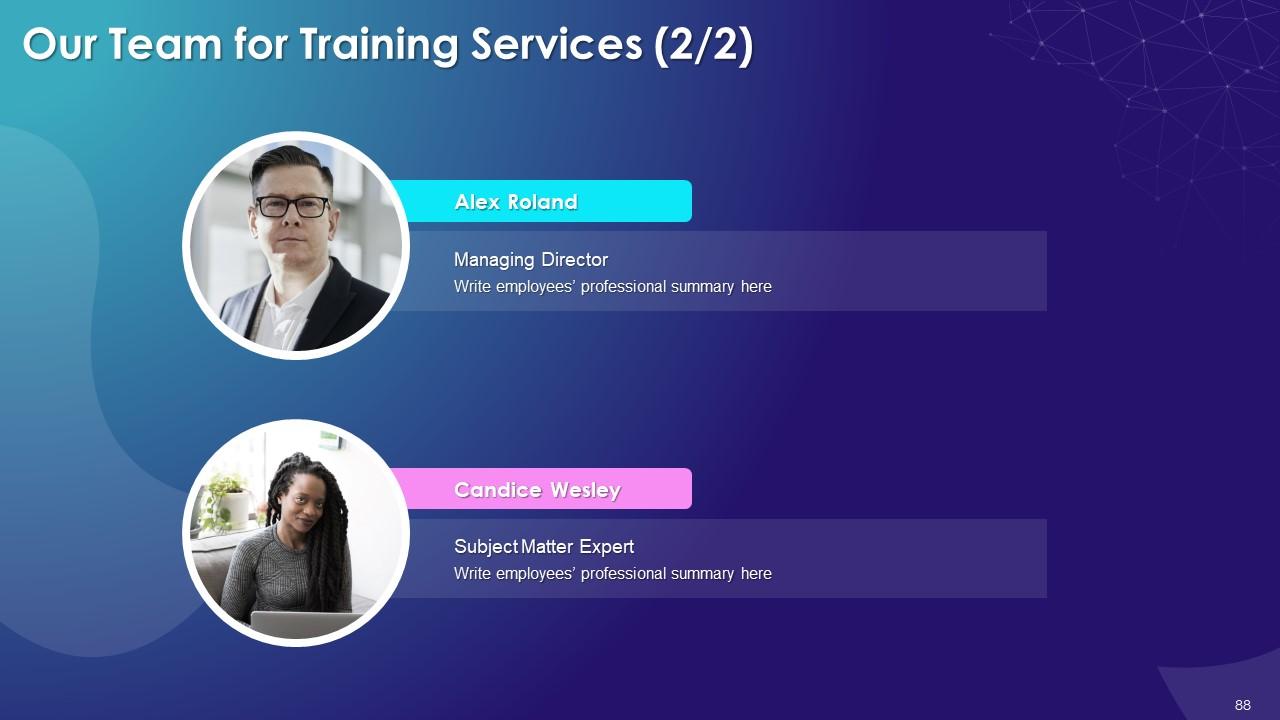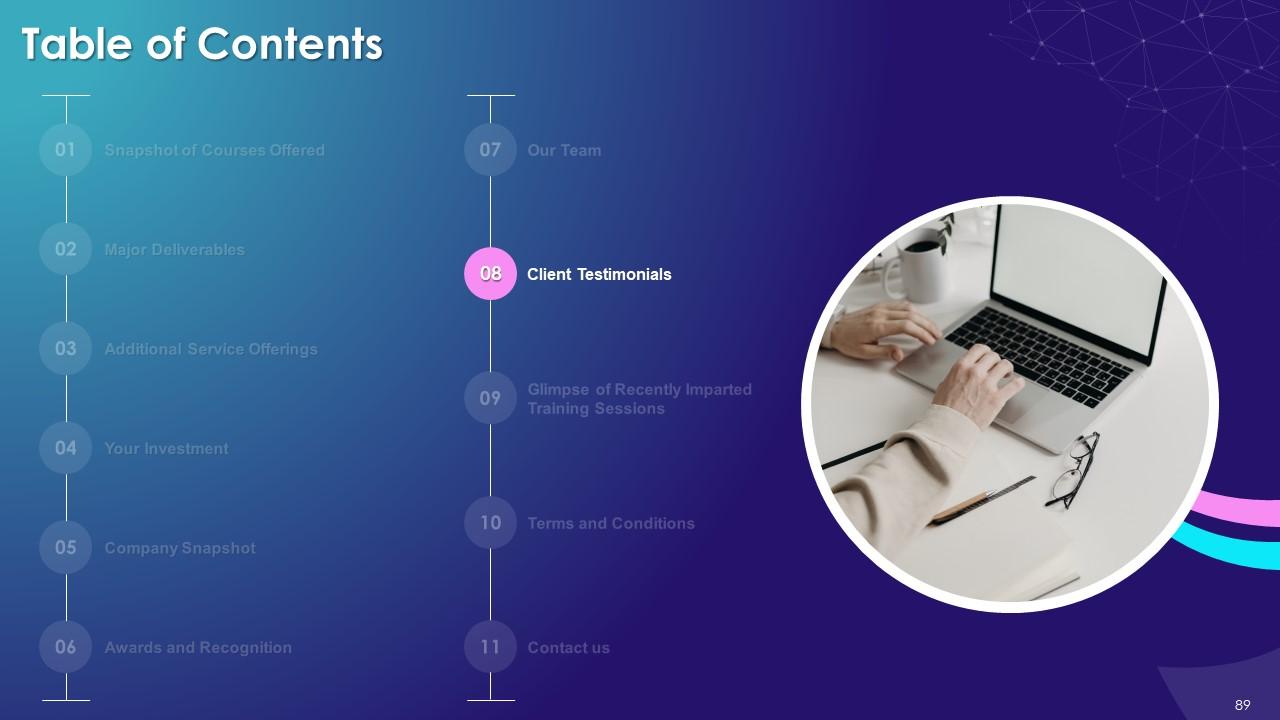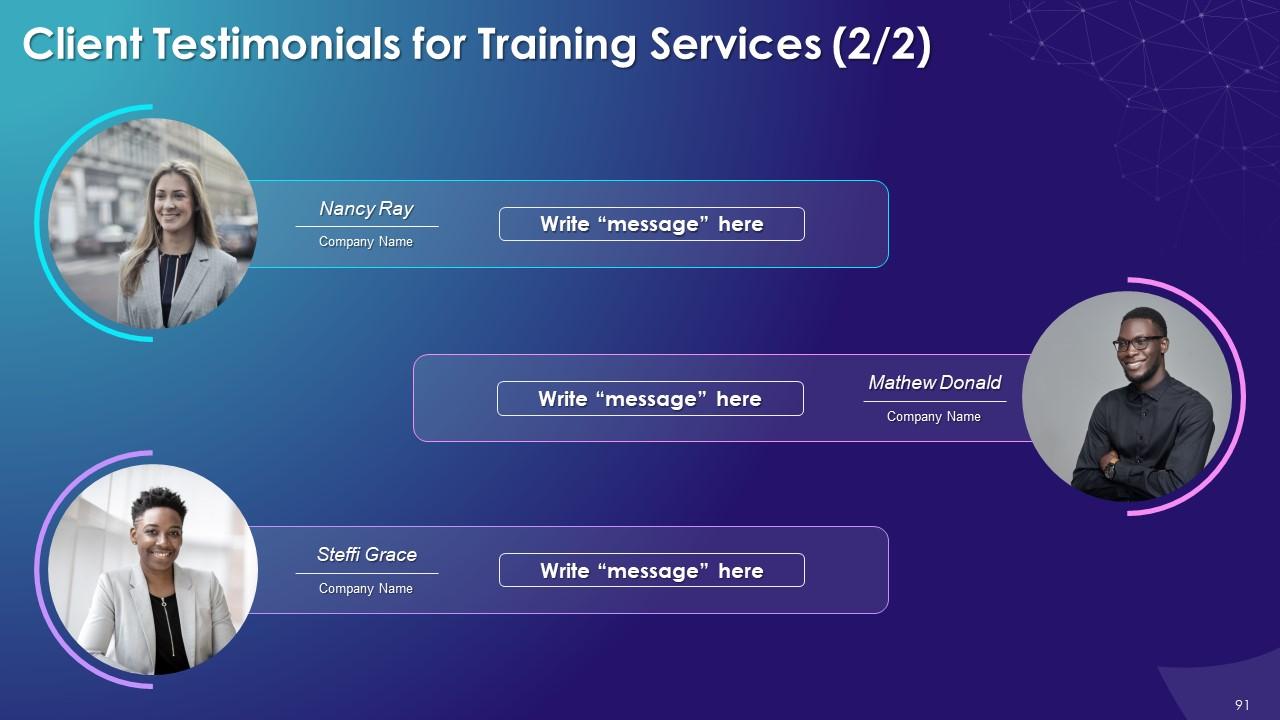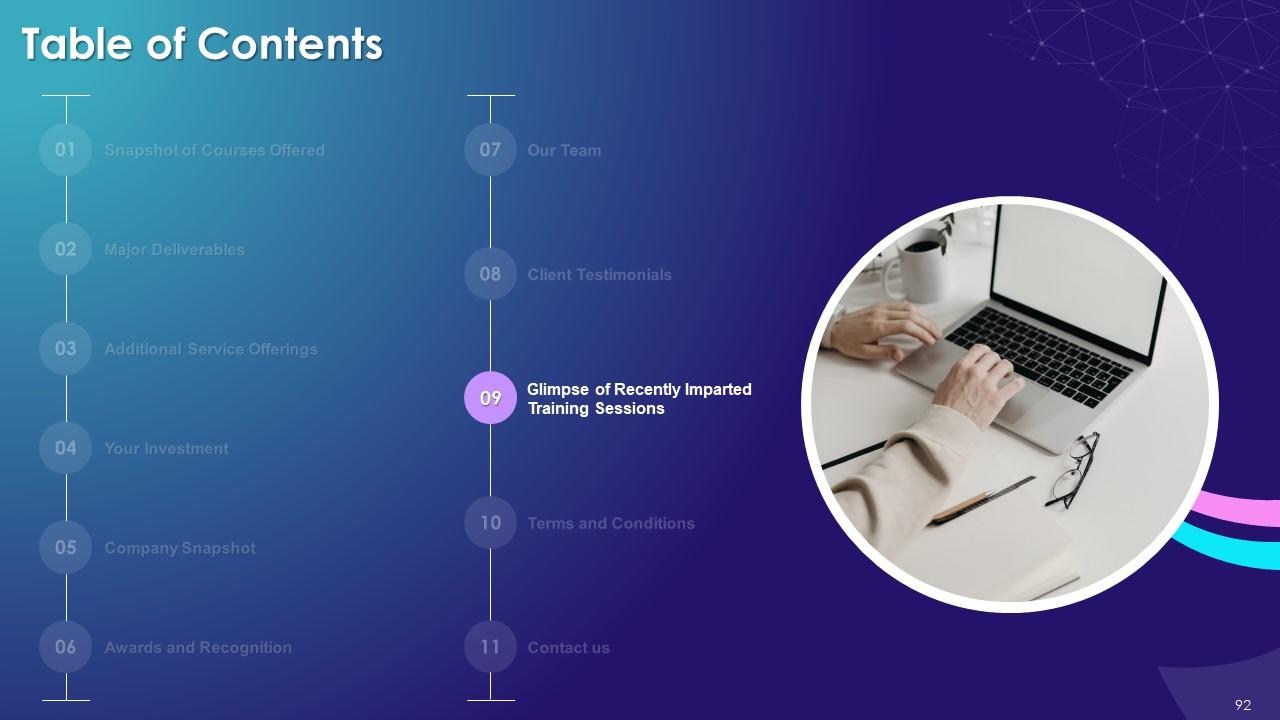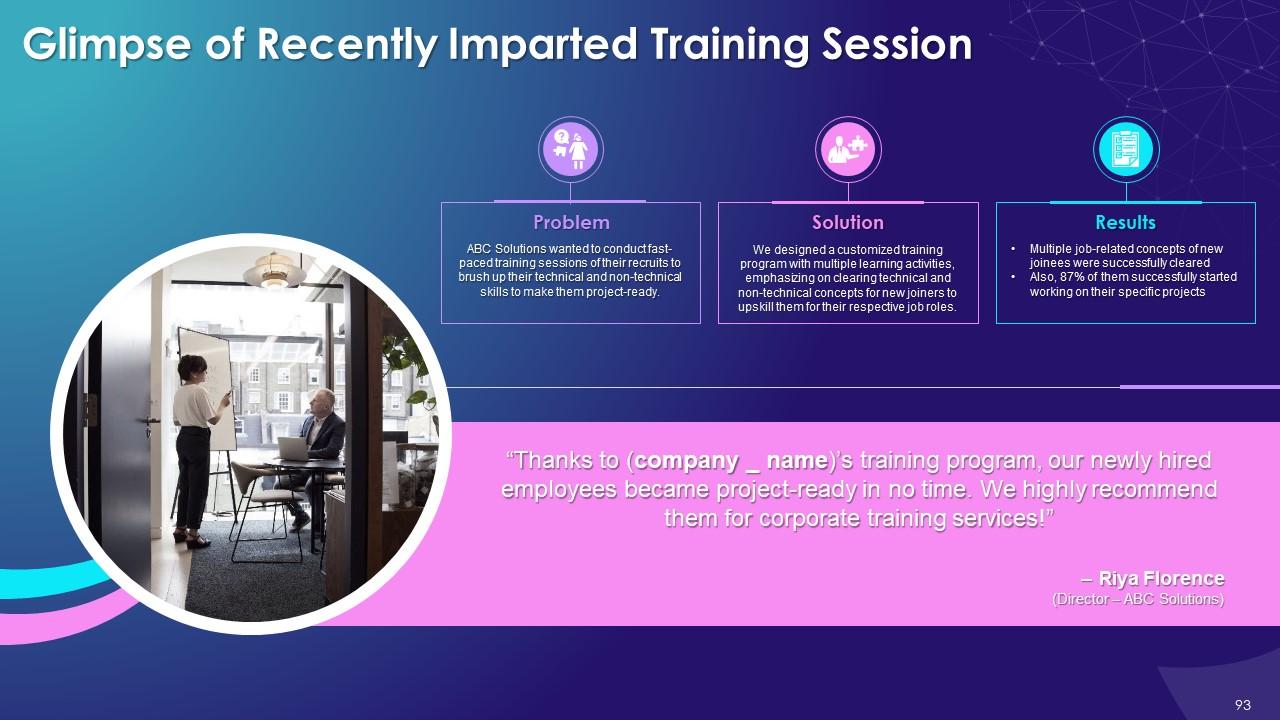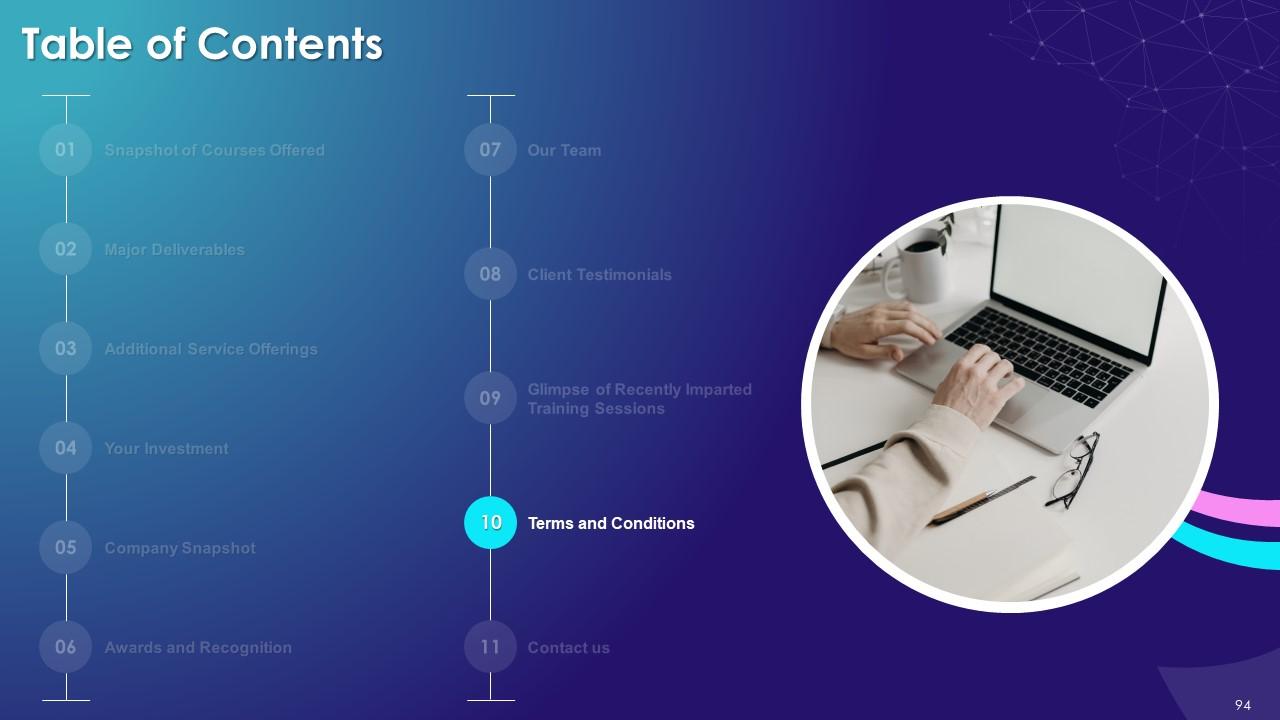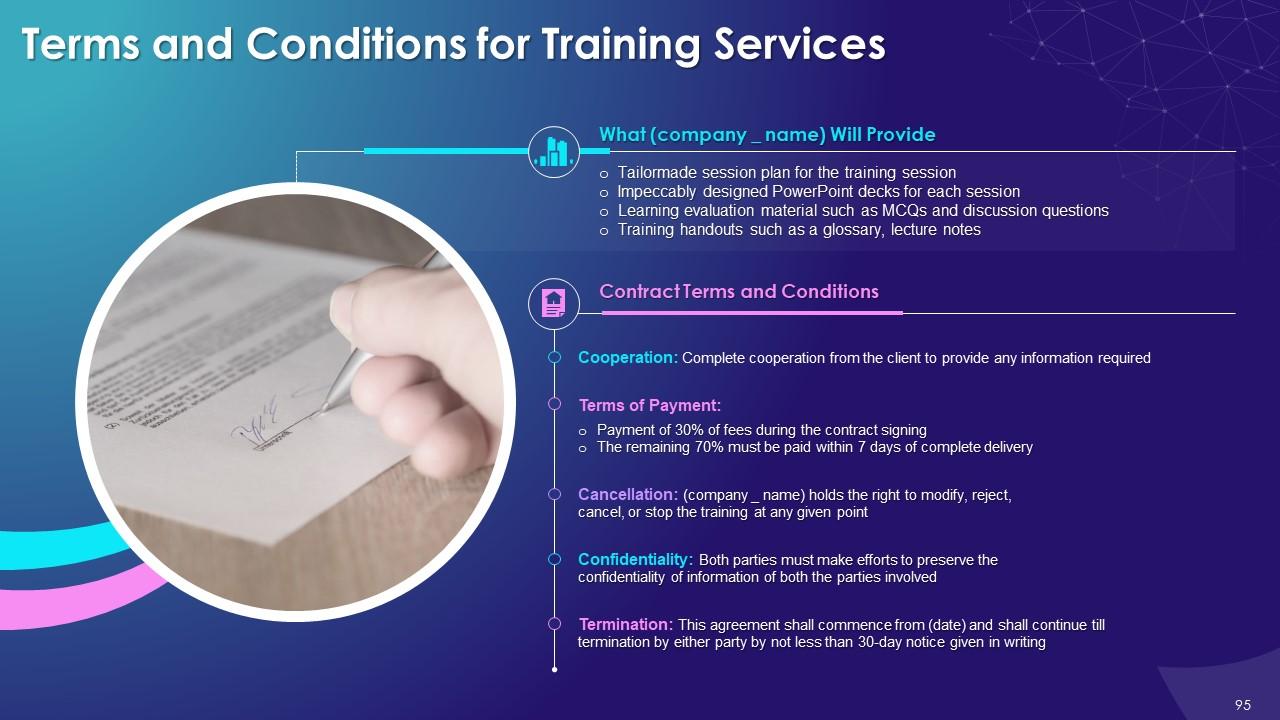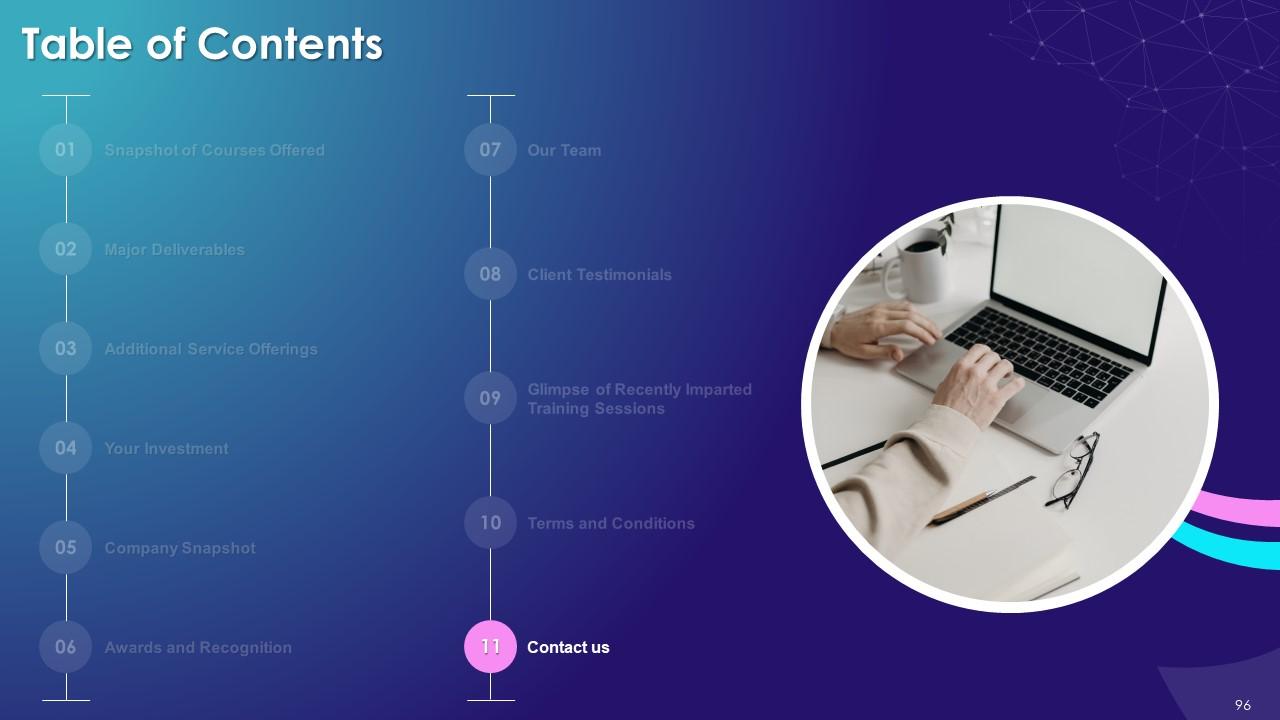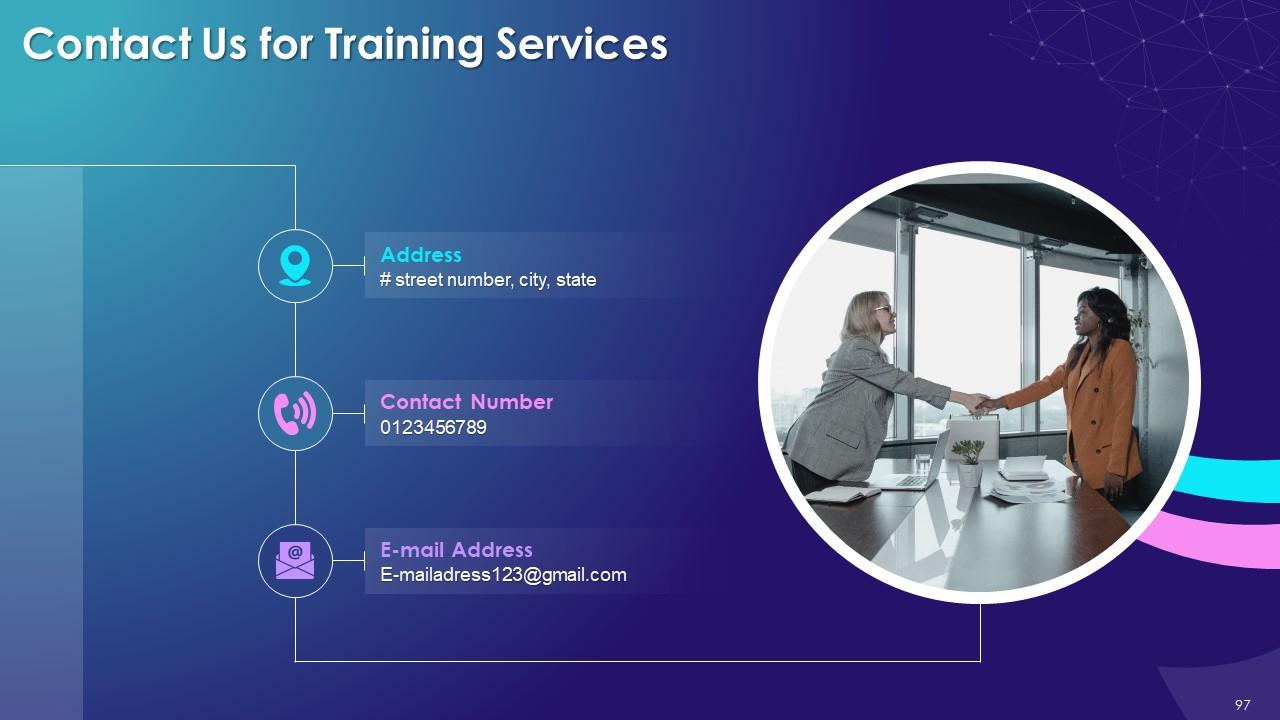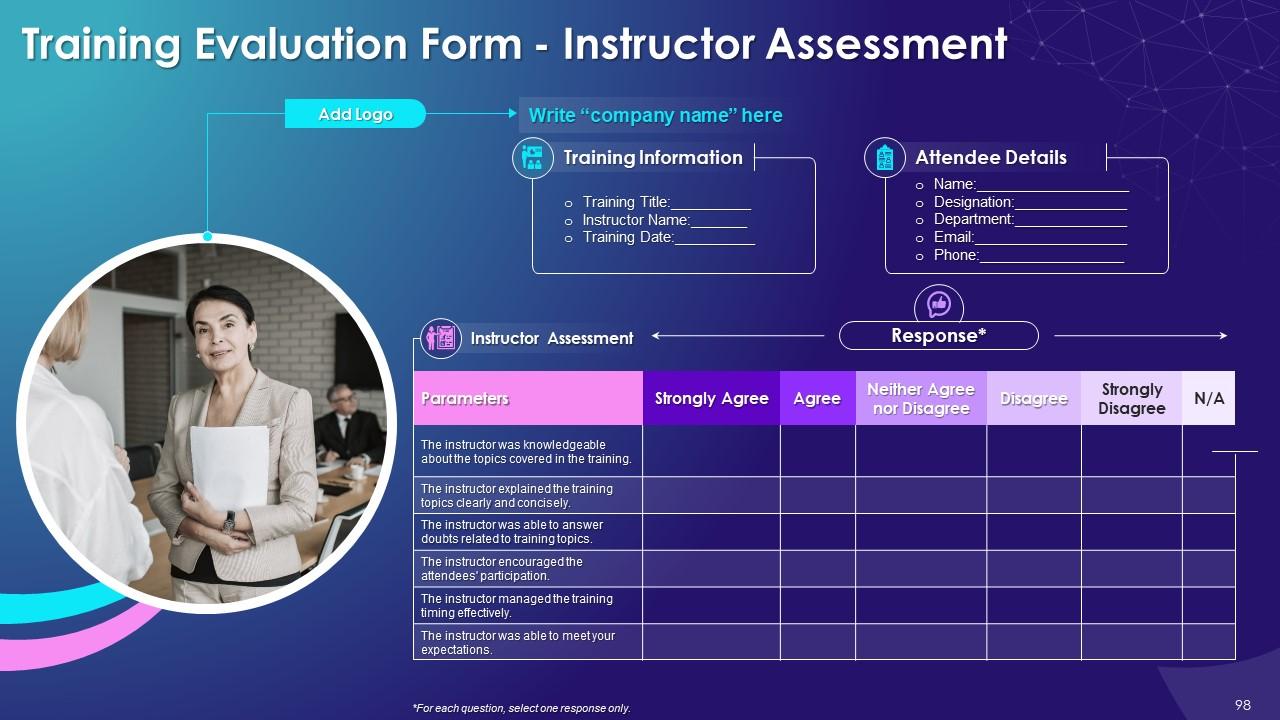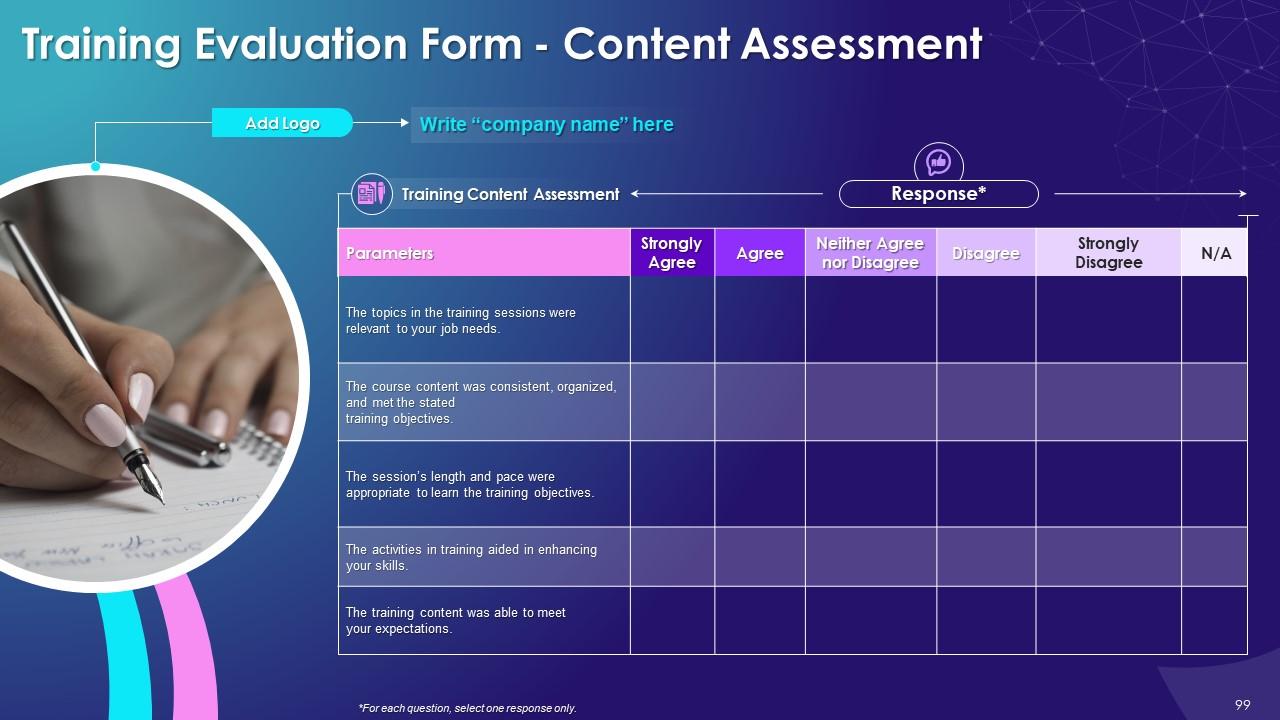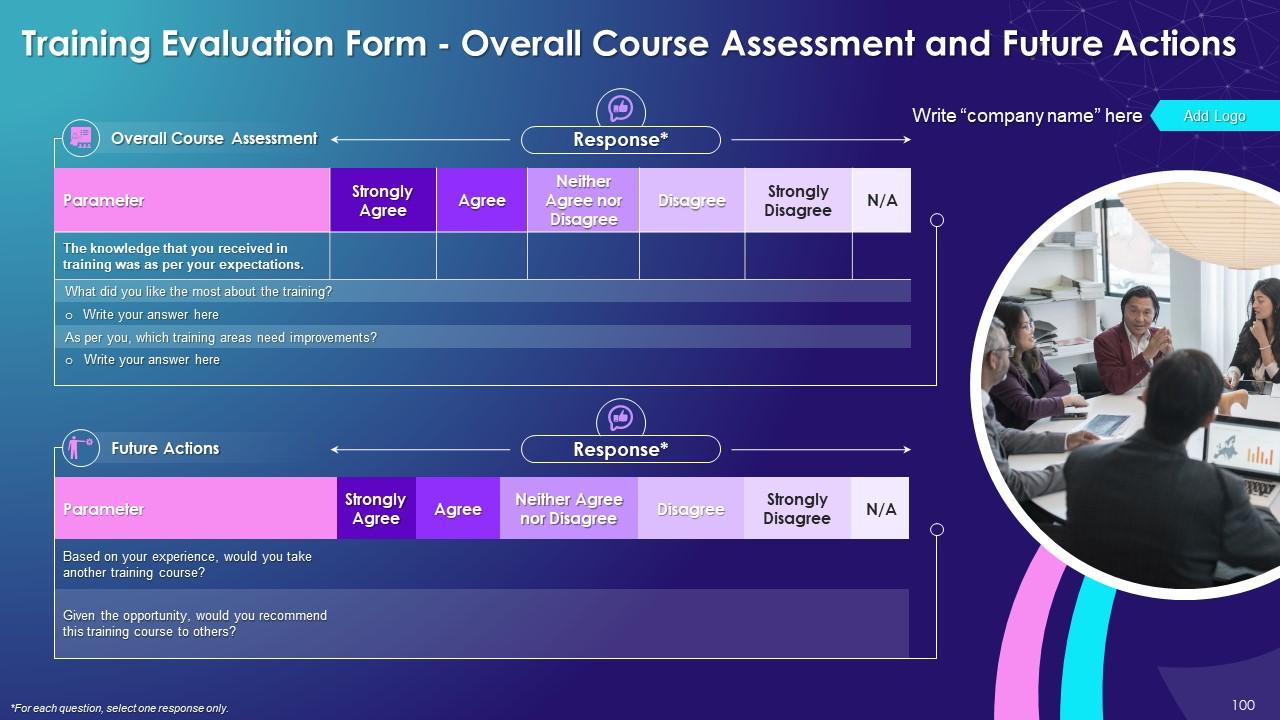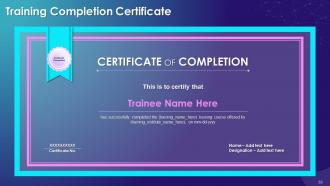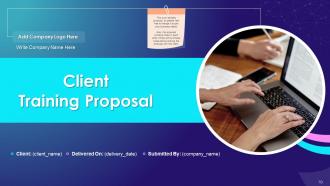Blockchain Technology Applications in Supply Chain Management Training Ppt
This PowerPoint training deck in-depth covers the application of blockchain technology in supply chain management. It includes challenges of traditional supply chain management which are poor transparency, limited cross-process visibility, and lack of traceability. It contains blockchain technology benefits for SCM in terms of cost reduction, improved security, global compatibility, and provenance. The PowerPoint module has relevant use cases, case studies, and blockchain technology implementation roadmap in the supply chain. It has a framework for the blockchain-based supply chain and blockchain as a service BaaS. It also includes the discussion and multiple-choice questions related to the topic to make the training session interactive. Further, our supply chain management ppt contains additional slides on about us, vision, mission, goal, 30-60-90 days plan, timeline, roadmap, training completion certificate, energizer activities, detailed client proposal, and training assessment form.
- Google Slides is a new FREE Presentation software from Google.
- All our content is 100% compatible with Google Slides.
- Just download our designs, and upload them to Google Slides and they will work automatically.
- Amaze your audience with SlideTeam and Google Slides.
-
Want Changes to This PPT Slide? Check out our Presentation Design Services
- WideScreen Aspect ratio is becoming a very popular format. When you download this product, the downloaded ZIP will contain this product in both standard and widescreen format.
-

- Some older products that we have may only be in standard format, but they can easily be converted to widescreen.
- To do this, please open the SlideTeam product in Powerpoint, and go to
- Design ( On the top bar) -> Page Setup -> and select "On-screen Show (16:9)” in the drop down for "Slides Sized for".
- The slide or theme will change to widescreen, and all graphics will adjust automatically. You can similarly convert our content to any other desired screen aspect ratio.
Compatible With Google Slides

Get This In WideScreen
You must be logged in to download this presentation.
PowerPoint presentation slides
Presenting Training Session on Blockchain Technology Applications in Supply Chain Management. This presentation deck contains 100 plus well researched and uniquely designed slides. These slides are 100 percent made in PowerPoint and are compatible with all screen types and monitors. They also support Google Slides. Premium Customer Support available. Suitable for use by managers, employees and organizations. These slides are easily customizable. You can edit the color, text, icon and font size to suit your requirements.
People who downloaded this PowerPoint presentation also viewed the following :
Content of this Powerpoint Presentation
Slide 4
This slide provides information about the definition of supply chain which is a network that connects a company's suppliers in order to manufacture and distribute a certain product or service. Producers, vendors, warehouses, transportation companies, distribution hubs, and retailers are all part of the supply chain network.
Slide 5
This slide gives an overview of how supply chain management works; the entire journey of how a product reaches the consumer. The management of a supply chain entails the movement and storage of raw materials, work-in-process inventories and finished goods between enterprises and locations.
Slide 6
This slide illustrates the different stages required for developing an efficient and effective supply chain starting from the planning and execution to returns.
Instructor’s Notes:
- Plan: Plan & manage all resources required to meet customer demand for a company’s product or service
- Source: Choose suppliers to provide the goods and services needed to create the product. Key processes are ordering, receiving, managing inventory and authorizing supplier payments
- Execute: Organize the activities required to accept raw materials, manufacture the product, test for quality, package for shipping, and schedule for delivery
- Deliver: Coordinate customer orders, schedule deliveries, dispatch loads, invoice customers, and receive payments
- Return: Create a network or process to take back defective, excess or unwanted products
Slide 7
This slide illustrates the most common KPIs that are used for monitoring the supply chain such as; daily performance, cost reduction, production service rate, inventory turn, production time, lead time, return rate and return on assets.
Slide 8
This slide contains some statistics of companies with respect to the visibility, accuracy, and amount of technology used to monitor supply chain management.
Slide 9
This slide covers the major limitations of the traditional supply chain management and the problems such as transparency, cross process visibility, traceability, globalization that are needed to be overcome within the system.
Instructor’s Notes:
- Transparency: Due to multiple separate players in the chain, transparency takes a hit as each contains & controls a certain amount of data pertaining to what they add to the supply chain
- Traceability: Sharing information across the supply chain is difficult due to a lack of uniform data and digital capabilities, which leads to traceability problems
- Limited Cross-process visibility: It is difficult to have a broad understanding of the complete supply chain because multiple separate layers and different sets of data make cross-process visibility difficult
- Globalization: As the world becomes more globalized with different players in different parts of the world, it may change how a product is delivered, affecting the goal of maintaining high performance supply chains
Slide 11
This slide showcases the basic definition of blockchain and also states that it is a digital ledger which is immutable and is a decentralized network.
Slide 12
This slide provides an insight into the working of blockchain technology. Starting from how a request for transaction is made to how the validated transaction is added to the blockchain.
Slide 13
This slide lists the benefits of blockchain network such as enhanced security, cost reductions, immutability etc.
Instructor’s Notes:
- Transparency: After a block is validated, each node in the blockchain keeps a copy of the transaction that can be accessed by any node on the network in future, thereby increasing transparency
- Enhanced security: Blockchain generates an irrevocable record of transactions with end-to-end encryption, preventing fraud and unauthorized conduct
- Reduced costs: Organizations can save a lot of money by embracing blockchain to reduce costs connected with third-party vendors as there is no centralized authority
- Improved speed and efficiency: The digital ledger provide a single place to store all transactions which results in simplification of processes
- Traceability: Blockchain-based traceability has the potential to detect counterfeits or forged transactions, as well as track and trace the origin of products
- Immutability: With end-to-end encryption, blockchain creates an irreversible record of transactions, eliminating fraud and illegal activity
Slide 15
This slide depicts the foundation pillars of blockchain in the supply chain management such as traceability, transparency and tradability.
Instructor’s Notes:
- Traceability: Global supply networks must be capable of handling essentially any situation, including consumer packaged goods and product recalls. In some circumstances, companies are forced to recall consumer items or raw materials to prevent diseases or injuries. Consumer product recalls, on the other hand, can have a detrimental impact on millions of people all over the world. A supply chain’s transparency enables quicker and more efficient recalls. Blockchain aids in the verification of a product's accurate and ethical sourcing, reducing the risk of counterfeiting. Blockchain's immutability allows for a transparent verification of certifications, legal papers, and other data
- Transparency: Process tracking, as well as reporting and regulatory compliance, are all possible with blockchain. Estimates suggest that replacing traditional methods with blockchain could increase transaction volumes. Blockchain technology allows you to track digital or physical products throughout their lifecycle. Blockchain adds transparency to process tracking, giving manufacturers a bird's-eye view of their whole value chain. It can assist in asset tracking and record and display past asset records. Improved regulatory compliance and reporting are other prospective benefits. Providing stakeholders with reliable, relevant, and unedited information in real-time could improve corporate governance. It can also ensure that data is delivered to the right people at the right time
- Tradability: In addition to supply chain management, blockchain’s application in the areas of asset ownership and licensing could boost efficiency. Verifying previous ownership through established licensing procedures is important in many sectors. Blockchain might also be used to automate smart contract payments for accurate service, software, and product licensing. One of the most notable advantages is the ability to reach consensus. Every entity on the blockchain has access to the same version of the ledger, making it easier to monitor ownership
Slide 16
This slide covers the multistep process of blending the blockchain technology into the supply chain network. The major steps highlighted are develop, plan, source, make, deliver and return.
Instructor’s Notes:
- Develop: Obtain greater access to source material data in order to better advise material selection in research and development and enable closed loop design
- Plan: Increase chances for suppliers and customers to collaborate on planning, lowering forecast and inventory risk
- Source: Reduce sourcing and operational costs by replacing paper with smart contracts and blockchain transactions; support business efforts by providing transparent sourcing
- Make: Make outsourced production more visible and compliant
- Deliver: Offer a comprehensive image of all product phases along the supply chain path to regulators and end customers
- Return: Based on information capability, choose which batch to recall
Slide 17
This slide showcases the information and product flow through the supply chain at different stages such as supplier, manufacturer, regulator, logistics, wholesaler, retailer and consumer and how data pertaining to every stage of the chain is recorded on the blockchain.
Instructor’s Notes:
- Supplier: Ensures ethical sourcing
- Manufacturer: Data transparency is achieved through the presence of a single shared ledger
- Regulator: There is a reduced need for regulators as quality control is ensured throughout the supply chain with the help of smart contracts
- Logistics: The provision of automated real-time updates for transportation
- Wholesaler: Management of stocks based on real-time data
- Retailer: Authenticity and assurance of product provenance
- Consumer: Insight into the supply chain allows for more informed decision making
Slide 18
This slide highlights the key features of a blockchain based supply chain that solves the problems being faced in traditional supply chain management. The listed benefits are cost reduction, improved security, making the supply chain ethical, global compatibility, accelerated process, and provenance.
Instructor’s Notes:
- Transactional cost reduction: At its most basic level, the capacity of blockchain-based cryptocurrencies to facilitate cross-border cash transfers without the use of banks means that blockchain technology in the supply chain can accelerate payments while cutting expenses
- Enhanced security: Blockchain technology is made up of secure "blocks." These are clones of the document, preserved chronologically and linked to preceding blocks. This makes them highly secure and difficult to forge. A hacker would have to make changes to hundreds of copies at once, which is practically impossible to do without the software noticing. Blockchain is an excellent method for protecting your supply chain information from cyber threats
- Making supply chain ethical: Ethical sourcing is a big concern for consumers because of global awareness around blood diamonds and sweat-shops. Consumers want to know more about the origins of their goods and the firms' operations that make them. This has prompted interest in developing an ethical supply chain
- Global compatibility: Raw materials and final products flow through more third-party hands than ever before as the global supply chain expands.
- As a result of items moving through so many different third-party providers, safety risks may arise that are hard to identify and track. As a product travels through the global supply chain to its end destination, blockchain delivers real-time updates to address this issue
- Accelerated process: Blockchain technology, in principle, ensures the integrity of data and transactions. There are fewer errors and disagreements. The necessity for product recalls, or order refills are decreased, which speeds up the entire process. The usage of smart contracts minimizes the necessity for intermediaries or third parties
- Provenance: Provenance is the verified history of ownership, custody, and origin of a specific product such as a lot, a batch, or a serial number in the realm of the supply chain. The transparent structure of blockchain enables an audit of a work of art's provenance and ownership history
Slide 19
This slide tabulates a comparison between the traditional supply chain and blockchain based supply chain with the major parameters being data integrity, data security, data verification and government regulations.
Slide 20
This slide highlights the drawbacks of implementing blockchain in supply chain such as throughput & performance, permissioned blockchains, standardization and data privacy.
Instructor’s Notes:
- Throughput & Performance: Each transaction in a blockchain network is authorized by all or a majority of nodes due to its decentralized nature. The throughput of a blockchain network is limited by this approval process. A private blockchain-based supply chain network, on the other hand, must process hundreds of transactions per second for the entire system to function. Hence, improving the transaction throughput of blockchain technology is critical for full scalability. Fortunately, private blockchains have a better throughput capacity and can overcome this challenge
- Permissioned Blockchains: Since supply chain data can be confidential, a permissioned blockchain (one that isn't exposed to the general public) is frequently preferable. A permissioned system, on the other hand, is less secure because the blockchain is made up of fewer nodes, and those nodes are often known to each other, making it easier to collude to modify a block
- Standardization: A lack of standardization hampers a blockchain-based supply chain. In essence, this technology provides a universal platform for the sharing and permanent preservation of digital material. Surprisingly, a significant challenge persists: what information and format should be used for transactional data that allows all participants to read it easily? The supply chain community must adopt and agree on a data standard
- Data Privacy: When used in supply chains, the immutability and visibility of blockchain technology raise concerns about data privacy. Because data saved in blockchains cannot be modified, building a dependable process that preserves users' privacy is critical. In a public blockchain network, balancing an individual's right to privacy is a difficult task
Slide 22
This slide illustrates the need for a blockchain based food supply chain and how it can be used within the food industry to improve efficiency and effectiveness.
Instructor’s Notes:
- Blockchain food supply chain: It is considerably more linked and visible, allowing for a high level of visibility from the farmer to the end-user. Blockchains can help with new operations such as extensive data analysis and automated data acquisition in addition to fundamental production, distribution, and retailing
Slide 23
The creation of a revolutionary blockchain platform for world trade execution is part of LDC's collaborative effort with industry peers to modernize global agri-commodities trade operations. The company finished its pilot programme effectively and has now implemented blockchain for traceability purposes.
Instructor’s Notes:
- Aim: ADM, Bunge, Cargill, and LDC are first focusing on technologies to automate grain and oilseed post-trade execution activities, which are a very laborious and costly aspect of the supply chain. With the industry spending considerable sums of money every year sending papers around the world, lower document processing times, shorter wait times, and improved end-to-end contracting visibility would all result from eliminating inefficiencies.
- Future Goals: Greater visibility throughout the supply chain movements supporting transactions, resulting in lower costs associated with shipping, storage, and wait periods
- Improved quality and dependability of documents and data, with decreased review time and smooth transmission of transaction data to customers
- Standardized data employing technologies available to all participants, resulting in increased efficiencies
- Increased efficiency and transparency, allowing the company to serve its customers and consumers better
- Compatibility with various apps providing electronic and digital solutions, giving an end-to-end experience for users
Slide 24
This slide illustrates how Walmart recognized its need to make the company’s food supply chain blockchain based. The slide talks about the approach of the organization towards the new technology and the two cases of pork and mangoes to test the theory based on Hyperledger Fabric. It also depicts how the concept of IBM food trust in collaboration with Walmart came into being.
Instructor’s Notes:
- Approach: To test the system, Walmart and IBM collaborated on two proof-of-concept initiatives. One experiment intended to track mangoes sold in Walmart stores in the United States, while the other was to track pork sold in Walmart stores in China
- Results: It enabled the uploading of certificates of integrity to the blockchain for pork in China, providing additional credibility to a system where trust was previously a significant concern. And the time it took to track the provenance of mangoes in the United States fell from 7 days to 2.2 seconds!
Slide 25
This slide lists the food products that Walmart is tracking with the Hyperledger Fabric these days. It also talks about the future goals of the company in collaboration with IBM Blockchain to track food products.
Instructor’s Notes:
- Looking forward: In collaboration with IBM Food Trust, Walmart is expanding the system to new items and sectors. In fact, the firm just announced that it would begin mandating all of its fresh leafy greens (such as salad and spinach) suppliers to use the system to track their products
Slide 26
This slide defines IBM’s Food Trust and its main aim behind it. It also lists the features that enhance the food supply chain network, such as supply chain efficiency, brand trust, food safety, sustainability, food freshness, fraud, and wastage.
Instructor’s Notes:
- What is food trust: The food trust system provides authorized users instant access to actionable data on the food supply chain, from farm to store to consumer. Once uploaded on the blockchain, any individual food item's whole history and current location, as well as associated information such as licenses, test results, and temperature data, are instantly available
Benefits:
- Supply chain efficiency: The inefficiency of the food industry is a worldwide issue, and there are endless ways to lose efficiency and revenues when there are so many participants. A blockchain-powered shared food supply chain allows supply chain participants to better communicate with one another, operating more effectively and embracing change
- Brand trust: Customers have more options than ever before regarding where they buy their food. In such a cutthroat food sector, brand distinctiveness is critical to being at the top of consumers' minds while making purchase decisions. Because blockchain allows for complete transparency, consumers, manufacturers, and distributors all have faith and trust in the firms from whom we buy and consume our food
- Food safety: Food recalls are a significant safety issue and a danger to profits. Participants in a digital food system have access to data that can help them enhance food safety and become more proactive in improving the food network in general
- Sustainability: Consumers across the globe want information about their food. Therefore, sustainability is no longer a perk; it is now a need for both customers and future business models. Blockchain is raising awareness of sustainability options and practices throughout the food chain
- Food freshness: The desire for fresh food isn't just a passing craze. Retailers will be able to deliver fresher options (with longer shelf lives) to their customers due to blockchain's complete transparency throughout the food ecosystem, resulting in lower product loss and higher margins
- Food fraud: Food fraud continues to thrive, owing to the complexity of today's global food chain. The visibility across the network eliminates the possibility of food-chain fraud
- Food wastage: The worldwide mission to eliminate food waste has gathered public support, but there is still a long way to go. Participants in the network can now better track the amount of food wasted and retrieved thanks to a digital food system
Slide 28
This slide describes the various types of blockchains and how they can be categorized into either permissionless or permissioned or both and further classified into public, hybrid, private, and consortium.
Instructor’s Notes:
- Permissionless vs Permissioned: Permissionless blockchains permit any user to join the blockchain network pseudo-anonymously and do not limit the rights of the nodes within the network. Permissioned blockchains, on the other hand, limit access to the network and may also restrict the rights of those nodes on the network. The identity of a permissioned blockchain's users is known to the other permissioned blockchain's users
- Public: Public blockchains are permissionless and completely decentralized, permitting anybody to participate. All blockchain nodes have equal rights to access the network, develop new data blocks, and authenticate them in public blockchains. Bitcoin and Ethereum are two examples
- Private: Private blockchains are permissioned and administered by a single entity. In this case, the central authority decides who is eligible to become a node. Furthermore, the central authority does not always grant each node equal rights to execute functions. Since public access to private blockchains is restricted, they are only partially decentralized. Ripple and Hyperledger are two examples
- Consortium: Consortium blockchains are permissioned and governed by a group of organizations rather than one entity. Hence, consortium blockchains have more decentralization than private blockchains, leading to enhanced security. Conversely, setting up consortiums can be complicated because it necessitates collaboration among many businesses, which poses logistical complexities and the risk of antitrust violations. Example: R3 Corda
- Hybrid: Hybrid blockchains are those that are managed by a single entity but have some oversight from the public blockchain that is necessary to conduct specific transaction validations. IBM Food Trust is an example of a hybrid blockchain created to improve efficiency across the whole food supply chain.
Slide 29
This slide differentiates between the public and private blockchains in two categories namely; characteristics and challenges. The pros are listed in terms of the following parameters: Transaction speed, efficiency, data handling, and immutability.
Slide 30
This slide illustrates the flow of decision making when you’re finding a suitable blockchain for your use. The first question you need to ask is whether only the owner/owner group can access the data or anyone in the network. In case of the former situation, a private blockchain is better since it is a permissioned ledger whereas the latter situation would raise another question, that is the write access. In case, only validated users and owners; a private blockchain and if any user, then a public network is suitable.
Slide 31
This slide depicts the multistep process of integrating blockchain technology into the supply chain. Starting with educating yourself and others about blockchain, including its benefits and limitations, to designing a solution and a Proof of Concept, and lastly, measuring the goals and developing the network.
Slide 33
This slide lists the companies that have adopted blockchain in their supply chains. As firms become more globalized, supply chain management solutions that are reliable and efficient are becoming increasingly important. Major IT companies are using it as it is a fraud-proof, irrevocable, secure technology that allows businesses and organizations to safeguard their transactions and manage their data without needing a central party mediator.
Instructor’s Notes:
- Walmart: The organization is able to develop a visible, traceable, and dependable food supply process with the use of hyperledger fabric. Walmart staff can track the source of food in seconds rather than days, thanks to technology. It also cuts down on paper waste, automates the process, and improves supply chain transparency
- Ford: To track cobalt supplies, Ford Motor Company uses Blockchain. Cobalt is regarded as a necessary component in electric vehicle batteries, and Ford intends to track its raw materials from suppliers with IBM's help. The automobile manufacturer wants to confirm that they are receiving an original product to preserve its quality. Whenever cobalt is mined, it will be recorded on the database, and the corporation will trace where it goes from there
- De Beers Group: The largest diamond exporter in the world by value, De Beers is using Blockchain technology to trace every natural diamond from mine to retail counter. The "Tracr" blockchain platform aids in the authentication of diamonds and ensures that they are not from conflict zones where jewels could be used to fund violence
- UPS: Another company that uses Blockchain in the supply chain is UPS. This logistics behemoth joined the Blockchain in Trucking Alliance (BiTA) in November 2018 in order to promote supply chain transparency for all parties involved. UPS has also filed for a patent that would enable the company to contain package destination, movement, mode of transport, and other critical data, assuring efficiency and transparency
- FedEx: FedEx, one of the world's major transportation companies, sees Blockchain, a single, uniform ledger, as an innovative solution for protecting their chain of custody and tracking their cargo. Clients will be able to obtain information quickly and reliably, and customer care representatives will be able to answer enquiries faster
Slide 34
This slide defines the concept of BaaS and its key takeaways along with the top BaaS providers and their blockchain supported platforms and cloud services.
Instructor’s Notes:
What is it: The usage of blockchain technology has expanded far beyond its most well-known application in bitcoin transactions to include secure transactions of all kinds. As a result, hosting services are in high demand.
Slide 35
This slide represents the roadmap for the successful implementation of the blockchain technology into the supply chain management. The key phases are platform selection, identifying & setting of goals, developing a PoC, building & trialing a prototype, and execution & observation of the roll out.
Slide 37
This slide lists the key takeaways from the training module on blockchain in supply chain management.
Slide 55 to 69
These slides depict energizer activities to engage the audience of the training session.
Slide 71 to 97
These slides consist of a client training proposal highlighting what the company providing corporate training can accomplish for the client.
Slide 98 to 100
These slides highlight the training evaluation form for instructor, content, and course assessment.
Blockchain Technology Applications in Supply Chain Management Training Ppt with all 105 slides:
Use our Blockchain Technology Applications in Supply Chain Management Training Ppt to effectively help you save your valuable time. They are readymade to fit into any presentation structure.
-
I’ve been your client for a few years now. Couldn’t be more than happy after using your templates. Thank you!
-
Satisfied with the way SlideTeam resolved my query regarding the right business PPTs that I was having difficulty finding. I found the perfect match with their assistance.


